#Fanny Rosen
Explore tagged Tumblr posts
Text

At long last, here is the official reading list for There'll Be Some Changes Made, and a few recommendations from some of the readers! It's long, so hopefully there's a little something for everyone.
Thank you again to the wonderful readers, both for your encouragement, and for helping me compile this list <3
Recommendations (Named Throughout TBSCM)
The Pearl - John Steinbeck The House in the Cerulean Sea - TJ Klune The Great Alone - Kristin Hannah The Picture of Dorian Gray - Oscar Wilde Upon the Blue Couch - Laurie Kolp In the Dream House - Carmen Maria Machado The Price of Salt - Patricia Highsmith Paradise Rot - Jenny Hval Tipping the Velvet - Sarah Waters Fingersmith - Sarah Waters Oranges Are Not the Only Fruit - Jeanette Winterson Rubyfruit Jungle - Rita Mae Brown Under the Udala Trees - Chinelo Okparanta In at the Deep End - Kate Davies Some Girls Do - Jennifer Dugan This is How You Lose the Time War - Amal El-Mohtar, Max Gladstone The Seven Husbands of Evelyn Hugo - Taylor Jenkins Reid Lavender House - Lev AC Rosen My Brilliant Friend - Elena Ferrante Fried Green Tomatoes at the Whistle Stop Cafe - Fannie Flagg Straight Jacket Winter - Esther DuQuette and Gilles Poulin-Denis
Source Books (Referenced, but not named)
The Odyssey - Homer The Yellow Wallpaper - Charlotte Perkins Gilman The Glass Menagerie - Tennessee Williams Hamlet - William Shakespeare The Great Gatsby - F. Scott Fitzgerald Come Along with Me - Shirley Jackson (unfinished novel) We Have Always Lived in the Castle - Shirley Jackson A Certain Hunger - Chelsea G. Summers The Poison Garden - AJ Banner
Honorable Mentions:
The Haunting of Hill House - Shirley Jackson Different Class - Joanne Harris The Lost Girls of Ireland (Book 1) - Susanne O’Leary The Girl Next Door - Jack Ketchum The Broken Girls - Simone St. James Dear Fahrenheit 451 - Annie Spence The Canterville Ghost - Oscar Wilde One Last Stop - Casey McQuiston Ash - Malinda Lo Everything Leads to You - Nina LaCour Camp Slaughter - Sergio Gomez The Silence of the Girls - Pat Barker The Metamorphosis - Franz Kafka A Slow Fire Burning - Paula Hawkins The Other Boleyn Girl - Philippa Gregory The Miseducation of Cameron Post - Emily M. Danforth Of Mice and Men - John Steinbeck
Banished (Under the Coffee Table) Books - DO NOT READ:
Ulysses - James Joyce Everything I Never Told You - Celeste Ng A Little Life - Hanya Yanagihara The Hunting Party - Lucy Foley My Sister’s Keeper - Jodi Picoult The Book Thief - Markus Zusak In the Darkroom - Susan Faludi Marley & Me - John Grogan
Recs from Fellow Readers
Things We Lost in the Fire - Marina Enriquez Her Body and Other Parties - Carmen Maria Machado The Well of Loneliness - Radclyffe Hall Stone Butch Blues - Leslie Feinberg Mouthful of Birds - Samantha Schweblin The Safety of Objects - A.M. Homes Crush - Richard Siken The Taming of the Shrew - Shakespeare I’ve Got a Time Bomb - Sybil Lamb The Thing Around Your Neck - Chimamanda Ngozi Adichie Last Night at the Telegraph Club - Malinda Lo Sadie - Courtney Summers The Messy Lives of Book People - Phaedra Patrick The Southern Book Club’s Guide to Slaying Vampires - Grady Hendrix The Final Girl Support Group - Grady Hendrix The Lying Lives of Adults - Elena Ferrante They Were Here Before Us - Eric LaRocca The Patience Stone - Atiq Rahimi Agamemnon - Aeschylus Rosencrantz and Guildenstern are Dead - Tom Stoppard Cat's Eye - Margaret Atwood Sor Juana Inés de la Cruz's poetry - (start with "You Foolish Men") The poems of Sappho - (“Anactoria”, the book of fragments, and “Goatherd” specifically)
#kcfh#kevin can fuck himself#kcfh fanfic#there'll be some changes made#tbscm#pattison#allison x patty#reading list
30 notes
·
View notes
Text
youtube
Fanny Hensel Mendelssohn (1805-1847) - 6 Lieder, Op. 1: III. Warum sind denn die Rosen so blass ·
Kitty Whately, mezzo soprano · Malcolm Martineau, piano ·
4 notes
·
View notes
Text
THE WINDSHIELD WIPER:
Satire segments
Search for love in modern age
How we’re kept apart
youtube
#the windshield wipers#random richards#poem#haiku#poetry#haiku poem#haiku poetry#poets on tumblr#haiku form#academy award winner#best animated short#short film#eboni adams#Fanny Rosen#Charlie bean#alberto mielgo#Andrew Calder#John duffin#Youtube
3 notes
·
View notes
Text
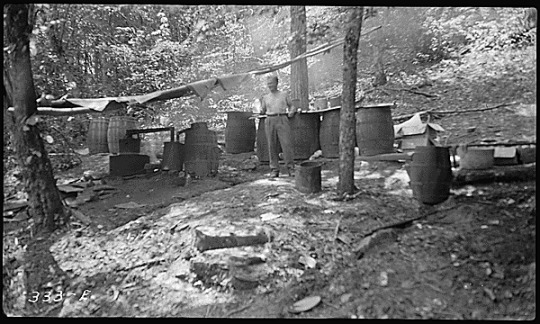
Moonshine Still 1936, Tennessee Valley Authority records, NARA ID 280136.
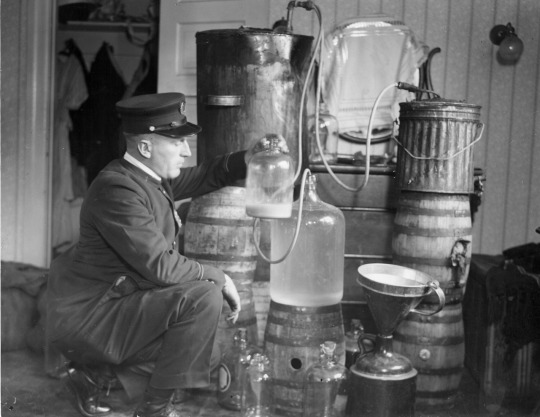
Busted! From USA vs. Fannie Rosen and Samuel Rosen, NARA ID 294957.
ICYMI: National MOONSHINE Day!
By Miriam Kleiman, Public Affairs
We belatedly honor #National Moonshine Day (June 2) with records from our inestimable holdings!
During prohibition, moonshine was manufactured not just in the rural Appalachia mountains, but even in the city of Los Angeles! No small feat given that fire is needed to heat the mash so the alcohol can turn into vapor, and the fire can spread rapidly. Just that happened to Sam and Fannie Rosen, and the The National Archives at Riverside shared the story.
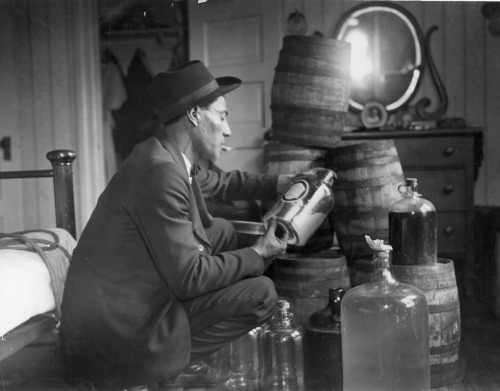
When the fire broke out the fire department showed up and found a mooneshine still. They called the police, the police called the Federal Prohibition Agents who got a warrant. Prohibition agent W. J. Mosher reported from the Rosen's home at 1015 ½ Sunset Blvd.: 1 still, three 5 gallon kegs, one 10 gallon keg liquor, one 5 gallon glass jug jackass brandy, 1 ¾ gallon glass jug wine, 1 funnel, and 2 pieces of rubber tubing.

These pictures were presented as evidence in USA vs. Fannie Rosen and Samuel Rosen. They were convicted of violating the 1919 Prohibition Act, both got six months in jail and a $500 fine. U.S. District Court for the Southern District CA criminal case number 3833).NARA ID 294957.
GOV'T CAUTIONARY TALE: One Time Too Often Narrated by actor Raymond Burr this 1969 Bureau of Alcohol, Tobacco, and Firearms crime drama shows Treasury Agents chasing down moonshine bootleggers and features a gun battle and car chase as a saxophone wails on the soundtrack!
youtube
Arrested for running Moonshine "Booze Joint"!

Inmate File of Hays Cronkright, 1929, Bureau of Prisons, NARA ID 30624178
DIY Still! See patent:
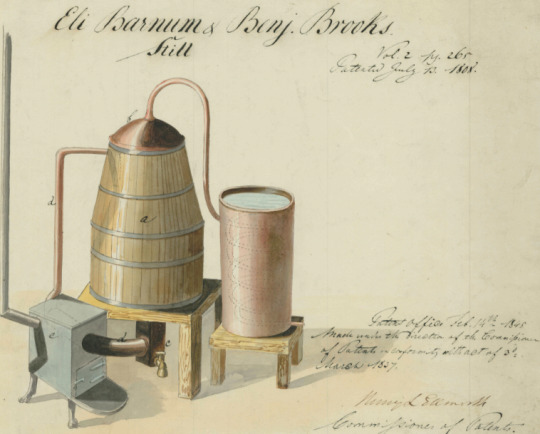
Patent Drawing for a Still, 7/12/1808, NARA ID 149285661.
Related National Archives exhibit: Spirited Republic: Alcohol in American History
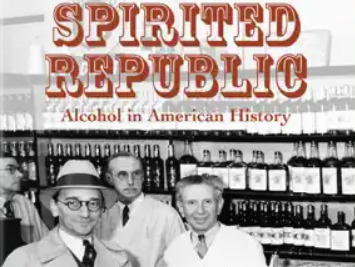
See also: Mortal Moonshine: Treasury Agents Take On Backwoods Bootleggers, The Unwritten Record blog.
Records of the Bureau of Prohibition, National Archives at Seattle The Volstead Act, DocsTeach
Prohibition and the Rise of the American Gangster, Pieces of History
#moonshine#bootleg#crime#history#spirited nation#Youtube#alcohol#atf#booze#drinking#prohibition#bootlegging#spirits#spiritedrepublic
76 notes
·
View notes
Photo

THE SAGA OF THE BLUE GOOSE:
February 20, 1937 was a day of glory in the short history of the Third Reich. It was the 50th anniversary of the Berlin Automobile Exhibition. To commemorate this day a brand new exhibition hall had been built for the forthcoming International Automobile Und Motorrad- Ausstellung for 1937. Dedication ceremonies were to be performed by the Fuhrer himself. As the opening time approached, a cavalcade of Grosser Mercedes Benz Offener Tourenwagens departed from the Reichchancellory traveling through the Brandenburg Gate along the Kaiserdamm. In the lead Mercedes with the top and all the windows in a down position sat Adolph Hitler in the right rear seat. To his immediate left sat Hermann Goering, Reichsmarschall of the Greater German Reich, President of the German Parliament (Reichstag), Commander of the German Air Force (Luftwaffe) and President of the Prussian Council of State. The weather was cloudy with a light snow from the night before still in evidence on the Kaiserdamm. Along Hitler's right side of the Mercedes admiring spectators stood on the sidewalks guarded by the police. On Goering's left side of the automobile was a formation of smartly aligned motorcycles with side cars manned by a Special Corps of Nazi party members standing at attention as the top leadership of the Third Reich headed to the new exhibition hall. At the intersection of Elizabeth Strasse the motorcade turned left and proceeded to Hall #1 where the lead Grosser Mercedes Benz pulled to a stop.
Immediately the Waffen SS adjutant riding in the front passenger seat smartly exited the Mercedes and then opened the right rear door for the Fuhrer and his first deputy, Hermann Goering. As the party gathered around the Fuhrer, the signal was given for the ceremonies to begin. Immediately the band started to play as the Fuhrer walked to the podium of the new hall. The music stopped; the Fuhrer was introduced with great applause. In his speech he spoke as if the world were his audience. Hitler said, "By the cutting of the ceremonial ribbon, Germany is again reclaiming its rightful position as an industrial might to be reckoned with in the years to come."
All the notables of the German automobile industry, including Director Wilhelm Kissel of Daimler Benz, A.G., were present to greet the Third Reich elite. It was during the tour of the Mercedes Benz 540K exhibit that Goering spotted again a Special Roadster, which he had previously ordered in the 500K series in 1935. For 1937 Mercedes Benz had enclosed the rear spare tire with a streamline metallic tire cover. Goering stopped and inquired how long it might take to build an additional Special Roadster with the larger 5.4 litre engine with more horsepower, but with certain unusual modifications. He wanted his new Special Roadster bullet proof and bomb resistive. He also wanted to enhance the driving range necessitating greater fuel capacity. Kissel agreed that these additions could be accomplished.
Being given this assurance Goering opened the driver's door and attempted to sit behind the steering wheel of the automobile. He immediately encountered a problem. His ever-increasing waistline encroached upon the lower portion of the steering wheel. An attempt to adjust the seat to a more backward position was not possible since the seat was back as far as it could go. Over the years, Goering had gone from a slim fighter pilot of World War I to an overweight condition in 1937. His 5'10" frame carried 220 pounds, much of it being attributed to the sumptuous meals at his country estate called Carinhoff located northeast of Berlin where the serving of food and wine never ceased. The estate was named after his first wife, Carin v. Kantzow, v. Fock.
Director Kissel, seeing the dilemma of Goering, turned to his assistant in charge of the 540K custom creations. After some discussion it was decided that the entire driver's compartment had to be enlarged primarily lengthwise. Assurance was given to the Reichsmarschall that Daimler Benz could make whatever changes he desired. Detailed specifications would be given to him after the design team drew up a new set of plans. Lastly Goering said that his Special Roadster had to be painted in Aviation Blue, a metallic sky blue color as was on his present 500K Mercedes Special Roadster. Arrangements were made for finalizing the purchase. Goering concluded the discussion with the customary, "Heil Hitler" and then rejoined the other dignitaries as they journeyed through the exhibition halls.
Goering, inspecting his new creation at the Caracciaola Mercedes Benz Agency in Berlin in mid July of 1937, was ecstatic. (Rudy Caracciola was the lead Mercedes Benz Grand Prix race driver during the 1930s.) The color of the metallic Aviation Blue was stunning. Goering with his own motorcycle escort had to test his new exotic toy to feel the increased power of the 540K supercharge engine developing 180 horsepower. On to the autobahn with his left hand blue lens spot light glowing he pressed the accelerator to the floor kicking in the screaming supercharger. With his eyes alternating between the passing countryside and the speedometer he gleamed with pleasure as the speedometer needle swung near 160 KM per hour. Returning to the Mercedes Benz agency he declared to Caracciola and the Mercedes Benz Design team representative that his new Mercedes was a resounding success.
During the winter of 1940/1941 Goering had the Special Roadster sent back to Daimler Benz A.G. to the Sindelfingen plant for a repaint. The metallic light blue paint had faded and become quite dull. The technology worldwide on metallic paints in the late 1930's was still in its infancy. He had the Special Roadster repainted a darker blue with less metallic additive upon the advice of the Mercedes Benz design development.
Goering indicated that his increasing weight now in excess of 260 pounds was causing him a problem with his stomach encroaching upon the lower part of the steering wheel. The tension of the war and the lack of success of the air war in the Battle of Britain in the autumn of 1940 led to his disfavor with the Fuhrer. To overcome this increased tension Goering took to an eating orgy. The lack of room for his belly was remedied by reducing the thickness of the driver's rear seat cushion by four inches. Satisfied, Goering then had the Special Roadster sent to his country home in Berchtesgaden in the Obersalzberg area at the base of the Alps where it stayed for the duration of the war. A short distance away Hitler had built a beautiful country home called the Berghof. To the east of these homes Hitler also had a mountain top retreat called the Eagle’s Nest built on an Alpine peak overlooking the magnificent Alps Mountains.
THE RISE OF HERMANN GOERING IN THE THIRD REICH
Hermann Goering was born in Bavaria on January 12, 1893, making him four years younger than Adolph Hitler. His father, Heindrich, was a haughty German colonial official serving the majority of his life in Africa as an embassy official. Hermann's mother Franziska (Fanny) was twenty years younger than her husband, who had four children by his late first wife. Fanny gave her husband Heinrich five more; Hermann was the second oldest of the five children. During the diplomatic career of his father, Goering had befriended an Austrian Jew, Hermann von Epenstein, who became the godfather to all the second batch of Goering children. Epenstein had used his wealth to purchase sexual favors from Fanny. The Goerings lived in Epenstein's castle in Franconia near
Nurenberg. Hermann's mother became the mistress of Epenstein quite openly. The bizarre triangle no doubt gave the future Reichsmarschall mixed character values, which were manifested later during the years when Goering made and executed policies for the Third Reich.
It was in his secondary education at a military cadet school that the listless adolescent Hermann came alive. From being nearly a failing student in primary school, he now excelled in all of his activities as a cadet. After graduation he entered the army. Shortly thereafter World War I broke out in August of 1914; Goering was sent immediately to the front. As an army officer, trench warfare was not suited to his health. In a short time he had severe attacks of rheumatism.
While hospitalized he became enthralled by the air war. Through military connections he got himself transferred to the Imperial Air Service. During the years of the war Goering distinguished himself in air combat earning the coveted blue enamel cross of the Pour Le Merite, [the "Blue Max"] near the conclusion of World War I. Goering took over the most famous air squadron of the war. It had been led by the legendary Manfred von Richthofen, the Red Baron, who was killed in action in early 1918. After his successor was also killed shortly thereafter in action, Goering took control of the squadron on July 14, 1918, five months before the end of the war.
Since Germany's army and air service were still intact when the war ended on Nov. 11, 1918, much of the military felt that they had not been defeated. Peace came by the Versailles Peace Treaty concluded in June 1919, but at a terrible price to Germany. In essence the treaty laid the ground work for World War II twenty years later. The Germans had agreed to an armistice based upon U.S. President Woodrow Wilson 14 point peace proposal, but the final result was a totally vindictive treaty in which the Germans saw their future existence torn asunder.
Goering as well as many of his former comrades-in-arms, perceived this quandary. With no money and no job Goering joined former members of the Richthofen Squadron to form a flying circus in Denmark. Still seeking new pursuits he joined the newly formed Swedish airline Svenska Lufttrafik. This endeavor brought him into contact with his future wife, the sister-in-law of Count Eric von Rosen, a client of Goering. Countess Carin v. Kantzow v. Fock was already married and had one child by her officer husband. Carin was bored with him and life in general. She was eager for adventure and a new romance. From the moment Carin met this handsome German aviator at the von Rosen estate romantic sparks flew back-and-forth between the two. In a short period of twenty-four hours their destinies intertwined until her premature death of tuberculosis in 1931. Their adulterous affair was a public scandal in the conservative capital of Stockholm. In time Carin was granted a divorce giving up all rights to a compliant husband as well as renouncing all rights to her inheritance. Hermann and Carin were married in Germany and shortly thereafter Goering entered the University of Munich. But the atmosphere of university life in 1922 was not about academics as much as political activism of righting the wrongs of the Versailles Peace Treaty.
In 1922 Goering, who himself was trying to raise a small political party of ex-officers, heard shouts for Herr Hitler to speak in Munich's Konigsplatz. From that moment Goering's star became attached to Hitler's destiny. Hitler, sensing Goering's elite class and military status, made him a key ingredient in the newly formed National Socialist Workers Party. Yet he nearly lost his life in an attempted coup d'etat in the infamous Munich Beer Hall Putsch of 1923. Hitler was captured and sent to prison; Goering was shot in the groin trying to escape. With the help of his wife he was secreted out of
Germany to Austria where he recovered from his wound. But in his rehabilitation process he acquired a terrible morphine addiction used to control the pain of his wound. Throughout the course of his life he suffered from various forms of drug addiction.
It was in the late 1920s that the German government gave a pardon to the leadership of the National Socialist Workers Party. Hitler was given his freedom while the arrest warrant for Goering was quashed. Goering returned to Germany and with Hitler as its leader the Nazi movement was reborn. The stock market crash in October, 1929 had a drastic economic effect on Germany. As the 1930s started, the rise of Hitler and the National Socialists surged to power. As this was happening Carin became critically ill from tuberculosis and died in 1931, two full years before her husband reached his zenith of power.
Through a strictly legitimate process the Nazis obtained control of the German parliament in 1933 with Goering assuming the position as President of the Reichstag. From that point of time the material fortunes of Goering flourished. The good life followed. In 1935 Goering married a second time to the German movie actress, Emmy Sonnenann, in an ostentatious wedding which would have rivaled the royal weddings of Europe. Hitler was his best man.
The wealth, which came to the Reichsmarschall in his new position of economic governance, gave him a sense of self-importance accompanied by an opulent and materialistic life style. Everything he wanted could be obtained by his power and wealth. His taste for flamboyancy could be seen in his many daily clothing changes of sparkling custom designed uniforms employing an abundance of gold braid. Where Hitler in his mannerisms appeared to be severe and dogmatic, Goering reveled in hearing the German people shout "Hermann, Hermann." In his own mind the German people idolized him without detracting from their loyalty to their Fuhrer.
But war can and did bring a change of fortunes. In the later part of World War II, when Goering realized that the great German offensive of the Ardennes of 1944 had failed, in what Americans refer to as the Battle of the Bulge, he started to prepare himself, his personal finances and accumulated art treasures for Germany's final demise.
On April 16, 1945 the final Russian offensive on Berlin started. On April 19th Goering moved his banking assets from the Berlin banks to his personal bank account at Bayerische Bank in Berchtesgaden. As midnight approached he made his way to Hitler's bunker to wish him an early happy birthday shortly after midnight on the morning of April 20th. The Fuhrer demanded that he still be available at the midday briefing. At this briefing, Goering was given command of the forces in Southern Germany by Hitler. At the conclusion of the briefing Goering asked, "Mein Fuhrer, I presume you have no objection to my leaving for the Obersalzberg right away to be closer to my troops?" "Do what you want" snapped Hitler. Leaving Hitler's presence Goering had a short and strained conversation with Heinrich Himmler, chief of the SS about Hitler's successor. As darkness fell, an air raid of RAF Mosquito bombers appeared over Berlin. Instead of staying in Hitler's private bunker, he decided to go to the nearest civilian air raid shelter. After the all- clear was sounded he immediately left for the Kurfurst Hotel in central Berlin, where Goering and his staff had a temporary residence. On the early morning of April 21, Goering's convoy of five cars laden with his staff and luggage headed toward Berchtesgaden. Goering in an armor plated Grosser Mercedes was accompanied by his personal chauffeur, his man servant and his nurse who had control of his medicine case. The convoy traveled south through the gap being closed on the east by the Russians and on the west by the Americans. The convoy arrived at 11:00 AM at his Obersalzberg villa,
which was crowded with his wife, daughter, his wife's sister, Goering's sister, Paula, and a host of nieces and nephews. Goering had already sent six railroad cars of his art collection and objects d’art to the area for safe keeping several weeks before. His trip before Berlin fell was as much to ensure that his personal finances and art works were being properly safeguarded, as well as to save his life from the barbaric Russians. The war was far less active in the Obersalzberg area than in Berlin. For the next few days he enjoyed some peace until American bombers rained havoc on the homes of the Nazi elite on the night of April 25th. Sensing the danger of an air raid, Goering pulled up stakes beforehand and headed to his Fischhorn Castle near Zell am See, located about thirty miles south of Berchtesgaden.
On April 30th, the Fuhrer ended his life. Grand Admiral Karl Doenitz announced the death of the Fuhrer at 10 PM on the evening of the 1st of May. He also announced to the German people that the Fuhrer had appointed him as his successor. This was small consolation to Goering when he heard the news since he now sensed his capture was imminent.
Following the death of its leader the various German armies started surrendering to the Allies. On the evening of the 7th of May American forces under Brigadier General Robert I. Stack of the 36th Infantry Division came upon the Goering entourage and took him prisoner. Stack suggested that Goering and his family spend the night at Fischhorn Castle near Zell am See before returning to the American lines the next day. For Reichschancellor Hermann Goering the war had come to an end.
Following his capture he was briefly interrogated in the Bavarian war zone. By mid May he was taken to a series of internment centers ending up in October in Nuremberg, Germany where he was tried for war crimes against humanity at the Palace of Justice the following year. He was found guilty on October 1, 1946 and sentenced to die on October 15, 1946. A few minutes before he was taken from his prison cell for execution by hanging, he committed suicide by taking cyanide. His remains were cremated and his ashes were spread over the infamous Dachau concentration camp area, the first camp of its type, which he had authorized as President of the Reichstag in 1933.
THE CAPTURE OF THE MERCEDES BENZ 540K SPECIAL ROADSTER
Captain Joe Crilley, a solider of the 326 Engineering Company of the 101st Airborne Division of the United States Army approached the picturesque town of Berchtesgaden, Germany with his fighting unit on May 4th, 1945. By now the fighting had dropped off dramatically. Crilley knew the war was coming to an end. Yet he had no idea how rapidly events were unfolding in Berlin, following the suicide death of Hitler the previous Monday, April 30th, ten days after Hitler’s fifty-sixth birthday. Crilley had successfully maneuvered his company through the village with no encounter with German forces. Many homes had white flags hanging. However the lack of a firefight did not mean that the Nazi elite were not holed up in the Eagle’s Nest retreat following a possible retreat from Berlin.
Crilley knew instinctively that the area surrounding the Eagle’s Nest could be heavily fortified with Hitler’s personal guard of Waffen SS storm troupers willing to fight to the death. The question perplexing the 101st Airborne Division was whether the Nazi leadership had fled Berlin and was now holed up in his mountain retreat. As Crilley’s engineering company approached the demolished homes of the Nazi’s at the base of the Alps, no evidence of enemy troops was sighted. Near the damaged homes stood the Waffen SS housing compound as well as its adjacent garage.
Anticipating a fire fight, Crilley ordered his company to spread out. But no enemy was sighted. The garage was surrounded and then entered by American troops. Inside were two magnificent Mercedes Benz automobiles side by side on the brick floor. Both cars had splattered mud over their exterior bodies but otherwise appeared in good condition.
Crilley turned to Staff Sergeant Robert Smiley and said “Check them out.” The first of the two cars was the Goering 540K Special Roadster. The Roadster sat with the fixed windows in their up position, but with the top down in its concealed compartment. The other car was a black Grosser Mercedes Offener Tourenwagon.
Smiley approached the Special Roadster first with a degree of caution. He knew the Germans were notorious for setting booby traps for unsuspecting American soldiers seeking souvenirs. Taking no chances he took aim at the driver’s window in the up position and fired his weapon. Then he fired a second time leaving a 45 caliber hole in the left fender. The first bullet did not penetrate the bulletproof glass, but it left a large star mark. To the relief of Smiley the weapon assault on the Goering Special Roadster did not signify a potential booby trap. Smiley then surveyed the Grosser Mercedes. Going back to the Special Roadster, to his amazement, he found the keys in its ignition. Crilley then barked out a command, “See if it runs.” Smiley opened the driver’s door and cautiously placed his athletic body behind the steering wheel. He quickly surveyed the instrument panel. He took a deep breath; then he said a quick prayer. Smiley turned the key to the “on” position; then he hit the starter button. After a few unsuccessful attempts the Mercedes roared to life again with a heavy growl coming from the exhaust pipe. The liberation of the Goering Special Roadster was now complete, all at the hands of the American Armed Forces.
Captain Crilley, realizing that there was work still to be done, called his soldiers back in battle formation and proceeded up the road to the elevator base for the Eagle’s Nest. Crilley found the elevator disabled. (This damage also had been done by the American bombers on April 25th.) He did not attempt to go to the top of the Alpine Peak. Several days later, he did manage to make a foray to the Eagle’s Nest. But to his surprise, he found that his unit was not the first of the Allies to reach to the Eagle’s Nest. This had been accomplished by a small detachment of French and Moroccan forces, which had entered through Berchtesgaden from another direction, as the Americans were simultaneously entering the village. They got to the Eagle’s Nest first and confiscated any war booty which they could get their hands on.
Orders then came from above telling the American forces to secure the area and hold up their advance as the war was winding down. On the day that Captain Crilley had captured the two prized Mercedes, the German High Command surrendered to British Field Marshall Montgomery all German forces in North West Germany, Denmark and Holland. On May 5th, Admiral Hans Von Friedeburg, the new Commander in Chief of the German Navy, arrived at General Eisenhower’s headquarters at Reims to negotiate surrender terms. In a little red schoolhouse at Reims where Eisenhower had made his headquarters, Germany unconditionally surrendered at 2:41 AM on the morning of May 7th, 1945. The war in Europe was over.
In Berchtesgaden Captain Crilley’s 326 Engineering Company received the news with profound relief. Now with time on their hands, they made an exploration of the Fuhrer’s retreat. The enterprising American 101 Airborne soldiers found in the basement of the Waffen SS garage a cachet of French Cognac and choice French wines.
Before long the two Mercedes, after being cleaned by their new "owners," were being driven all over the village of Berchtesgaden by the 101st Airborne celebrating the end of the war in Europe with bottles of Cognac helping to east the pain of previous battles. The exploits of the 326th Engineering Company soon reached higher ups. Word soon came down from above from General Ryan himself for the two Mercedes to be parked.
When Major General Maxwell Taylor, overall theater commander, saw the "Hitler" 540K Special Roadster a few days later, he thought it would make a great command car. He then turned to his adjutant and said, “Put my two star license plate on the Blue Goose, the name which Captain Crilley and his fighting force had given to the Special Roadster.
The command car status did not last long for General Taylor. In August, he received orders of reassignment as the new Superintendent of West Point Military Academy. At the same time, word was received from the United States Treasury Department that these two prized possessions of Hitler’s would be a great draw in war bond rallies back home. There was still a war to be fought and won in the Pacific. Captain Crilley was approached by Command to tour the United States with the two Mercedes along with soldiers from his 101st airborne outfit. He turned the assignment down; Crilley had another agenda and it was getting out of the army as soon as possible and coming back home and getting married. But Second Lieutenant James Cox, who served in Crilley’s outfit, had fallen in love with the Special Roadster. Cox volunteered for the special assignment. Actually Cox had tried to buy the Blue Goose from the American authorities. He had money available from family resources back home. But the army said “no” to the purchase, seeing that the greater good was a war bond tour throughout the United States with Hitler’s cars as a major attraction. In August of 1945 the two Mercedes Benz and a small contingent of the 101st Airborne received orders to depart for the U.S. with Second Lieutenant James Cox in charge of safeguarding the two prized automobiles.
THE BLUE GOOSE COMES TO THE UNITED STATES The Special Roadster and the Mercedes Benz Grosser 770 Offener Tourenwagon
received a shipping order issued on September 10, 1945 by the Headquarters US Forces, European Theater indicating that these two automobile war trophies would be sent to the states accompanied by a contingent of ten men and an officer from the 101st Airborne Division. Although the original thinking was that these two Mercedes belonged to Hitler, it was later determined that the Special Roadster belonged to Hermann Goering since it sported a crest of his coat of arms on the doors. Hitler did not use a coat of arms. Subsequent supporting purchase documents verified this conclusion. Two short tours were made with the Blue Goose, both being after the war had ended.
In August 1946 the first reunion of the 101st Airborne Division was held in Indianapolis, Indiana with the Blue Goose on hand for the reunion. Anton (Tony) Hulman, owner of the Indianapolis 500 Mile Motor Speedway, invited the 101st Airborne Division to bring the Blue Goose to the race tracks for a few laps pacing two special trophy races of three cars each. Tony Hulman drove the Blue Goose around the famous track pacing the three Indy race cars to a flying start. Major General Maxwell Taylor was on hand to view his old command car. With the war over the Blue Goose was retired from active war bond rallies and placed in storage.
In 1956 the Goering Special Roadster ended up as surplus government property and was auctioned off by the Property Disposal Branch, Logistics Division, Aberdeen Proving Ground, Maryland. An auction was held of the two Mercedes on October 5, 1956. The bid description read, "MERCEDES-BENZ Convertible Roadster (Several informational
sources indicate that this car was the private sporty car of Hermann Goering and have identified the heraldic design on the doors as Goering's assumed coat-of-arms.) Acq. Cost Unknown. USED." The high bid was $2167 and it was awarded to Jacques Tunick of Greenwich, Connecticut.
THE BITGOOD ERA OF THE BLUE GOOSE The purchase of the Blue Goose by Dr. George E. Bitgood, Jr, from Jacques Tunick
in 1958 had to a degree been pre-ordained in an unspoken meeting of Sea Merchantman George Bitgood, Jr and the future Deputy Reichsfuhrur of Germany, Hermann Goering, in a chance encounter in a tavern in Stockholm, Sweden.
George Bitgood, Jr, who always had a love of the sea, joined the United States Merchant Marine in his late teens, with the blessings of his father and uncle, who were noted veterinarians in the New England area.
Born in 1904, Bitgood signed-up for a six-year tour of duty in 1921 in New London, Connecticut. His ambition was someday to be the captain of his own ship. However this was not to be since he acquired a partial hearing loss while serving in the Merchant Marines, thus precluding him from continuing his sea-life ambition.
It was early 1922 while sailing the Trans Atlantic route that his ship docked in Stockholm, Sweden. While on shore leave he went to a local tavern where he found a rather large crowd gathered around a German-speaking man “holding court” with many admirers. There was much singing, laughter and drinking. Bitgood asked the owner of the tavern, “Who’s the German?” The owner said, “Why, that’s Herman Goering the famous German air ace from the “Great War”!” Bitgood was fascinated by the persona of Goering. He felt a reluctance to speak to him because of the language barrier. As he was about to leave the tavern, he couldn’t resist going over to the corner where Goering was entertaining his court of admirers to get a closer look. Bitgood caught Goering’s eye and for just a few split seconds Goering smiled back at the young American. That moment in time would leave a lasting impression on the future Dr. Bitgood leading him eventually to own the famous Blue Goose of Herman Goerings’ once it was offered for sale to him by Jacque Tunick of Greenwich, Connecticut for about $10,000. Both Bitgood and Goering left Stockholm shortly thereafter. Bitgood continued as a seaman in the Merchant Marines. Goering along with his mistress, Carin von Fock (later his wife), went to Bavaria, Germany in the spring of 1922, where shortly thereafter he entered the University in Munich to study economic history.
Leaving the service of the Merchant Marines in 1930, George Bitgood, Jr. then followed in his father’s and uncle’s footsteps and entered Ontario Veterinarian College at the University of Toronto in 1931. He graduated in 1935. Dr. Bitgood, affectionately known as “Doc” by everyone, was totally dedicated to his profession. He was on call twenty-four hours a day, seven days a week. In the course of sixty-three years he never took a vacation.
Although dedicated to veterinarian medicine, he also had a passion for exotic cars in a very private way. During the years of World War II, the great custom and luxury cars of the 1930s and earlier were selling for near scrap metal prices. With gasoline rationing in effect during the war years, three gallons of gas per car, per week were allowed by the government. In the 1940s Bitgood started as a hobby buying, selling and trading what were to be referred to in the post war years as the great automobile classics.
In 1949 he purchased Jack Warner’s (of Warner Brothers Movie Studios) 1937 Mercedes Benz 540K Special Roadster from Dr. Sam Scher, a noted plastic surgeon with
offices on Park Avenue in New York City. Bitgood later purchased a second 540K Special Roadster from Dr. Scher.
Then he acquired the Blue Goose. Once Bitgood turned his attention to the Mercedes Benz 500K and 540K series, he left the hobby as a trader and seller and turned his attention as an accumulator of these prized Mercedes automobiles. Over the years his pre-war Mercedes Benz collection reached 14 of these magical automobiles, of which four were Special Roadsters.
Bitgood, upon acquiring the Goering Special Roadster, had it repainted black. Many of the chrome pieces were re-chromed. Where Goering had his coat-of-arms painted on each door, Bitgood had the doors painted over. He had two brass plates fabricated with engraved swastikas and had each attached to a door. However, he did not have the bullet hole repaired in the fender nor did he replace the damage glass in the left driver’s window with new bulletproof glass.
Only once did Dr. Bitgood display the Goering Special Roadster. The event was in 1973 in Durham, Connecticut for the Durham County Fair. Bitgood had a large banner made up advertising the famous World War II trophy. For twenty-five cents the people of Durham could feast their eyes on the Blue Goose
After the Durham Fair, Bitgood contacted the 101st Airborne Division located in Fort Campbell, Kentucky concerning bringing the Blue Goose to a reunion in 1974. However the reunion was never realized since Bitgood was diagnosed with renal cell carcinoma and subsequently had his kidney removed. Even during the six weeks of resulting radiation, Dr. Bitgood continued to work in his clinic. His health returned and he continued to practice with the help of his wife, who acted as his surgical assistant and bookkeeper for 55 years. She died in April 1993 after suffering from a long illness. Bitgood, now 88 years of age, was devastated by her death. A few months later he, himself, had additional surgery, and shortly thereafter passed away.
When Doctor Bitgood’s daughters heard that the 101st Airborne Division was planning to build a new museum at Fort Campbell, Kentucky, they was eager to fulfill their father’s dream of a reunion of the Blue Goose being reunited with the remaining veterans of World War II. After receiving the Blue Goose out of probate, Jim Champion, Executor of the Bitgood Estate and son-in-law of Dr. Bitgood asked Chris Charlton of Classic Car Services of Oxford, Maine to prepare the car for the 101st Airborne Reunion at Fort Campbell, Kentucky in June, 2002. Upon completion of the work, Charlton had the Special Roadster shipped to Fort Campbell, Kentucky. The initial reunion scheduled by Dr. Bitgood in 1973, but never accomplished, now took place.
Champion had discussions with the Bitgood family about doing a private showing of the car at the Pebble Beach Concours d’Elegance. In the meantime several offers were received all of which envisioned a full restoration of the Blue Goose. All potential buyers were interested in doing a complete restoration rather than preserving the unique history of the car as it was first discovered by the 101st Airborne Division in May 1945.
Dr. Bitgood had a strong sense of the historical significance of the capture of the Blue Goose as well as Goering’s ownership. He was inclined not to do a full restoration of the car; rather he wished to preserve the automobile except for the color being changed from Aviation Blue to black.
Eventually a buyer from Sweden was found that would fit the unique requirement of preserving the Blue Goose in all of its historical significance. Jim Champion’s wife, Annette, saw the potential new owner from the second story window of her home. He had just flown in from Europe.
The European gentleman which Annette saw was Jan Kanevad of Carnlough International Limited of Guernsey, Great Britain. The Trust as part of its assets maintains a unique but small collection of highly desirable collectible automobiles. For the past five years the Trust had been seeking an authentic but un-restored Mercedes Benz Special Roadster. When Jan Kanevad laid his eyes on the Goering Mercedes, a deal was shortly struck with the Bitgood estate. Upon the recommendation of Champion, Classic Auto Services was contacted again as a potential restoration shop which could perform the task of a preservation/ restoration of the Special Roadster. Contact was then made with Charlton by Kanevad followed by a personal interview on location. A decision was made to bring the Goering Special Roadster back to the condition when it was found by the 101st Airborne Division on May 4, 1945 with the restoration/ preservation being performed by Classic Auto Services. Once that decision was made; the Blue Goose was shipped back to Oxford, Maine.
THE PRESERVATION/ RESTORATION OF HERMANN GOERING'S MERCEDES BENZ 540K SPECIAL ROADSTER
In many respects a preservation/ restoration of a classic car sixty-five years of age is much different than a straight-out body-off restoration which creates the illusion of a brand-new showroom condition automobile. The instructions from the Carnlough International Limited Trust were to recreate the Special Roadster to May 4, 1945 as the 101st Airborne Division took custody of the Special Roadster. The 45 caliber hole in the left fender as well as the large star in the left door window glass were both to be left intact. All leather was to be retained since it still appeared to be in fair to good condition. Any new paint which had to be applied, had a dulling agent added to make it blend into the original paint. A consistency of age/ quality of all parts in harmony one to the other is the qualifying factor of a preservation/ restoration process. Since this was not a body-off preservation/ restoration, the Blue Goose is probably the most original 540K Special Roadster in existence today.
EPILOGUE
The Goering 540K Mercedes Benz Special Roadster is a historical contradiction in values. It has remarkable finish not seemingly overdone. It appears to be a hands-on car ready to move out without fear of being soiled. One can visualize Major General Maxwell Taylor driving around Germany in this beauty in contrast to the very few cars on the roads of Germany at the end of World War II. But the bigger contradiction is the damage done to the Special Roadster by the 101st Airborne Division when it was captured. On lookers will no doubt ask about the bullet hole in the fender and the bullet star in the driver's side window glass. Many will wonder why subsequent owners never had the Special Roadster returned to the Goering original ownership condition. Moving a historical piece out of a wartime setting to a Concours d'Elegance field where perfection is the norm will no doubt befuddle many an onlooker. If the Goering Mercedes Benz 540K Special Roadster makes one think of the great price the Allies paid for the freedom of Europe, then the preservation/ restoration of this historical Mercedes Benz will have served its purpose.
It is the intent and wish of the present owners that this unique piece of history be preserved in its present condition. They hope that today’s generations might have a greater appreciation of the cost and sacrifice which war brings after having viewed the
preserved Goering Mercedes Benz 540K Special Roadster, nicknamed by the American soldiers “The Blue Goose”. Time will tell.
ps - the pic with the 2 stars and the USA license plate are from General Maxwell Taylor who commissioned, owned and drove the car around southern Germany following the war...
5 notes
·
View notes
Text
JONAS KAUFMANN

WIEN
Wien, el tributo de Jonas Kaufmann a las melodías inmortales de Viena, saldrá a la venta hoy el 11 de octubre.
Disfruta del adelanto “Im Prater blüh’n wieder die Bäume”
Consíguelo aquí
El nuevo álbum de Jonas Kaufmann es un tributo profundamente personal a las melodías mundialmente famosas de la cuna del vals y la opereta. De ahí su título: «Wien», que significa «Viena», en alemán. La Filarmónica de Viena es la acompañante más idónea para esta grabación de éxitos imperecederos, con un variado programa dirigido por Ádám Fischer. La soprano Rachel Willis-Sørensen se une al cantante en los duetos, incluida la melodía de Wiener Blut. Jonas Kaufmann publica Wien, su nuevo álbum, el 11 de octubre de 2019, que promocionará en una gira europea.
Jonas Kaufmann siempre ha tenido una relación especial con Austria y Viena. A su abuela le gustaban los clásicos ligeros y le encantaba cantar las canciones de Johann Strauss, Franz Lehár y Robert Stolz; un bonito contraste con la pasión de su abuelo por Wagner. De niño, Jonas pasó gran parte de su tiempo libre en la granja de sus abuelos en el Tirol. La televisión austriaca le resultaba casi más familiar que su homóloga alemana. Así, absorbió toda la amplitud de la escena de entretenimiento de Viena, desde Peter Alexander hasta Georg Kreisler. Le encantaba imitar el toque vienés de Hans Moser y ponerse en el papel de «Herr Karl» (también conocido como Helmut Qualtinger). Dominar el dialecto vienés era un juego de niños.
Desde entonces, ha sentido un amor profundo por las canciones y la opereta vienesas. «La música siempre me pone de buen humor», recuerda. «Cuando era estudiante y tenía que hacer cosas que no me gustaban, como limpiar o pasar la aspiradora, solo tenía que poner la grabación del Fledermaus de Carlos Kleiber, y enseguida hacía que apareciera una sonrisa en mi cara.»
En muchos sentidos, Wien lleva a Jonas Kaufmann a sus raíces. Su primera producción teatral profesional, cuando aún era estudiante, fue Una noche en Venecia. Eso fue en Regensburg en 1993-94, cuando cantó Caramello más de 30 veces. Razón de más para incluir esta opereta de Johan Strauss en Wien, junto a duetos de Die Fledermaus, Wiener Blut y La viuda alegre de Lehár. Al igual que en su interpretación concertante de Fledermausen la Gala de la víspera de Año Nuevo de Dresde el año pasado, su excelente compañera en los duetos es Rachel Willis-Sørensen.
Además de las grabaciones de Kaufmann de las grandes piezas de Johann Strauss, el nuevo álbum contiene una amplia selección de canciones vienesas, de compositores como Robert Stolz («Im Prater blüh'n wieder die Bäume»), Peter Kreuder («Sag beim Abschied leise Servus»), Hermann Leopoldi («In einem kleinen Café in Hernals») y «Der Tod, das muss ein Wiener sein» de Georg Kreisler. Tampoco puede faltar en este álbum dedicado a la música de Viena el himno no oficial de la ciudad, «Wien, du Stadt meiner Träume» de Rudolf Sieczyński, más conocido en todo el mundo como «Wien, Wien, nur du allein».
¿Y qué mejor orquesta para grabar estas joyas musicales que la Filarmónica de Viena? Cuando en la primera sesión de grabación los músicos, dirigidos por Ádám Fischer, tocaron los primeros compases, una sonrisa apareció de inmediato en las caras, y en los corazones, de todos los presentes.
Jonas Kaufmann presentará su nuevo álbum en un concierto en el Konzerthaus de Viena el 14 de octubre, acompañado nuevamente por la soprano Rachel Willis-Sørensen. En enero de 2020 llevará el programa de gira a Múnich, Budapest, Stuttgart, Berlín, Nuremberg, París, Hamburgo, Bruselas, Dusseldorf, Lucerna y Baden-Baden, bajo el título «Mi Viena.»
El 11 de octubre, Sony Classical lanzará Wien en formato de lujo, CD, vinilo y en plataformas digitales.
REPERTORIO DE "WIEN"
1. Wien wird schön erst bei Nacht
Robert Stolz
2. Wien, Du Stadt meiner Träume (Wien, Wien, nur Du allein)
Rudolf Sieczynski
3. Heut ist der schönste Tag
Hans May
4. Im Prater blüh’n wieder die Bäume
Robert Stolz
5. Wiener Blut – duet from WIENER BLUT – with Rachel Willis-Sørensen
Johann Strauß
6. Ach, wie so herrlich zu schau’n (Lagunenwalzer) – from EINE NACHT IN VENEDIG
Johann Strauß
7. Dieser Anstand, so manierlich (Uhrenduett) from DIE FLEDERMAUS- with Rachel Willis-Sørensen
Johann Strauß
8. Draußen in Sievering – from DIE TÄNZERIN FANNY ELSSLER
Johann Strauß
9. Sei mir gegrüßt, du holdes Venezia – from EINE NACHT IN VENEDIG
Johann Strauß
10. Komm in die Gondel – from EINE NACHT IN VENEDIG
Johann Strauß
11. Lippen schweigen – duet from DIE LUSTIGE WITWE - with Rachel Willis-Sørensen
Franz Lehár
12. Zwei Märchenaugen – from DIE ZIRKUSPRINZESSIN
Emerich Kálmán
13. Schenkt man sich Rosen in Tirol – from DER VOGELHÄNDLER
Carl Zeller
14. Du wärst für mich die Frau gewesen – from FRÜHLINGSSTÜRME
Jaromír Weinberger
15. In einem kleinen Café in Hernals
Hermann Leopoldi
16. Es wird im Leben
Hans May
17. Ich muss wieder einmal in Grinzing sein
Ralph Benatzky
18. Sag zum Abschied leise Servus
Peter Kreuder
19. Der Tod muss ein Wiener sein
Georg Kreisler
Jonas Kaufmann - tenor
Rachel Willis-Sørensen - soprano
Wiener Philharmoniker
Ádám Fischer - conductor
Página web oficial de Jonas Kaufmann
1 note
·
View note
Text
1942 Randolph speaks at Madison Square Gardens, Manhattan on discrimination in the military, war industries, government agencies and labor unions with a turnout of 18, 000 people and also receives the NAACP’s Springarn medal.
General China otherwise known as Waruhiu Itote enlists in the British Army serving in the Kings African Rifles in Asia, Ceylon and in the Burma campaign in which he was promoted to the rank of Corporal.
King becomes the youngest assistant manager of a newspaper delivery station for the Atlanta Journal.
May 8 Elijah Muhammed is arrested in Washington D.C., charged with failure to register for the draft.
October Little is fired from his job for on the Yankee Clipper.
1943 Malcolm moves to Harlem, New York City and becomes involved in drug dealing, gambling, racketeering, robbery and pimping, he alsio works as a dishwasher in Jimmy’s Chicken Shack 63 St. Nicholas Ave with John Elroy Sanford from Chicago who goes on to become the comedian known as Red Fox.
March Little begins working at Small's Paradise bar and nightclub.
April Howell is released from prison and returns to Pinnacle.
June 1 Little attends his induction at Local Draft Board number 59 "I costumed up like an actor... I frizzled my hair up into a reddish bush of conk", he addresses a white soldier at the reception desk as "Crazy O" and in his interview with the military psychiatrist tells him that he wants to organise them some n soldiers, steal us some guns and kill us some crackers.
August Race Riot in Harlem, Manhattan.
September Woyane rebellion in the province of Tigray in Ethiopia.
October 25 Little receives an F-4 card in the mail informing him that he has been found mentally disqualified for military service.
December 24 Friday The Daily Gleaner.
Detained In Connection With Woman’s Death
Leonard Percival Howell, leader of the Ras Tafarian cultists of Pinnacle (off the Sligo Ville Road, St. Catherine). And members of his household, were detained for questioning by the Spanish Town Police yesterday afternoon in connection with the death, under what the Police consider suspicious circumstances, of his common-law wife (whose name was not ascertained up to the time of going to press), and whose partly decomposed and crow ravaged body, was found at the cult camp earlier in the day.
Police action followed a report from Pinnacle that the dead woman was missing from last week Friday and that the crows were seen dipping and soaring over a spot about a quarter mile from the house in which Howell and herself lived.
Du Bois is fired from his position at Atlanta University by its President Dufus Clement.
Rosa Parks, after boarding the bus at the front doors and paying her fair, straight away attempts to make her way to a seat and is instructed to reenter through the bay doors as according to custom by driver James F. Blake who drives off as she attempts to.
1944 Robinson after returning to Ethiopia in the same year is placed on house arrested for assaulting the Swedish Mercenary pilot Count Carl Gustarvon Rosen who refuses to be co piloted by him on account of the colour of his skin.
Prince Emmanuel Charles Edwards joins the community of the Ackee Walk, Back O Wall area in West Kingston, Jamaica.
1963 May 26 The Daily Gleaner Back O Wall is described as being ‘behind a wall, a high brick wall dividing the old Ebenezer Church cemetery from an area bordering the sea and adjacent Ackee Walk.’

Prince Emmanuel was previously working at Up Park Camp, the British army HQ in Kingston, and said that one day whilst he was painting a building, he fell off the ladder he was using and that he saw this as a calling, a sign from the Father for him to redeem his people.
July Little begins working for Abe Goldstein at the Lobster Pond nightclub on Fortysecond Street.
September 4 24 year old Recy Taylor walking on the way to her house from the church that she attended (the Rock Hill Holiness Church) in Abbeville, Alabama with her friend Fannie Daniel, 61 and her teenage son, 18, is approached by 7 armed men in a car, one of them later identified as US Army Private Hebert Lovett armed with a shotgun says that she is the woman that cut Tommy Clarson in Clopton that evening.
Taylor is forced into the car at gunpoint and Daniel goes to Mr. Cook to get help, Mr. Cook and Recy’s Dad go to find the sheriff and are unable to find him but find the Duty Sheriff.
Taylor is then taken 1 and a half miles out of town to a spot on the side of a road near some trees where the men force her to remove her clothes, threatening to kill her if she doesn’t, Taylor begs the men to let her go home to her family, Taylor also has a Husband and a young child, the men refuse to let Taylor go and remove their clothes, Lovett orders Taylor to lay down and for her to “act just like you do with your husband or I’ll cut your dam throat.”
Taylor is then gang raped by 6 of the men, blind folded and left on the side of the road.
Recys Dad and Mr. Cook.
Recy describes the car in which she was taken in as a green Chevrolet which Deputy Sheriff Louis Corbitt identifies as belonging to Hugo Wilson.
Taylor identifies Wilson as 1 of the 7 men in the car.
Although Wilson initially calls Taylor a liar and says that she had never seen her before he later admits that he was among those who picked up Taylor and also names the other 6 men including Lovett.
September 20 King begins his freshman year at Morehouse College in Atlanta.
October 3 Taylor’s case heard by an all white, all male grand jury in Henry Country is dismissed.
By this time none of the men had been arrested neither did Sheriff Gamble arrange an identification parade.
Gamble, when questioned later as part of a further inquiry into the investigation launched by says that he had arrested all of the men 2 days after the assault.
October 4 Wilson is issued with a fine of $250 ($3, 560 in 2018).
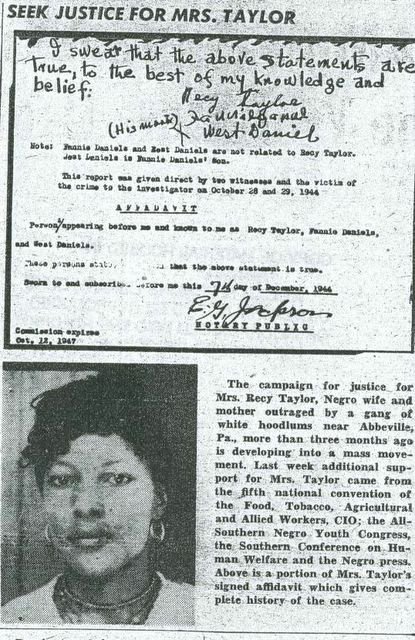
October The Chicago Defender publish front page article with the headline entitled "Victim of White Alabama Rapists".
Little works at Coral Gables in Lansing and as a busboy at the city's Mayfair Ballroom.
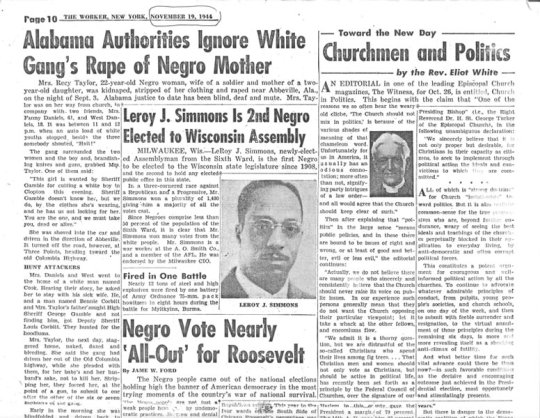
November Little is sentenced to 4 months in jail and 1 year probation for stealing a fur coat from his sister Ella's house which he had pawned for $5, the coat belonged to Ella's sister Grace.
Parks, the secretary of the NAACP’s Montgomery branch travels to Abbeville to investigate Taylor’s case.
Parks works with E. D. Nixon president of the Montgomery branch of the NAACP and leader of the Montgomery branch of Randolph’s Black Sleeping Car Porter’s, Rufas A. Lewis, funeral home director and Alabama State football coach E.G. Jackson, editor of the Alabama Tribune.
Parks founds the Committee for Equal Justice for the Rights of Mrs Recy Taylor.
Members of the Alabama divisions of Montgomery and Birmingham NAACP, editors and reporters from the Alabama Tribune and Birmingham World as well as members of the Southern Negro Youth Congress work to publicize Taylor’s case at the Negro Masonic Temple in Birmingham, Alabama.
Others who joined the committee include Du Bois; Mary Church Terrell, a suffragist and founder of the National Association of Colored Women; Charlotte Hawkins Brown, a popular clubwoman and respected educator; Ira De A. Reid, a sociologist and assistant director of the new formed Southern Regional Council; John Sengstacke, the publisher of the Chicago Defender; Countee Cullen and Langston Hughes of Harlem Renaissance fame; Lillian Smith, author of the controversial interracial love story Strange Fruit; and Broadway impresario Oscar Hammerstein II and Henrietta Buckmaster.
Sheriff Gamble when interviewed as part of the the ongoing investigation launched by claims that Taylor is nothing but a whore around Abbeville and that she had been “treated for some time by the Health Officer of Henry County for Venereal disease.”
On a later occasion some other white men testify of Taylor as being an “upstanding, respectable woman who abided by the town’s racial and sexual mores”.
4 of the 7 men "admitted to having intercourse with Taylor, but argued that she was essentially a prostitute and willing participant." whilst some of the other 3 men, including Herbert Lovett, completely deny knowing anything about the attack.
Joe Culpepper admits that he and the other men and his story of the version of events are consistent with that given by Taylor.
1945 February 13
252 MEMBERS OF ALABAMA CHAPTER SOUTHERN CONFERENCE FOR HUMAN WELFARE URGE YOU TO USE YOUR HIGH OFFICE TO INSURE A FAIR TRAIL AND INDICTMENT IN THE RECY TAYLOR CASE WHICH COMES BEFORE GRAND JURY IN IMMEDIATE FUTURE
PAULINE DOBBS SECRETARY
GOV CHAUNCEY SPARKS
STATE CAPITOL
WE APPEAL TO YOU TO USE YOUR HIGH OFFICE IN THE APPLICATION OF EQUAL JUSTICE AND A FAIR TRAIL FOR MRS RECY TAYLOR OF ABBEVILLE ALA WHO WAS ATTACKED ON SEPT 3 1944.
HOMER WILSON EXECUTIVE BOARD MEMBER INTERNATIONAL UNION BOARD MINE MILL AND SMELTER WORKERS.
February 14 The attorney general presents Taylors case but fails to convince the jury of Henry County that there is enough evidence to indict the 7 men.
February 19 received
March 17 Little is arrested for robbing Douglas Haynes at gunpoint and transferred to the Detroit Police Department.
April 25-June Du Bois along with other NAACP delegates attend San Francisco Conference where the United Nations is created, Du Bois drafts proposal.
April 28 Mussolini is hanged.
April 30 Hitler commits suicide.
June 30
September 26
2011 The book At the Dark End of the Street: Black Women, Rape, and Resistance a New History of the Civil Rights Movement from Rosa Parks to the Rise of Black Power by Danielle L. McGuire is published.
2011 April 21 Alabama Legislature adopt a joint resolution stating: BE IT RESOLVED BY THE LEGISLATURE OF ALABAMA, BOTH HOUSES THEREOF CONCURRING, That we acknowledge the lack of prosecution for crimes committed against Recy Taylor by the government of the State of Alabama, that we declare such failure to act was, and is, morally abhorrent and repugnant, and that we do hereby express profound regret for the role played by the government of the State of Alabama in failing to prosecute the crimes.
BE IT FURTHER RESOLVED, That we express our deepest sympathies and solemn regrets to Recy Taylor and her family and friends.
Taylor receives apologies on her visit Rock Hill Holiness Church.
2011 Taylor visits the White House and attends a forum on Rosa Parks at the National Press Club.
2017 The Rape of Recy Taylor documentary by Nancy Buirski premiers at the Venice Biennale and the New York Film Festival.
2017 December 28 Taylor passes away in her sleep at a nursing home in Abbeville and is buried next to her daughters grave at New Mount Zion Freewill Baptist Church.
2018 January 7 Oprah Winfrey accepts the Golden Globe Cecil B. DeMille Award and says of Taylor "They threatened to kill her if she ever told anyone... Recy Taylor died 10 days ago... for too long, women have not been heard or believed if they deared speak their truth to the power of those men... And I just hope... I just hope Recy Taylor died knowing that her truth... goes marching on.
2018 January 31 Members of the Congressional Black Caucus invite Taylors family, including her daughter, Mary Joyce Owens, to attend a speech at State of Union the Democratic Caucus wear red "Recy" pins.
October 15-21 Du Bois attends the Fifth Pan African Congress held at Chorlton Hall, Chorlton on Medrock, Canvendish Street, Manchester, England and former Treasurer and Honorable Secretary of the International African Friends of Ethiopia; Amy Jacques Garvey and Jomo Kenyatta, as well as Kwame Nkrumah are among the congress's other attendees.
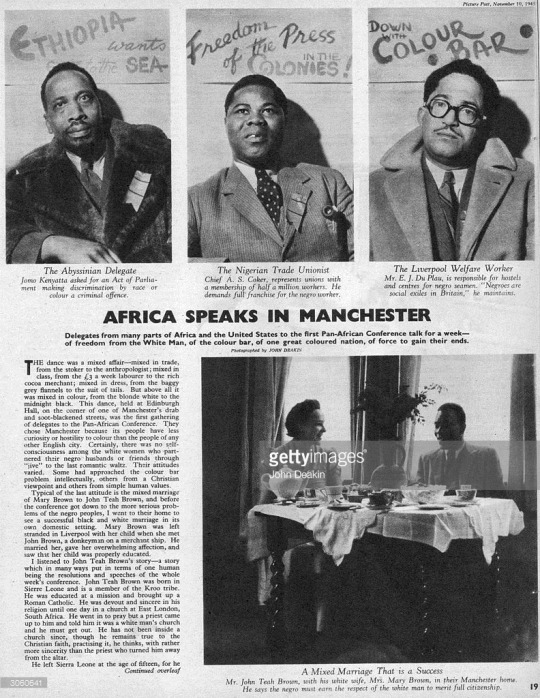
Little returns to Boston.
December 14 Little, his friend Shorty Jarvis from Lansing who he had befriended in, Francis E. "Sonny" Brown, Bea, 1 of the women that Little had been seeing, her younger sister and another Armenian woman burgle a house in the Brookline, Boston of $2, 400 worth of fur coats, silverware, jewelry and other items.
December 15 Little and his gang burgle another house in Brookline sealing several rugs worth $400 as well as liquor, jewelry, lenin.
December 16 Little and the gang sell their stolen goods in New York City.
December 17 Little burgle another house this time in Newton, Massachusetts of Jewelry, a watch, a vacuum cleaner, bed Lenin, silver candle sticks, earrings, a gold pendant and chain.
Sultanin Mumusa, a Bagirwa (Priestess) of the Nyabingi cult or movement in Rwanda/Tanzania, dies in Mbarara, Uganda.
Rwanda Uganda.
1946 January Little is arrested picking up a stolen $1000 watch at the repair shop, he is also carrying a loaded 32 calibre on him.
January 15 Little is charged with illegal possession of a firearm at Roxbury Court.
January 16 Little is charged with larceny and breaking and entering.
February Little and Jarvis begin serving an 8 to 10 year sentence at Charlestown state prison in Boston Massachusett.
Itote joins the Kenya African Union and Forty Group.
1947 January Little is transferred to the Massachusetts Reformatory at Concord.
Randolph and Grant Reynolds form Committee Against Jim Crow in Military Service/League for Non Violent civil disobedience.
George Watson aka Ras Boanerges or Bongo Watto founds Youth Black Faith in his yard at 9th Street, Trench Town, Jamaica.
The name Boanerges comes from the gospel according to Mark chapter 3 verse 17 which reads And James the son of Zebedee, and John the brother of James; and he surnamed them Boanerges, which is, The sons of thunder:
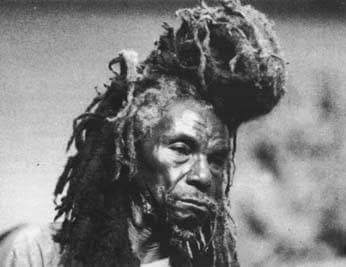
1948 January 8 Howell is sentenced to 6 months in prison.
January 23-25 Friday, Saturday and Sunday Du Bois chairs the National Conference on American Policy in China and the Far East at 111 West 42nd Street, New York.
February 25 King is assistant Pastor at Ebenezer Baptist church in Atlanta.
March Little is transferred to the Norfolk Prison Colony.
The Emperor grants 500 acres (2.0 km2) of his land in Shashamane 225 km (150 miles) south of Addis Ababa to people of African descent in the West Indies and America's who would like to resettle on the continent.
July 16 President Harry S.Truman ends racial segregation in the armed forces with Executive Order 9981.
King begins his studies at Crozer Theological Seminary in Chester, Pennsylvania.
Du Bois resigns from the NAACP for the second time.
King graduates from Morehouse with B.A. in Sociology.
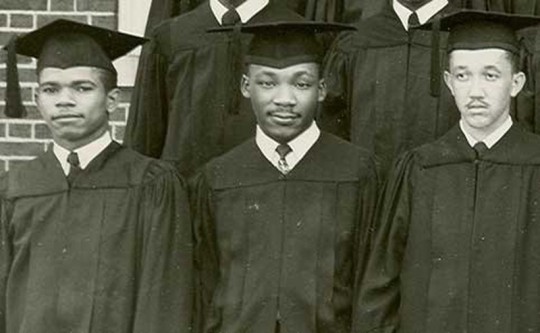
Little's brother Philbert writes to him in prison telling him that he and other members of the family have become members of the Nation of Islam.
Little's brother Reginald writes to him in prison telling him to give up pork and to stop smoking cigarettes, he also visits him in prison tells him about the beliefs of the Nation of Islam. Little later writes to the leader of the Nation of Islam, Elijah Muhammad.
Seay becomes the first woman British Honduras Justice of Peace.
1949 Du Bois attends the Scientific and Cultural Conference for World Peace at the Waldorf Astoria hotel in New York.

L- r: John Howard Lawson; Alexander A. Fadeev; W. E. B. Du Bois; Dmitri Shostakovich; Bishop Arthur W. Moulton; William O. Stapledon, and Kiri Hrovek.
Du Bois also speaks at the World Congress of Parisians of Peace in Paris
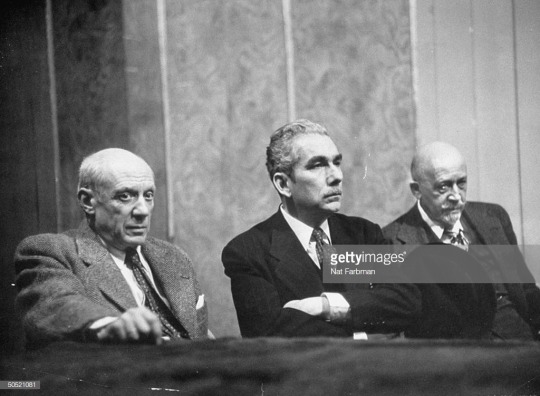
Pablo Picasso, Juan Marinello, Donald Henderson, Mineola Zugeisoll, Roclervell Kud are also among other delegates that attend the Congress.
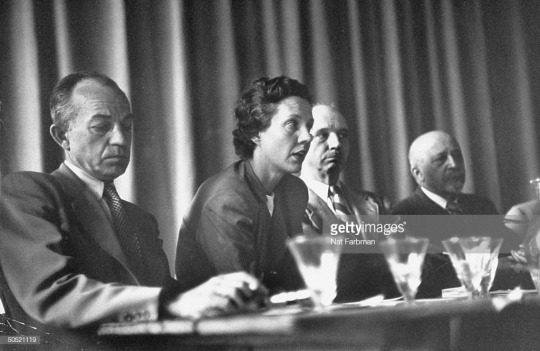
Du Bois then the All Soviet Peace Conference in Moscow, Russia as the delegate for the National Council of Arts, Sciences and Professionsm.
The FBI reopen their file on Du bois on suspicion of him being a communist.
Julian becomes a licensed arms dealer.
1950 Itote takes the Mau Mau oath.
Dedan Kimathi takes the Mau Mau oath and joins the Ol Kalou branch of the Kenya African Union and also becomes the branch's secretary.
Randolph, Roy Wilkins, Executive Secretary of the NAACP, and, Arnold Aronson, of the National Jewish Community Relations Advisory Council found the Leadership Conference on Civil Rights (LCCR).
April 21 Springfield Morning Union.
local criminals in prison claim Moslem Faith New Grow Beards won't Eat Pork Demand East Facing Cells to Facilitate 'Prayer to Allah'.
April The Peace Information Center is founded, which includes in its aims the purpose of gaining publicity for the Stockholm Peace Appeal and signatures for a petition against atomic warfare which 3, 000, 000 American people sign. Du Bois becomes chairman of the PIC and also runs for Senator New York on the American Labor Party ticket.
August 11 The Justice Department serve a notice on the PIC requiring them to register as an agent of a foreign principal under the terms of the Foreign Agents Registration Act.
The FBI open a file on Little after he writes a letter to President Truman in which he states his opposition to the Korean War and also confirms for the president himself that he is a Communist. Little also begins to replace his surname with the letter X as a member of the NOI, symbolising his African American descent.
1951 January 18 Howell sentenced to 2 year in prison for Ganja.
Ex Cult Leader Held On Ganja Charge
Leonard Howell one time Ras Tafari chief at Pinnacle St. Catherine and two other men were arrested yesterday by first class constable A. E. Tilloch of Browns Town Police Station charged jointly with having Ganja.
Howell, Levi Ward and Edgar Reed were held in a raid 8 Windward Road on premises.
Hundreds of curious persons lined a stretch of the road for hours after the police left with a large quantity of stuff said to be Ganja.
Defendants who are in Sutton Street jail will appear before the Kingston Resident Magistrate's court today.
May 6-8 King graduates from Crozer Theological Seminary in Chester, Pennsylvania with a B. IV (bachelor of divinity) degree.
August Count Ossie's camp at Salt lane in Kingston Coronation market is destroyed by hurricane Charlie.
September 13 King begins graduate studies in systematic theology at Boston University.
Kimathi joins the Forty Group of the Kikuyu Central Association and becomes the secretary of this organization's branch too.
Du Bois's attorney informs judge that Albert Einstein has agreed, if need be, to stand as a character witness for Du Bois, the judge dismisses the case but Du Bois passport is confiscated for 8 years.
Seay becomes the only woman founder of the National Party and is also appointed to the City Council.
1952 Seay co founds the British Honduras Federation of Women which begins a project to establish an affordable daycare centre to assist employed mothers with their children.
June 4 X requests parole.
August 4 Massachusetts Supervisor of parole informs the parole board that a full time job at the Cut Role department stores in Detroit has been secured for him on his behalf.
August 7 X is released.
X and his siblings secure their Mother Louise release from Kalamazoo State Hospital, X also visits Muhammad in Chicago.
1953 January X works at the new Ford assembly plant in Wayne as a final assembler on the production line and becomes a member of the United Auto Workers Local 900.
Kimathi forms the Kenya Defence Council.
June X becomes assistant minister of the Nations Temple Number 1 in Detroit amd establishes Temple number 11 in Boston later on in the year.
June 18 King marries Loretta Scott on the lawn of her parents house in Heiberger, Alabama.

November Saint Lucia born Hulan E. Jack becomes the first African American Borough President of Manhattan, Jack was also the treasurer of the Committee for Equal Justice for the Rights of Mrs Recy Taylor.
1954 January General China Waruhui Itote is captured by British troops.
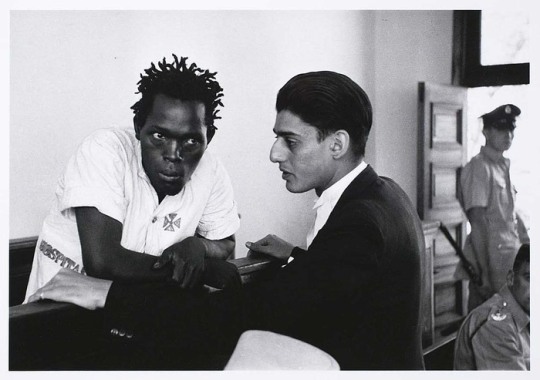
March X expands Temple Number 12 in Philadelphia.
April Howell arrested for illegal practice of medicine.
May X leads and expands Temple Number 7 in Harlem.
May 17 Supreme court in Brian V Education rules segregation in public schools unconstitutional.
May 25 The Emperor arrives in New York aboard the liner United States.
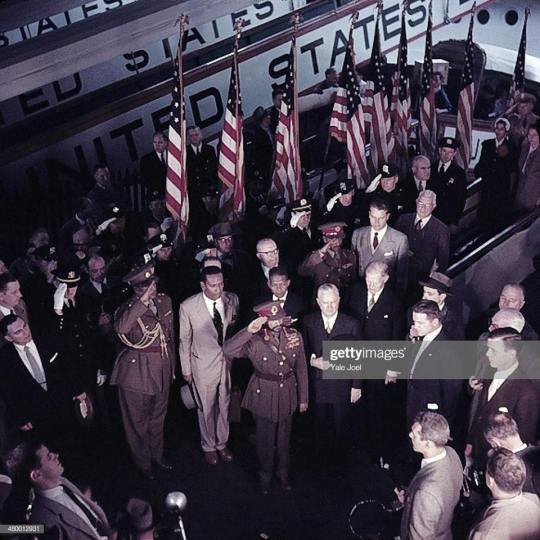
The Emperor leaves La Guardia Airport for Washington in the presidential plane the Columbine.
May 27 Thursday.
The Emperor is arrives in Washington where he is received by Vice President Nixon. Herald Tribune, page 3.

The Emperor District Columbia Building and also visits the White House.
Selassie Sees Capital Sights
WASHINGTON (UP) Emperor Haile Selassie of Ethiopia, a frail little man with an indomitable will, made a sight seeing round of the capital with the genial good wishes of President and Mrs. Eisenhower.
His imperial majesty started off on a day taking him to Mt. Vernon and the Tomb of the Unknown Soldier and dinner tonight.
Shortly after breakfast, Mr. And Mrs. Eisenhower walked out on To the White House north portico, warmly shook hands with their royal visitor and saw him into his limousine. He was an overnight guest at the White House.
The President turned to the Emperor’s son and granddaughter and said, “I hope you enjoy your entire trip. It was very nice having you here.”
A servant placed in one of the cars of the emperor’s motorcade a huge box, obviously a gift to Haile Selassie from the President.
Haile Selassie is making his first visit to the United States. And yet to most Americans his erect 5-foot 3-inch frame is almost as familiar as Churchill’s cigar. THE HOLLAND, MICHIGAN, EVENING SENTINEL, page 7. RECORD-EAGLE, TRAVERSE CITY, MICHIGAN, page 5.
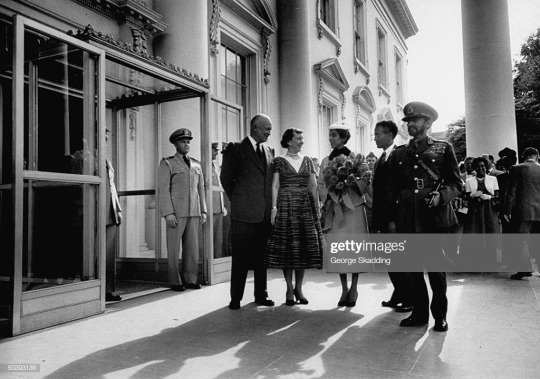
May 26 The Emperor visits Blair House.
1954 May 27 The biggest Ganja raid as of that time takes place at Pinnacle £3, 000 is seized. Howells son Monty in the interview on Wu World radio with Bob Marley’s granddaughter Donisha Prendergast said that a lot more than £3, 000 was taken from his Dads house and from the community thousands and thousands were taken. The police unearth the biggest store of Ganja ever to be found one place at a time. It is understood that whilst some men were digging out bags loaded with the ��weed” others were pulling from the roof of a bags made out of old trousers. They were laden with 5 notes, notes, and other local currency notes and coins. With one woman the police find another had over 300 and several had other large sums, all of which the police took over. The money belongs to some of the 140 prisoners who have been charge with Ganja possession and with having fire arms illegally. It will be returned to them as soon as the cases are settled. Star newspaper. Monty and his brother Bill were also arrested in the raid and charges are brought against them for being in unlawful possession of a Bulova watch and a Rolex watch. The police send a note to Howell telling him that if he doesn't come up with x amount of money that his sons will be charged for a lb of Ganja each. Howell pays the money and is able to retain a receipt from the place he bought the watches from, the charges against his sons are withdrawn and his sons are also discharged. June 12 No case against Howell’s sons The charge was withdrawn yesterday in the case against Martinal and Silbert Howell, teenage sons of Leonard Howell, one time self styled “king of Pinnacle. They were held during the raid which the police made at Pinnacle property on the morning of May 22, and charged with unlawful possession of watches and a cloak. Mr. H. E. Rickards, solicitor of Dayes and Rickards, informed His Honour Mr H. P. Allea in the St. Catherine R. M. Court at Spanish Town that he had produced receipts to the police which showed that the two accused were in legitimate custody of the goods. They lived about a mile away from Pinnacle settlement in the house which used to be occupied by Howell. They were in no way associated with the settlement. Mr. Cliff Grant Clark of the Courts, said the case with withdrawn. The defendants were discharged.
May 28 Friday The Emperor speaks to 12, 000 at Howard University in Washington D.C. and receives the Honorary Degree of Doctor of Law.
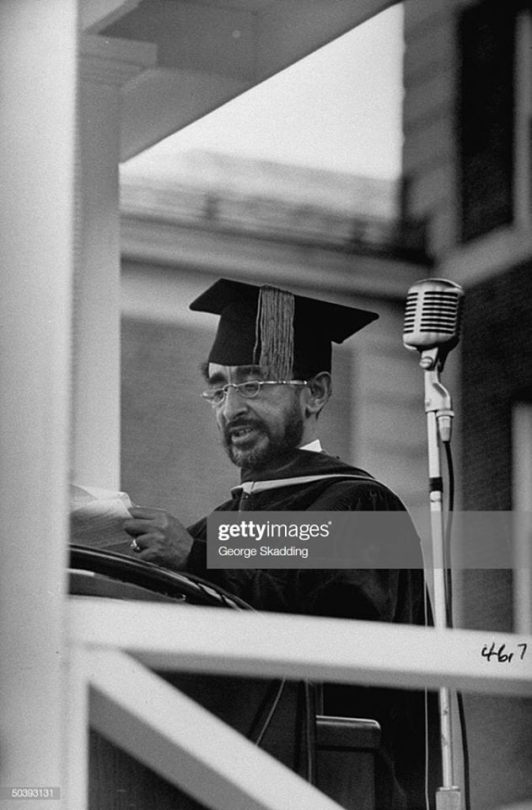
May 30 Sunday
Harlem Noisily Greets Selassie
NEW YORK, May 30 Emperor Haile Selassie of Ethiopia paid his first visit to Harlem today and got a warm, noisy welcome from some 200, 000 persons.
Residents of the area, which houses much of the city’s Negro population, lined the streets by the thousands and cheered as the slight, dark-skinned monarch drove by in a closed limousine.
He was escorted to the podium of the Abyssinian Baptist Church by Hulan Jack, Negro borough president of Manhattan, and the Rev. Adam Clayton Powell, Negro pastor of the church who is also a Democratic member of the House of Representatives.
Church is filled
The church applauded loudest when Powell told the Emperor: We honor you because you are the symbol around which we place all out hopes, dreams and prayers that one day the entire continent of Africa shall be as free as the country of Ethiopia.”
Emperor Selassie told the audience its “warm welcome has overwhelmed me and I thank you from the bottom of my heart.”
The Emperor presented to the church a gold processional cross made in Ethiopia, and was given an oil portrait of himself by Ivan Tate, Negro artist.

The Emperor with Jack and Powell.
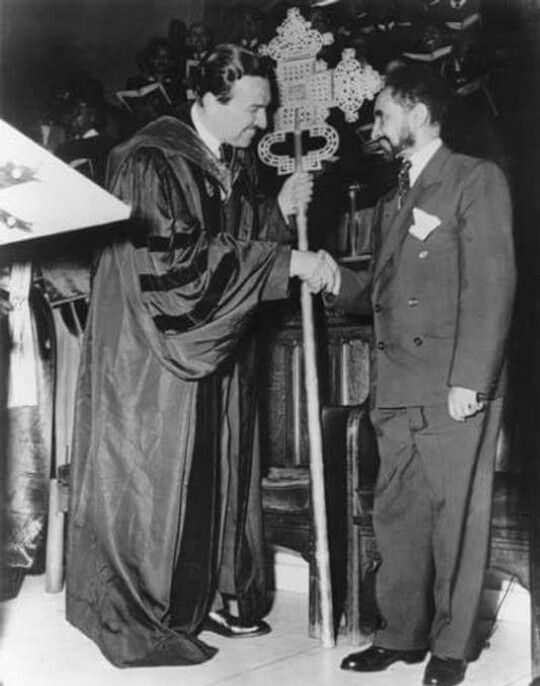
May 31 The Emperor attends the Yankee Stadium to watch New York play Washington in the first game of a doubleheader.
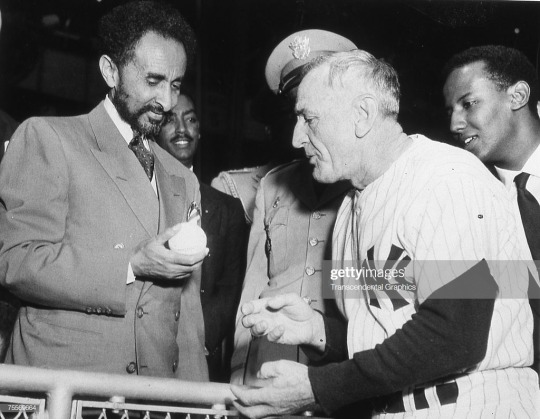
The Emperor is presented an autographed baseball by Casey Stengel, Manager of the New York Yankee.

June 9 The Emperor meets Mayor Joseph E. Dillon and his wife in Saint Paul, Minnesota.

June 10 The Emperor attends a ceremony, at Wold Chamberlain airport in Hennepin County, Minnesota.
June 11 The Emperor arrives at Seattle airport in Washington.
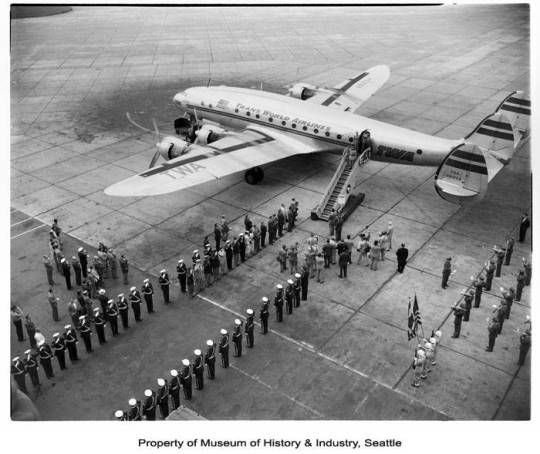
June 12 The Daily Gleaner.
11 sentenced to prison as Pinnacle trail opens
‘Extremely large’ quantity of ganja in Court
SENTENCES ranging from six months to two years imprisonment at hard labour were passed today by His Honour Mr. H. P. Allen in the Spanish Town R.M. Court as the trail of the Pinnacle case opened.
Eleven accused perswons sentenced today were convicted on charges of cultivating ganja and of having ganja in their possession.
One hundred and forty persons were arrested by the police in a raid on Pinnacle property, a few miles from Spanish Town, early Saturday morning on May 23.
The exhibits of what was certified as ganja were brought to the Court in police station wagons in all manner of containers boxes, barrels, baskets, crocus bags, grips, bales. There were also exhibits of ganja plants in court.
10 day trail
The trail which will resume on Monday at 9 a.m., is expected to last from a week to ten days.
Mr. Cliff Grant, Clerk of the courts, is prosecuting while Mr. H. E. Rickards is representing all the accused.
Acting Deputy Supt. J. N. Ricketts and Sub-Inspector George Eubanks were in attendance on the court.
Detective Sergt. Jez Marston, who was brought from Mandeville to take part in the raid, gave evidence today in all the cases heard: It was an account of his illness caused by a motor cycle accident that the trail was set back from Monday until yesterday.
There was only one incident in the smooth running of the trail. An accused who gave his name as Alfred Bennett collapsed while in the dock. He revived shortly after and was offered a chair.
He was being tried in the first case of the day along with James Bennett and Adina Manning. They were accused of cultivating ganja and having ganja.
Detective acting Corporal Gerald Nembhard told of accompanying Detective Sergeant Marston and acting Corporal Frank Harrison to Pinnacle at about 4 p.m. on the afternoon of May 23. They went to a cultivation surrounding two huts and saw the three accused weeding the field.
Warrant read
After a warrant was read, none of the accused said anything. A search was started and ganja plans numbering about 5, 000 were found in a 3 acre plot.
He arrested all three on charges of cultivating ganja and having ganja in their possession.
Cross examined by Mr. Rickards witness admitted that he did not know who was James Bennnettt or who was Alfred Bennnett.
Dectective Sergeant Marston gave evidence and under cross-examination pointed out James Bennett. Mr Rickards submitted that the accused was not James Bennett but Alfred Bennett.
Acting Corporal Frank Harrison also gave evidence. James Bennett in his defence said his name was not Alfred Bennett. He lived at Thompson Pen and had gone up to Pinnacle at around 2 p.m. on the day of the raid to visit his cousin Alfred, who was ill. He knew nothing about ganja nor had he ever planted it.
The other two accused in their defence denied that they were cultivating ganja or had ganja when they were accosted by the police.
The Magistrate found them guilty.
The police said the ganja seized on that occasion weighed 80lbs.
“It is a serious matter” said the Magistrate “and the quantity of ganja in this case is extremely large.”
James Bennett and Alfred Bennett were sentenced to twelve months on each of the two counts, sentences to run consecutively, Adina Manning was sentenced to twelve months for cultivating ganja and 6 months for having ganja in her possession, sentences to run consecutively.
Other policemen who took part in the raid and who also gave evidence were Corporal Albert Ellis, Constable Rudolph Ellis Acting Corporal Uley Delahaye, Constable Quintin Crawford and Constable Simeon Powell.
1000 lbs. Ganja
Caleb McPherson, who pleased guilty to having 100 lbs, of ganja in his possession was sentenced to 12 months imprisonment at hard labour.
He claimed that at the time of his arrest he had £18, which was taken away. Mr. Rickards promised to take up the matter.
Pircell Fairweather was acquitted on a charge of cultivating ganja. He was sentenced to 9 months imprisonment for having ganja in his possession.
Alexander Johnson found guilty of having 3 lbs. Of ganja in his possession was sentenced to 12 months hard labour.
Gustavus Robinson pleaded guilty to having 110 lbs of ganja. The weed was found in two boxes and a crocus bag in his room on the morning of the raid. He had one previous conviction for having ganja. Robinson was sentenced to two years at hard labour.
Henry Dawkins and Rebecca Murray were both convicted for having ganja. Dawkins, who pleaded guilty to being in possession of a box with 7 lbs. Of ganja, found in his room was sentenced to 12 months at hard labour.
The box
Mr. Rickards had submitted that Murray should not be presumed to have the ganja in her possession merely because she lived with Dawkins. Dawkins had admitted that the box was in his possession and had afterwards stated from the witness box that Murray knew nothing about the contents of the box. Mr. Rickards criticised the nature of the of the evidence given by police witnesses.
The Magistrate however, held that she was guilty of being in possession of ganja.
George Brown and Lillian Goode, who also said they lived together in a hut at Pinnacle, were both sentenced to 12 months at hard labour for having over 100 lbs. Of ganja in their possession. Mr. Rickards commented on the conflicting evidence which he said was given by the police in that case.
They gave verbal notice of appeal and were offered bail in the sum of £100 each.
Furthur hearing was adjourned at this point.
No case against Howell’s sons
The charge was withdrawn yesterday in the case against Martinal and Silbert Howell, teenage sons of Leonard Howell, one time self styled “king of Pinnacle.
They were held during the raid which the police made at Pinnacle property on the morning of May 22, and charged with unlawful possession of watches and a cloak.
Mr. H. E. Rickards, solicitor of Dayes and Rickards, informed His Honour Mr H. P. Allea in the St. Catherine R. M. Court at Spanish Town that he had produced receipts to the police which showed that the two accused were in legitimate custody of the goods. They lived about a mile away from Pinnacle settlement in the house which used to be occupied by Howell. They were in no way associated with the settlement.
Mr. Cliff Grant Clark of the Courts, said the case with withdrawn. The defendants were discharged.
June 14 Bay Area Gives Haile Selassie Warm Welcome
Haile Selassie I, as indefatigable a tourist as he is the ruler of 19, 000, 000 devoted Ethiopian subjects, plunged into a backbreaking of official receptions, visits and sight seeing today.
Up at 5 a.m., as usual, for his morning devotions, the frail little man with the imposing titles of Lion of Judah and King of Kings enjoyed a typical American breakfast of grapefruit juice, bacon and eggs, toast with jam and tea in his gold plated suit at San Francisco's Mark Hopkins Hotel.
Then properly briefed by members of his entourage of 19, he began his official day with a press conference.
Immediately afterwards, he and his party drove a round about route to Fort Mikey Veterans Hospital to visit American and Ethiopian soldiers recovering from wounds suffered in the Korean war.
GREETED BY 1, 500
Another leisurely drive through Golden Gate Park was to bring the 62 year old ruler of the world's first Christian nation back to the San Francisco City Hall where he was to be received officially by Mayor Elmer E. Robinson.
From the City Hall, the Emperor was to motor down Market St. to the Palace Hotel to attend a luncheon in his honor sponsored by the Common Wealth Club, the Down Town Association and the Chamber in Commerce.
After a brief break during the mid afternoon hours, he was to attend a 5 p.m. reception at the Mark Hopkins given by the World Affairs Council of Northern California.
The last event on today's schedule was an 8 p.m. dinner at the Press and Union League Club.
OFFICIAL RECEPTION A crowd of about 1, 500 was on hand last night as the Emperor, smiling and gracious, stepped down from his Pullman at Oakland.
After a greeting by Mayor Clifford Rishell and Mrs. Rishell, he and his party of 19
(Continued Page B, Col.3)
June 18 The Emperor visits Ohlahoma Agricultural and Mechanical College of Stillwater.
June X is appointed Chief Minister at Temple number 7 in Harlem by Mohammad.
King becomes pastor at Dextor Avenue Baptist church in Montgomery, Alabama.
October 14 The Emperor and his son, the Duke of Harar arrive at Victoria station in London where they are recieved by the Queen Elizabeth, the Duke of Edinburgh, the Queen Mother, Princess Margaret, Princess Royal, and the Duchess of Gloucester.

The Emperor and his son are then driven by carriage in procession by way of White Hall and Trafalgar Square to Buckingham.

October 18 The Emperor receives the Freedom of the City of Bath from the Mayor Cllr Gallop.
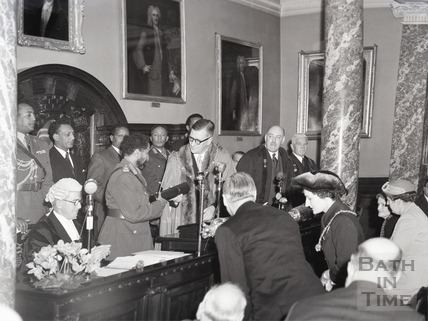
November 27 The Emperor arrives on the train in Switzerland.
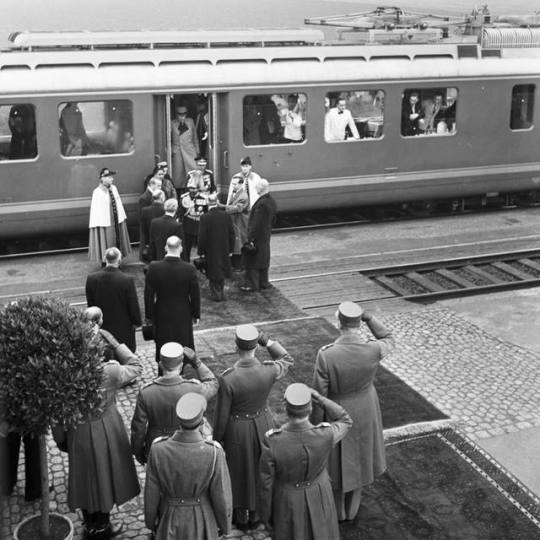

The Emperor is taken to the Castle of Jegenstorf by carriage.
1955 March 2 15 year old Claudette Colvin, a student of Montgomery Booker T Washington High School and a member of the NAACP Youth Council, on the way back home from school refuses to give up her bus seat to a white on a Montgomery bus.
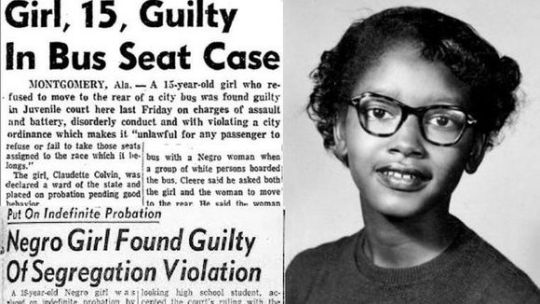
A white woman is left standing so the bus driver tells Colvin and three other black women to move, the three others move but Colvin remains seated.
Next another black woman by the name of Ruth Hamilton who is visibly pregnant sits next to Colvin, the driver tells them to move, Hamilton says that she isn't going to move, that she has paid her fare and doesn't feel like standing, Colvin also tells the driver that she isn't going to move.
April Du Bois is denied travel for the Bandung Conference in Indonesia by the U.S. government.
May 1 X holds a NOI meeting in Lansing.
May 6 Colvins case is brought to Montgomery Circuit Court and the charges brought against her of disturbing the peace and violating segregation laws are dropped.
June 5 King graduates with Ph.D for doctoral studies in systematic Theology at Boston University.
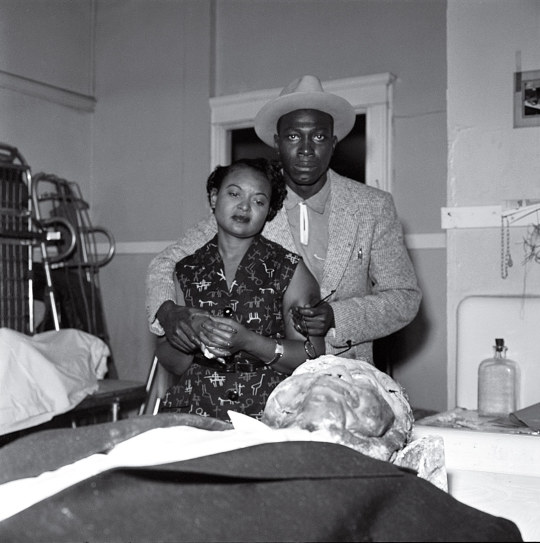
August 28 Sunday 14 year old Emmett Till from Chicago is murdered in Mississippi.
Between the hours of 2:00 and 3:30 in the morning Roy and his half brother Milam, both armed, drive to Emmett’s grand uncles house in Money, Mississippi.
The men arrive at Till's uncles house and call at the door, Till’s Uncle Mose Wright ask's who it is, Bryan replies telling Wright that it is him and that he wants to talk with Wright and the boy.
Wright opens the door to Milam with a pistol and a flashlight in his hand asks Wright if he has 2 boys there from Chicago, Wright says that he has and say he wants the boy that done all that talk.
The men go to the 2nd room, Emmett’s cousin Wheeler’s room where Wheeler and Maurice are in bed, the men then go to the 3rd room where Emmett is in the bed with his cousin Simeon Wright, Wright hears a noise in the bedroom and see’s the men, they tell him to lay back down and go to sleep, he keeps his eye’s open and see’s that they are going to take Emmett he said that he didn’t know where they were going to take Emmett and thought that maybe they were going to take him back home.
They wake up Emmett and ask him questions unpleased with the way he is responding they hurry him out of the house.
Wright’s wife offers them money but Milam refuses and says that he is going to take Emmett up the road, give him a beating and let him go.
Wrights says when the men took Emmett to the car there was someone else present who they asked if Emmett was the boy to which they replied yes, the men then proceed to drive towards money.
The men drive Emmett to Sheridan’s plantation in Drew where they beat him in Milam's brother's barn.
Willie Reed saw the green 1955 Chevrolet and 5 people who he says he thinks to have been Levi 'Too Tight' Collins, Henry Lee Loggins, Emmett, Bryant and Milam.
Collins and Loggins were employed by Milam's brother Leslie.
Reed hears the beating and crying.
Reed tells a neighbour and walks with her to a water well near the barn and turns the water on when he see’s Milam who is wearing a green shirt and khaki trousers and has a 45 on his side.
Milam asks Reed if he’d heard anything, Reed tells him that he hadnt.
Wright knocks on Emmett’s friend, John Crawford’s door and tells him what has happened, they drive to money in Crawford's vehicle and back trying to find Emmett.
The men shoot Emmett above the right ear, wrap a 75 pound metal fan around his neck with barbed wire to weigh his body and dispose of him in the Tallahatchie River.
August 31 A boy fishing in the Tallachatchie a naked body that of a young male and informs the Tallachatchie County Sheriff Clarence Strider who along with deputies goes on the river in his sons boat and.

Sheriff goes to Wright and tells him that they have found a body at and wants him to identify it, Crawford drives Wright, Crawford said that he could smell the body from 5 or 6ft away.
According to Crawford, Wright said that his tongue had been cut and pushed back in his mouth and his private had been cut off although Emmett's mother.
Both of Till's wrists were also broken.
Jones calls the Leflore county sheriff as well as his mother in Chicago.
9:30 Jones Mother calls Emmett’s Mother Mamie Till Bradley, Bradley calls her Mother and goes over to her house.
Wright and his wife Elizabeth drive to Summer Elizabeth's brother contacts to Sheriff.

August 24 4 days earlier Emmett had gone to to buy some candy Till’s cousin Curtis Jones leaves Till in the store to join a game of checkers across the street. Emmett had allegedly touched 21 year old Carolyn Bryant's hand and grabbed her waist at the Grocery and Meat Market she and her Husband Roy ran.
Later, at the trail Bryant says that Emmett grabbed her hand whilst she was stocking candy and said, "How about a date, baby?" She said that after she freed herself from his grasp, he followed her to the cash register and grabbed her waist and said "Whats the matter baby, can't you take it?" Bryant said she freed herself and Emmett said "You needn't be afraid of me, baby" and said "I've been with white women before."
Roy was away and Bryant’s sister in law was watching children.
Simeon said that he went into the store not long after Emmett was left alone with Bryant Emmett paid for his items and they left the store together.
2006 The FBI note that a second anonymous source, confirmed to have been in the store at the same time as Till and Simeon given the same account.
Bradley later said that Emmett’ speech impediment, under stress would not have allowed him to get these things out.
Horace Bryant in an interview with Timothy Tyson in 2008 said that the allegations made were false.
Till had also whistled at Bryant although he whistled his polio which gave him a stutter and made pronunciation’s, particularly with words with letter b sounds difficult.
After Emmett leaves the store, Bryant goes to her car to fetch her pistol and Emmett whistles, the other children are surprised and scared and when Emmett sees their reaction he is also scared the children begin to panic.
They get in the car and notice a car behind them, they thought that the car was after them, they accelerate, pull up get up of the car and run through the cotton field the car drives past.
A neighbour by the name of Ruth tells them that they are going to hear more about it.
After they pick cotton, older brother takes them to Greenwood
A child goes and tells those across the playing checkers across the street what has happened in the store and an older man who is playing with them tells the children to leave quickly.
September 3 Sheriff Clarence Strider who had previously positively identified Emmett's body now changes his mind and says that the body found probably isn't that of Emmett, that Emmett is probably still alive and that the body that was found had been planted there by T. R. M. Howard, founder of the Regional Council of Negro Leadership, himself from Mississippi and that Howard had also placed the ring on the body.
Till’s body is transported to Funeral Direct A. A. Rayner’s Funeral Home in Chicago for burial.
Bradley asks Rayner to open the casket, he had been instructed not to, Bradley asks Rayner if he has a hammer, for she will open the box herself if necessary, Rayner tells Bradley to go home and he will call her when he takes the body out of the box.
Rayner calls Bradley and she goes back to the funeral home, Bradley said that as she was approaching the home, that she had picked up the strong smell of the body from 3 blocks away, Bradley also said that all but 2 of Emmett’s teeth had been knocked out.
September 6 Emmett is given a public funeral service with an open casket held at the Roberts Temple Church of God in Christ and buried in Burr Oak Cemetery in Alsip, Illinois, tens of thousands view his body.
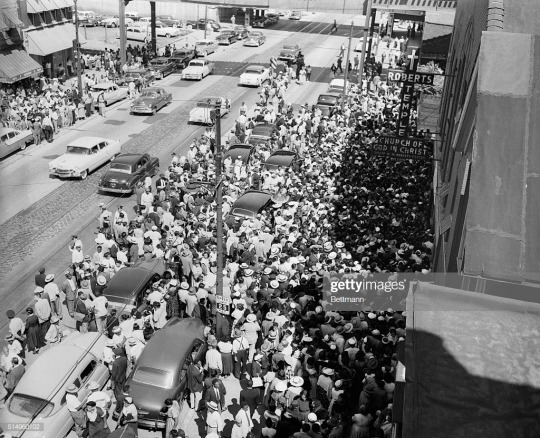

Jars are placed in stores to collect funds for Bryan and Milam.
September 18 A man by the name of Frank Young tells Howard that he knows 2 witnesses, Collins and Loggins but Sheriff Strider arranges for them put be put in protective custody at the Charleston, Mississippi jail.
During the trail Bradley, black congressman from Michigan Charles Diggs and several black reporters stay at Howard's house in Mound Bayow which is patrolled by his armed guards.
September 19 Roy and Milan are tried at the county courthouse in the town of Sumner, the western seat of Tallahatchie Country.
The courtroom's capacity of 280 is filled and the trail lasts for 5 days.
Mose is photographed by Ernest Withers as he points out Milam who he says he recognised as being 1 of the 2 men who came to his cabin, the only light in the house at the time was Milan's flashlight.
A reporter who covered the trail for the New Orleans Times Picayune says it was the most dramatic thing he saw in his career.
Bradley testifies saying that she had warned Emmett about Mississippi and that if he ever found himself in a situation that he should get on his knees and beg for forgiveness from the white people, the defense questions her identification of her son and a $400 life insurance policy that she had taken out for him accusing her of.
2 witnesses testify to having seen Collins and Loggins on Milam's brother's property and hearing someone being beaten and cries. Leflore County Sheriff George Smith, Howard and several reporters try to locate Collins and Loggins but Sheriff Strider had put them into protective custody at the Charleston, Mississippi jail the day before the beginning of the trail when 1 of the witnesses
Judge Curtis Swango allows Carolyn to testify but not in front of the jury, objecting that her testimony is irrelevant to Emmett's kidnapping and alleged murder.
Sheriff Strider testifies for the defense that Emmett is probably still alive and that the body found was white. A doctor from Greenwood on the stand says that the body is too decomposed to identify, and had been in the water too long to be Emmett.
One persecuting attorney says that what Emmett did was wrong but warranted a spanking not murder.
Gerald Chatham denounces the statements made by Sheriff and the doctor.
The defense states that that the prosecution's theory of events are improbable and also says that the jury's "forefathers would turn over in their graves" if they convicted Bryant and Milam as they would receive a life sentence or the the death penalty.
2005 The Department of Justice exhume the body and an autopsy conducted by the Cook county coroner positively identified Till using DNA from his relatives, making dental comparisons with photographs and.
Bradley said that when the jury retired to return with the verdict and she saw the black people who lined the walls and the backs of the room beginning to leave quietly she knew that they knew they were not going to get a guilty verdict, she tells her party that its time to go, Diggs insists "and miss the verdict", Bradley says that she already knew that the verdict was not guilty, Bradley and her party then leave.
The all white all male jury acquit the 2 men.
Howard also paid for Wright, Reed and another witness to relocated to Chicago.
November 3 The Emperor 25th Jubilee attends service at church and signs a revision of the 1931 constitution and promises more political liberties in parliament while continuing to keep all powers to himself.
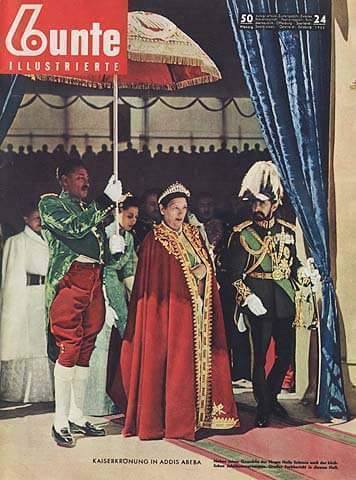
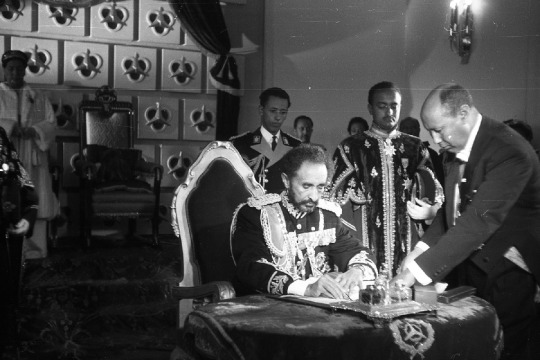
November 17 Kings first child, a daughter Yolanda Denise King is born.
November 27 Parks attends Dexter Avenue Baptist church where Howard speaks on Till's murder.
December 1 Thursday 18:00 Parks seated in the first row behind the white section of bus, along with four other African Americans is prompted to move further to the back of the bus but the section reserved for white fills up and 2 or 3 white passengers are left standing.
Parks refuses to give up her seat and is arrested.
Earlier on in the year Parks had completed a course in Race Relations at Highlander Folk school in Tennesse and had learn much about non violent civil disobedience tactics.
Parks said that thoughts of the treatment that her people were being subjected to understandably were going through her mind at that moment and in her 1992 interview with National Public Radio's Lynn Nearly also said that Till was also on her mind.
Parks is charged with violation of Chapter 6, section 11 of the segregation law and bailed by Edgar Nixon and her friend Clifford Durr.

Jo Anna Robinson and other members of the Women's Political Council print and begin to distribute 35, 000 leaflets informing the public of the boycott.
December 2 Friday 16-18 people meet at Mt. Zion AME Zion church including Parks, King and Abernathy.
December 5 Monday The Montgomery Advertiser publishes an article informing its readers of the boycott. African American cabs drivers charge the same fare as the bus.
Park is tried on charge of misorderly conduct and violating local ordinance fined $10 with court fee of $4.
King, at mass meeting held in Holt Street Baptist church is chosen by Ralph Abernathy and Rev. E.N. French as the President of the Montgomery Improvement Association to lead the Montgomery bus boycott decide that the boycott should continue.
December 8 Thursday Montgomery officials warn cab drives that anyone charging less than 45 cents will be fined.
The boycott lasts 385 days and ends Jim Crow on all public buses in Montgomery.
X establishes Temple Numbers 13 in Springfield, Massachusetts, 14 in Hartford, Connecticut and 15 in Atlanta, Georgia and also meets Betty Sanders after one of his lectures.
1956 January 30 Kings home is bombed.
February Fred Gray, attorney files federal court case Browder V Gayle (Aierelia V W. A. Gayle Mayor of Montgomery) is heard in the United States District Court, Colvin is 1 of 5 plaintiffs the others are Browder, Susie Mc Donald, Mary Louise Smith and Jeanetta Reese, all of who have been arrested earlier on in the year for refusing to give up their seats. Reese drops out of the case due to intimidation from.
February 21 King is indicted by the Montgomery County Grand Jury for alleged violation of a 1921 statute which outlaws boycotts against businesses.
March 19 Kings trail begins.
March 24 King is found guilty and fined $500 and $500 fees.
June 13 The district court in Browder V Gayle rules racial segregation on buses in the city of Montgomery and the state of Alabama as unconstitutional under the Equal Protection Clause of the Fourteenth Amendment of the U. S. Constitution.
October 21 Kimathi is shot and captured by fellow Kikuyu termed as askari meaning traitor.

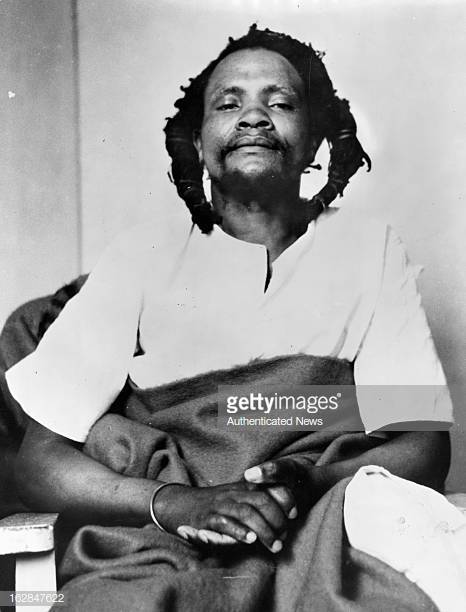
Betty Sanders joins the Nation of Islam also replacing her surname with the letter X.
November The state of Alabama appeals against the District Court's ruling at the United States Supreme Court who uphold the ruling.
December 20 The Supreme court issues order to Montgomery and state of Alabama to end bus segregation, the city passes an ordinance authorizing black bus passengers to sit virtually anywhere they choose on buses.
Roy and Milam agree between $3, 600 and $4, 000 to be interviewed by journalist William Bradford Huie for Look magazine about Till.
In the interview which is held at the law firm of the attorney's who had defended them, their attorney's ask the questions and the 2 men willingly admit to killing the boy.
2003 The Untold Story of Emmett Louis Till documentary by Keith Beauchamp is released and PBS also air an effort installment of American Experience titled The Murder of Emmett Till.
December 23 Kings home is attacked, someone fires a shotgun through the front door.
December 24 Christmas Eve, A black teenager, after coming of a bus is attacked by a group of white men.
December 28 2 buses are fired on by snipers, a pregnant woman is shot in both legs.
1957 January 10 Abernathy, Fred Shuttlesworth, Joesph Louver form the Southern Christian Leadership Conference.
5 black churches are bombed, Reverend Robert J Graetz's house is also bombed.
January 23 Willie Edwards is lynched by a group of Klansmen.
February 18th Kimathi is executed by hanging at Kamiti Maximum Security Prison and King appears on the front cover of Time magazine.
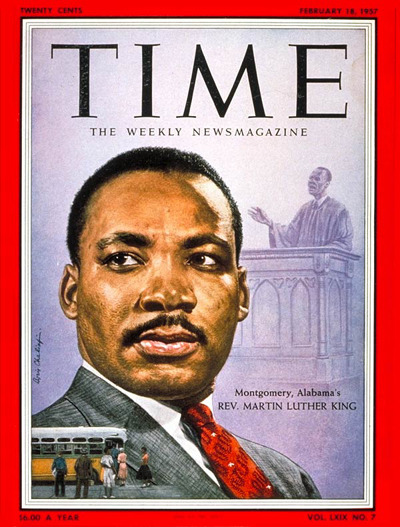
2007 February 18 On the 60th anniversary of Kimathi's execution, the official unveiling of the Kimathi bronze statue monument takes place in Nairobi with former Kenya Mau Mau freedom fighters Keiru Kioge, 84 and Thungu Githogo, 70 among those in attendance.
March 6 King attends independence celebrations in Ghana and also meet Kwame Nkrumah.
April 26 Frankee Lee Potts, Lypsie Tall and Hilton Johnson come across 2 police officers beating an African American man (Reese V. Poe) with their nightsticks and shout out This is New York not Alabama.
Johnson is beaten by 1 of the officers to the extent that he suffers brain contusions and subdural hemorrhaging.
The news reaches X who turns up at the 28th Precinct Station house with a small group of fellow Muslims asking to talk with Johnson, the police deny that Johnson is being held there but as the number of people at the station in support of Johnson grow to about 500, the police relent.
X sees that Johnson is taken to hospital in an ambulance, 100 of those at the station walk along with X up Lenox Avenue to Harlem Hospital and return to the station down West 125th Street.
The crowd outside the station grows to about 4, 000 people at the police station.
X and attorney Charles J. Beavers succeed in their trying to have bail granted for Tall and Potts but are unsuccessful in their attempt to have Hinton bailed and are told by the police that Hinton cannot go back to the hospital but must remain until the next day to appear in court.
X walks out of the station, gives a hand signal to the crowd of supporters and they begin to leave.
One police officer tells James Hicks editor of the New York Amsterdam News that "No man should have that much power."
April 27 The NOI pay $2, 500 bail for Johnson but the police decline to let him leave with X and Beavers.
Hinton is released outside the New York felony court and is taken to Harlem’s Sydenham Hospital where he is told that he has a 50/50 chance of surviving.
Hinton and the NOI file a lawsuit against the NYPD and are awarded over $70, 000 the largest sttlement of the time.
May 15 King attends Evangelist Billy Graham crusade in Madison Sqaure
May 17 Randolph collaborates with Bayard Rustin and Ella Baker to organise the Prayer Pilgrimage for Freedom march in Washington D.C. at which Wilkins is among the speakers, King makes his first national address and makes his "Give us the Ballot" speech.

King (at podium); first row: Wilkins, Randolph, Reverend Thomas J. Kilgore Jr., unknown, and Abernathy; Vivian Carter Mason (second row right).
June 13 King and Abernathy meet with Vice President Richard M Nixon.
King becomes President of the Southern Christian Leadership Conference.
October 23 Martin and have their second child, their first son Martin Luther King III.
X sends telegram to the Police commissioner.

1958 January Malcolm proposes to Betty during a conversation on the pay phone in a gas station in Detroit and marries her two days later before a Justice of Peace at his brothers house on South Butler Street in Lansing, Michigan.

Pinnacle burnt by Police members disburse.
March 1 Prince Emmanuel's 21 day convention at Back O Wall in West Kingston, Jamaica begins.
1960 August 6 The Daily Gleaner.
In March 1958, Prince Edward C Edwards held a 'Convention' of Ras Tafari brethren at Kingston Pen adjoining Back O Wall Handbills had been circulated in advance announcing this Convention Some brethren from as far afield as Montego Bay sold their belongings and giving away the proceeds came in Kingston in the firm belief that at the end of the Convention they wold embark for Africa.
The Convention was reported in the JAMAICA TIMES (March 8, 1958 ppl and 14). Eye witnesses relate that a large number of old car and traetor tyres were collected at Orince Edwards's establishment behind the Tivoli Cinema. H.E. the Governor, Sir Keneth Blackburne, visited Edwards premises before the Convention opened and that speeches made by young and old on the platform before the assembly consisted of streams of filthy language, which is perfectly in order among some brethren, who hold that no words are bad in themselves. Nightly dances to the akete drums were held around fires fueled with the collected Tyre Some witnesses indicate that there were guards. "soldiers" and the like policing the place The Niyabinghi dance and theme were publicized through these gatherings which lasted 21 days On one occasion units of the Kingston Fire Brigade were called on to put out the fires which had become threatening They did this with considerable enthusiasm, dousing the environs at the same time Thereafter there were no fires One morning at about 4 a m an assembly of Ras Tafari Brethren moved in a body to the Parade known as Victoria Park shouting their intention to capture it. On receiving news of this, the police moved to meet them and after some fighting the Park was cleared.
THE CONVENTION, which had apparently attracted three thousand people (Jamaica Times, 8th March 1958, p1) many of whom have ended without anyone embarking for African Those who had disposed of their property in this belief were ashamed to return to their communities Prince Edward's convention marks the decisive point in the deterioration of relations between the Government and the public on the one hand and the Ras Tafari movement on the other The antisocial elements so heavily emphasized during those three weeks were perhaps irrevocable. During the latter part of 1958 two cases occurred at Trench Town, Kingston in which Ras Tafari men were said to have thrown children into the fire as sacrifices.
The cult of and increased steadily within the movement. Its moderate wing lost control, and a fair number of E.W.F. Locals became dormant The news of Haile Selassie's land grant spread like a rumour, unverified, irrefutable. The executive of Local 19, who held the letter did little to publicist the facts The moderate wing were sharply divided among themselves on doctrinal and personal grounds. The Daily Gleaner Saturday, 1960 August 6 - Page 8.
When Norman Manley visited it as premier, accompanied by my brother Hartley Neita of the Government Public Relations Office, they had a hard time just finding somewhere to walk. A published paper following the visit described how families slept on cardboard and crocus bags. "There were no roads, just beaten tracks winding around each hut...and no piped water, one man had built a latrine where he charged residents one penny to use it. The alternative was at the edge of the community where they scraped a shallow hole and squatted to drop their waste. The smell from the combination of rotting wood, sour water and faeces and scraps was a nauseous, stomach turning smell."
The other side of Tivoli article in Jamaica Observer by LANCE NEITA 2014 December 13 Saturday.
The Back O Wall area inhabited by some 3, 000 residents was bulldozed in 1963 and Dungle or Dung Hill off Foreshore Road (now Marcus Garvey Drive) in 1966 for the new Tivoli Gardens Garrison. Dr Clinton Hutton, lecturer in the Department of Government at the University of the West Indies (UWI), Mona campus Cooke Gleaner 2010 August 29.
After the bulldozing of Back O Wall, Prince Emmanuel then moves to Galilee (Harris Street), Jericho (Spanish Town), Greenwich Street, David Lane, 54b Spanish Town Road in Denham Town, Western Kingston, where he founds the ETHIOPIA AFRICA NATIONAL CONGRESS and finally to 10 Miles Bull Bay in the parish of Saint Andrew, North East of Warieka Hill, renaming the ETHIOPIA AFRICA NATIONAL CONGRESS as the ETHIOPIA AFRICA BLACK INTERNATIONAL CONGRESS and publishes his Black Supremacy in Righteousness of Salvation.
2010 May social unrest in Tivoli Gardens Jamaica government declare a month long state of emergency.

Bruce Golding prime minister of Jamaica and leader of the Jamaica Labor Party signs the warrant for the arrest and extradition of Christopher Coke Dudus son of Lester Coke aka Jim Brown founder of the Shower Posse. Golding had refused to have because evidence had been obtained illegally by wiretap.
Dudus's supporters stage protests and barricade the street.
May 21 Friday Several police stations are attacked. 2010 May 25 www.bbc.co.uk Jamaica security forces storm 'drugs lord' stronghold.
May 23 Sunday 2 police are killed.
May 24 The manhunt for Dudus begins, a combined Soldier and Police operation storm the Tivoli Gardens slum.
May 25 Article in the Guardian reports that 44 have been killed during gun battles between the security forces and gunmen, this figure was given by Bishop Hero Blair who toured the slum escorted by security forces, Public defender Earl Witter says that most of the corpses at the morgue "appeared to be those of males under 30. There were no women among the dead."
The road to Kingston's international airport is closed and flights are cancelled.
May 26 Bulldozers are brought to clear the makeshift barricades of sandbags, barbed wire and junked cars thrown up by Coke's supporters.
The article published on this day written by Ross Sheik in Kingston and Carolina Davies for The Guardian entitled Residents trapped inside of their homes also reports that 4 soldiers and police have been killed, 37 have been injured and more than 500 are held in a temporary detention centre at the National Stadium.
Witter says residents, trapped in their houses, were in desperate need of help. "They complained that they were bottled up inside the buildings that were cleared," he said. "There was no running water, bodily waste was stored in pails.
"In a section called Rasta City there were some 30 children, many of them toddlers, who needed particular care. In one case a mother was injured and taken to hospital and she left her 18-month-old son with no one in particular." 10℅ of Kingston is cordoned off
May 27 The Daily Mail reports 60 dead.
June During the week of Dudus's arrest, the Jamaica government offers $60, 000 for any information on his whereabouts.
June 22 Coke, disguised wearing a wig and women's clothes is arrested at a roadblock at Mandela Highway on the way to surrender at the US Embassy in Kingston.
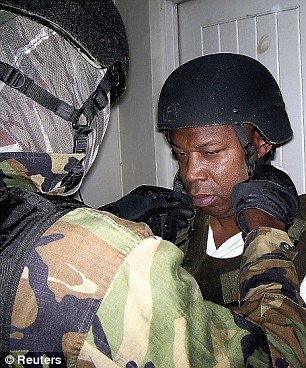
2011 May Coke pleads not guilty to federal drug trafficking and weapons trafficking.
2011 August Coke pleads guilty to federal racketeering charges in connection with drug trafficking and assault/racketeering conspiracy for trafficking large quantities of marijuana and cocaine into the U.S. and conspiracy to commit assault in aid of racketeering, for his permission of stabbing of a marijuana dealer in New York City.
2012 June 8 Coke sentenced by Federal Court in New York to 23 years.
August 29 Notting Hill race riot Majbritt Morrison, a Sweedish woman, has an argument with her Husband Raymond at Latima Road underground station, a fight breaks out between Raymond's friends and some white people who attempt to intervene.
August 31 Majbritt is assaulted by a group of white youth.
A white mob begin attacking the houses of the West Indian residents on Bramley Road.
September 3 King is arrested, charged and jailed for loitering at courthouse during Abernathy case.
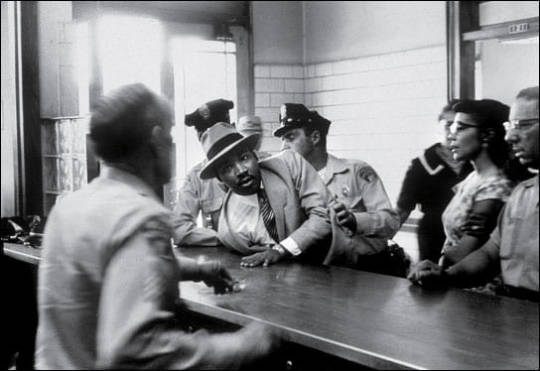
September 17 King’s book Stride Toward Freedom is published.
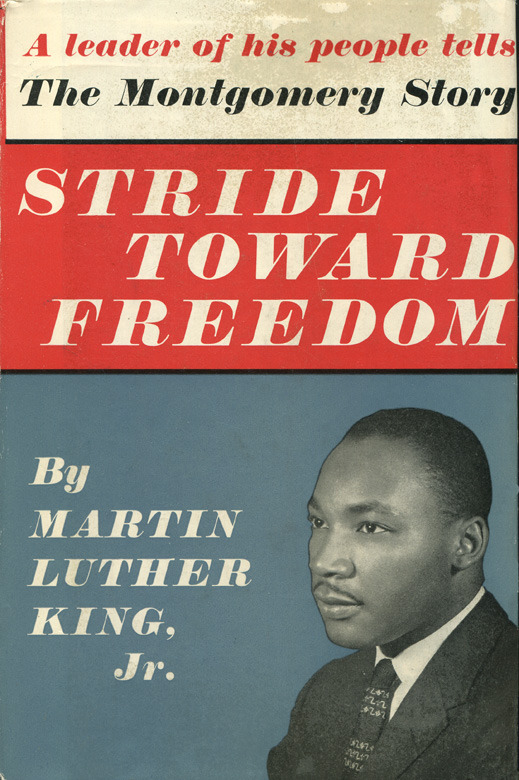
September 20 King is stabbed in the chest by mentally ill black woman with a letter open while signing copies of his book Stride Toward Freedom in Blumsteins department store in Harlem.
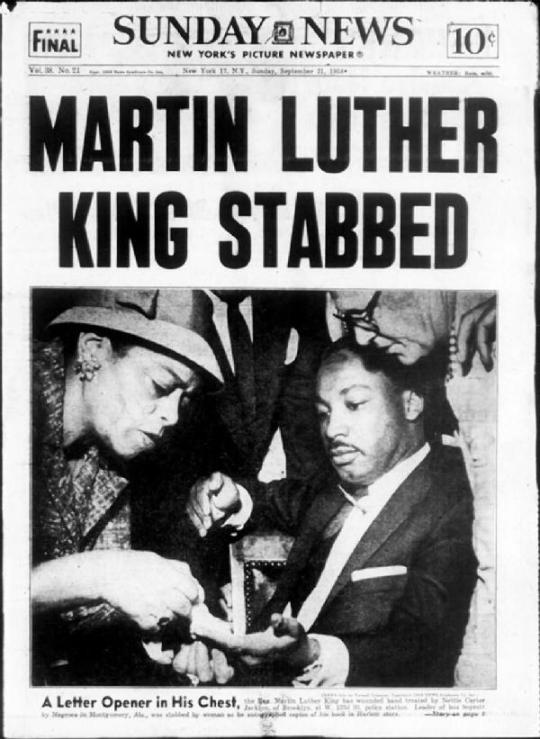
October Du Bois, after regaining his passport, travels to Russia where he addressees the Afro-Asian Writers Conference held at the Alisher Navoi Opera and Ballet Theatre in Tashkent.

Randolph Youth Marches for Integrated Schools in Washington, DC.
1959 February 3 King travels to India, meets Prime Minister Jawaharlal Nehrie.
March 2 Reverend Cladius Henry's Seventh Emmanuel's Brethren distribute 15, 000 tickets.
April Henry is held after raid.
May 7 Mornings a dispute occurred at the Coronation Market Spanish Town Road, Kingston between a bearded Ras Tafari gate keeper and a non Ras Tafari police man both employees of the KAC. According to informants the policeman was quickly assisted by other policemen and the Ras Tafari was severely drubbed in public.
According to the brethren the market vendors, who knew and were friendly to the beaten man proceeded to stone his assailants with vegetables and anything they could lay hand on.
Lorry a fire.
A fire bridgade turned up the brethren say the Ras Tafari proceeded to batter the police and set the van on fire, more police arrive and there was a general melee at the end of which, the police were fully in control and are said to havewen to the Back O Wall area where where many Ras Tafari live and there wreaking vengeance some had their houses broken up about 57 were arrested a fair number of beating are alleged to have taken place and many Locksmen were forcibly shaved.
August 1 9:00 holders of certificate (card) requested to visit Henry's Seventh Emmanuel's Brethren HQ at Rosalie Ave. off Waltham Park Road for Emancipation Jubilee. Please preserve this Certificate for removal. No passport will be necessary for those returning to Africa. Bring this Certificate with you for "identification " We are sincerely, "The Seventh Emmanuel's Brethren" gathering Israel's Scattered Children for removal, with our Leader God's Appointed and Anointed Prophet Rev C V Henry R R
October 3 Pioneering Israel's scattered Children of African Origin back home to Africa, this year 1959, deadline this new Government is God's Righteous Kingdom of Everlasting Peace on Earth. certificate.
November Henry's son Reynold Henry and US citizen Mitchell Swaby arrive in Jamaica from the United States.
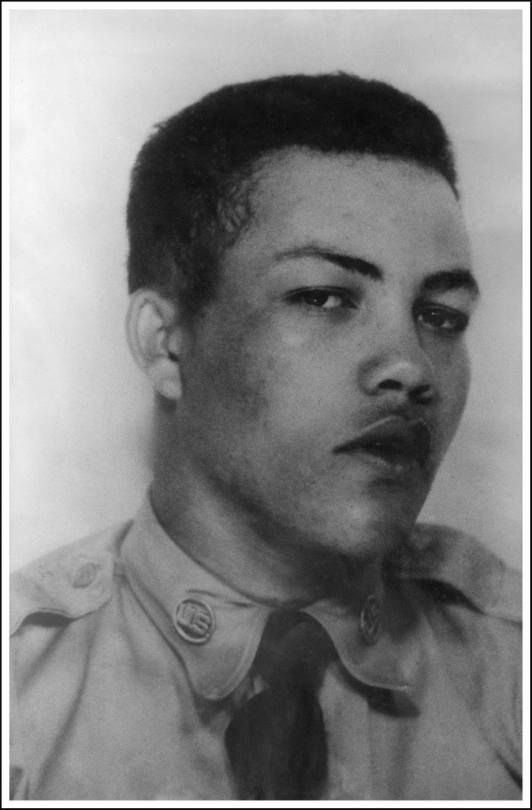
November 30 Immigration officer and sergeant of police Frank Alfred Davis with two officers is sent to Cladius Henry’s at 78 Rosalie Avenue by the acting chief immigration officer to inform Henry that he is to report to the police HQ the next day.
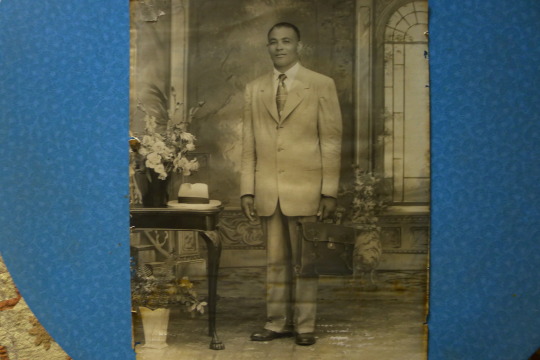
Henry receives letter from Fidel Castro.
December 5 Henry holds meeting at his 78 Rosalie Avenue residence with two to three hundred present on the premises two men at the gate report in the Star newspaper on premises speaks of machine guns Manley 14, 000 and that trip to the United States thought he had gone to see his wife but he had been to Russia as well as to see the King of Kings.
Du Bois is awarded the International Lenin Peace Prize by the USSR.
X visits the United Arab Republic of Egypt/Syria, Sudan, Nigeria and Ghana.
King publishes his the meseaure of a man book including his what is man and The Dimensions of a complete life Sermons.
Count Ossie records Kumina Burru drumming for Prince Buster produced Oh Carolina by the Folkes brothers.
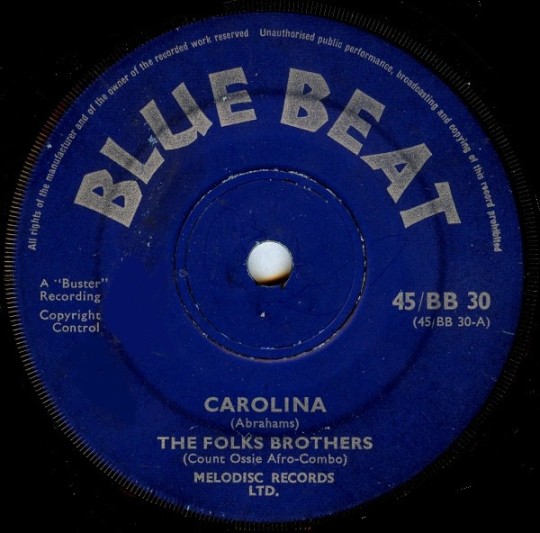
1960 Rupert Gabbidon orders Ras Tafarians Claude Beckford aka Thunder, R. Mac Donald and Gerald Scott to lay down on their faces then shots them.
June 22 Wednesday The Daily Gleaner.
Police and Military undercover Red Hills Rastafari arms cache DESPERADOES WITH RAPID FIRE GUNS KILL TWO ROYAL HAMPSHIRE SOLDIERS two other infantry men critically shot Gang of five, some bearded, hijack van, escape to Sligoville
PREMIER CALLS ON PUBLIC TO HELP
A COMBINED Police Military raid on Rastafarian camp in the Red Hills area, yesterday morning, was turned into a deadly ambush when five men attacked the raiding party from the rear and fled, leaving one soldier, a member of the Royal Hampshires, dead on the ground and three other members of the same unit critical wounded.
A second soldier died at Military Hospital at Up Park Camp last night and the other two wounded men were reported still on the danger list, particularly one, who was shot three times in the chest and once in the neck. Automatic weapons were used in the attack.
The surprise attack and casualties increased the tempo of the combined Police Military operations, in an area stretching all the way from Red Hills, through Ferry to the rugged hills of Sligoville, where the five desperadoes are said to be located.
They reached there after slipping through the Police and Military cordon in the Red Hills area and then headed for cover by commandeering at gun point a van owned by Wills Battery Company, and driven at the time by Mr. C. Staples, and shooting their way through a Police and Military road block along the Spanish Town Road, near Ferry.
SUBMARINE RUMOR Yesterdays development follow a weekend filled with rumors of increased subversive activity in Jamaica, including stories that a strange submarine had landed arms on the North coast and that large quantities of arms had been secretly brought into the island. There was no confirmation by the authorities of these rumors.
The operations were described by the Premier, the Hon. Norman Manley, however, as "normal", in a broadcast to the people in which he appealed for the cooperation of citizens to assist the Government in protecting the good name of the country.
Up to Press time, Police and soldiers (of both the Royal Hampshires and the West India Regiment) had a widely stretched cordon around the entire area of operations, although in concentration in the Sligoville area; a heavy armed guard has been assigned to duty at the Sligoville home of the Hon. Willis O. Isaacs, Ministry of Trade and Industry; ad armed Police protection had been alerted at the homes of the Premier and other ministers of Government.
The combined Police and Military operation moved out to cordon off the Red Hills area early yesterday morning in order to take measures which were described by the Ministry of Home Affairs yesterday in the following words:
"The Military and Police operations now taking place are a continuation of the security measures being taken by the Government in places where it is suspected ganja and/or crude weapons are stored for activities similar to those which were discovered".
This is a reference to raids made in April by the Police on the African Reform Church premises of the Rev. Claudius Henry, Repairer of the Breach, now held without bail on a Treason Felony charge, and to raids by the Military and Police on Rastafarian camps in the Wareika Hill area.
The movement, which began around three o'clock yesterday morning, was directed against a Rastafarian camp the Police knew existed in the Red Hills area. The camp is located on the slopes of the hill overlooking approaches, and connect with Washington Boulevard. High level Police and Military conferences over the week end decided to move in on the camp.
ENCIRCLEMENT The area was cordoned off during the dark, and at dawn the raiding party moved in. When they arrived there, however, it was empty. All that was found were dynamite, crude bombs and several sharp two edged cutlasses. A party of Hampshire Regiment soldiers was left at the camp while other member's of the raiding party began what was to be a day long combing of the area.
Details are not yet available, but around 11:30 a.m. yesterday the residents of the Red Hills area were startled by the sound of shooting from the bush.
According to an official release, five men, believed to have been among the occupants of the camp, made a surprise attack on the search party at the camp, shooting one fatally and wounding three others. One of them died later at Military Hospital.
The five men have been described as dressed in military style khaki clothing. Three of them were brown and two black; three were bearded fully, two appeared to be without beard, They were armed with long guns or automatic weapons, and one had a long revolver stack in the top of his trousers.
After they had escaped from the scene of the camp's disaster, they were next placed along the Spanish Town Road just below Ferry and a Police Military road block.
Here, two hundreds yards east of Ferry, they seized a Fod can belonging to Wills Battery Company at gun point, ejected the driver, crashed a Police cordon, shooting as they headed towards Spanish Town and Sligoville, A police van which was headed toward Kingston turned around to give chase and in turning went over the embankment.
On the way to Sligovile, people have told of being asked the way, by armed men in a car, and some at Cotton Piece, about five miles from Sligoville, said the men waved to them as they sped towards Sligoville. At Cedar Valley, two miles from Sligoville, the Ford van crashed into a telegraph pole as it attempted to negotiate a corner. The occupants fled the vehicle, carrying their weapons and amunition, and disappeared into the bush.
The Police and Military units are now concentrated in the area, having set up campaign headquarters at Mt. Moreland Postal Agency, about two miles from Sligoville. Two Police dogs are in the area to join the search, while a spotter plane overflew the Sligoville area all yesterday afternoon to assist the ground search for the wanted men.
Though alowed by darkness and difficult terrain, the search for the desperadoes went on through the night.
Shooting, then Screams from the bush
REVOR Wilfris, A 16 year houseboy who works about a quarter mile from thescene of the shooting, told the Gleaner that between 11 a.m. and 1 p.m. some soldiers came to the house and took him down to the now defnnet Red Hills Country Club.
At the club they asked him if he knew where any Rastas lived. He told them he did not know, he had only seen them working on a nearby quarry, They returned him to the house shortly after.
While in the house, soldiers accompanied by policemen started moving toward an in the bush near the home.
Long after he heard shooting and screams. An officer shouted for some soldiers and stretchers. Two men were carried away on stretchers. The shooting lasted about 5 minutes.
Military h/q closed to visitors
FULL SECURITY measures were taken at Up Park Camp yesterday, which became closed to all visitors.
Inquiries at the Military Headquarters for the names of the members of the Hampshire Regiment killed and injured in yesterday’s raid on the Rastafari camp at Red Hills, produced no information. The names will not be released until the next of kin have been notified.
Meantime, units of the Hampshires have joined the West India Regiment units and the Police in the Sligoville Area in continuation of the search for the armed desperadoes wanted by the authorities.
Crash kills van driver
OLD ENGLAND Mr. June 21 (From out correspondent) ONE MAN was killed and another seriously injured in an accident on the Old England Brokenhurst main road shortly after noon today.
It is reported that a van owned by Blue Ribbon Bakery of May Pen, and driven by Mr. Dalton Sutherland, 26, of Four Paths, overturned while negotiating a corner, Mr. Sutherland was pinned down under the van and died on the spot.
Mr. James Ferguson, 40, a salesman who was travelling on the van, was seriously injured and was taken to the Mandeville Hospital.
Ten in hospital after bus plunge
THIRTEEN persons were injured yesterday when an Enterprise bus plunged down a 45 foot ravine into a river at Trinityville, St. Thomas.
UNIA appeal Help root out ‘evil menace
MR. RALSTON S. POWELL, Commissioner of the Universal Negro Improvement Association in Jamaica (founded by Marcus Garvey) told the Gleaner last night he wished to send profound sympathy to the relatives and Army colleagues of the deceased and injured soldiers.
As a result of the shooting he said, well thinking citizens should aid the Police in rooting out the “evil menace in our midst”.
He wished to make clear that the UNIA did not tolerate such “un-Jamaican and un-democratic activities” and they were determined to help in whatever way they could to prevent any similar incident here.
Machine gun hold up ORDER:DRIVE US THROUGH
THE driver of the 1959 Ford pick-up belonging to Willis Battery Company, which was commandeered by five desperadoes on their way to the hills of Sligoville yesterday, described last night how the vehicle was taken from him.
The driver, Mr. Staples, said he was driving toward Spanish Town around noon.
At the bridge, just before reaching Ferry Police Station, five men, dressed in greenish uniforms resembling the uniforms of American soldiers, wearing what he believed to be false beards, and each holding what appeared to him to be a machine gun, suddenly appeared; standing in the road, causing him to stop the vehicle.
One man climbed in beside him, stuck a machine gun into his ribs and ordered him to “drive us through”. Four times he was ordered to do so, and four times he refused. He told them he must know what it was all about before he would drive them. The man refused to tell him; Meanwhile, the other four men had climbed in the pickup from the rear.
A police van approached from the opposite direction and there were exchanges of gun fire between the men and the police; one bullet struck the wind screen, breaking it. The man beside him called to one of the men behind. “You come an drive”. He then opened the van door and pushed him out on the road. Another man, he said came from the rear pushed him aside, climbed in and took the wheel. The motor had been left running and the desperadoes drove off, leaving the driver crouching on the road.
While on the ground, the driver saw the Police van trying to turn round to pursue the bandits, but in the manoeuvring, it went over into the ditch. He heard Police in the upset van, radio to all units a description of the stolen pickup.
The desperadoes threw out his “tool-pan” as they drove away.
A POLICE ROAD BLOCK on Spanish Town Road, at Duhaney Bridge, similar to that at Ferry through which the five desperadoes shot their way yesterday to escape into the rough, broken hilly terrain of Sligoville.
Troops move on Civil Servant’s home
THE HOME occupied in the Red Hills area by Mr. A, St. A. Clarke formerly Senior Statistician in the Civil Service, now attached to the Ministry of Finance, was involved yesterday morning in the security manoeuvres in that area by Military and Police units.
The security forces searching for Rastafarians, moved in on the house, situated some distance beyond the old Red Hills Country Club, about 7:00 yesterday morning and later in the morning and questioned Mr, Clarke. Soldiers were reported to have battered on the door.
At home at the time were Mr. Clarke, his wife and their seven year old son.
Mr. Clarke, who wears a beard, later lodged a complainant with the Ministry of Home Affairs.
He vacated his family from the home for the rest of the day.
Report unusual Rasta moves – Manley
THE Premier, the Hon Norman Manley, Q.C., made an appeal for the cooperation of citizens in reporting unusual movements of Rastafarians to the proper authorities, in a broadcast yesterday afternoon.
Mr. Manley was reporting to the island on yesterday’s incidents in the Red Hills and Sligoville areas:
He said:
“I want to say just a few words about the news that you have probably heard in regard to a raid made by the Police and a detachment of soldiers on a Rastafari camp in the Red Hills.
“I deeply regret that a soldier was shot and killed and three wounded.
“This was done by five of the men who had been in the camp, who managed to get hold of weapons and were shooting their way to escape. It seems that they feel upon the soldiers from the rear,
“This was just a normal raid that was being made on this camp where we discovered the sort of thing that we had found at Rosalie Avenue; we discovered dynamite and cutlasses and things like that.
Must End
“There is no need for anyone to get alarmed, but at the same time, everyone must realize that this wicked and mischievous activity must come to an end. These people and I am glad it is only a small number of them are wicked enemies of your country.
“They are doing your good name great harm, and it is tragic that this sort of thing should be happening just when we are on the verge of becoming an independent people.
“I want to ask every citizen to assist your Government in protecting the good name of your country. I want to ask you all to report any unusual movements you may see of Rastafari people whether they are going in ones or twos or in groups, wherever they suddenly appear in suspicious circumstances.
“I think you have a duty to do this. Make your report to the proper authority, if need be, to the nearest Police station. I promise you that anybody giving information along these lines will have his name kept absolutely secret and will be protected in every way, completely protected. We will do our duty, you do yours, and all will be well.”
Government sympathy to relatives of dead
Following is the text of an announcement made by the Ministry of Home Affairs yesterday afternoon on yesterday’s security measures by the police and the military and on developments:
“The Police and Military raid, mentioned in an earlier statement made by the Ministry of Home Affairs took place early this morning. A well prepared camp was discovered in the Red Hills area but when the raiding party moved in no one was there and it was evident that the camp though recently occupied had been abandoned.
“As we expected dynamite, crude home made bombs and other crude arms were discovered.
“At around 11:30 a.m. five persons, who are believed to have been amongst the occupants of the camp, made a surprise attack on members of the search party, shooting one fatally and wounding three others. These desperadoes then made their escape by commandeering a vehicle at gunpoint on the Spanish Town Road. Appropriate follow up action is proceeding.
Mischief
“Steps have already been taken to advise relatives of the soldiers who suffered casualty in the unfortunate incident, and the Government expresses its sympathy to their relatives.
“There is no doubt that a small element of the Rastafari movement is determined to make mischief and to do damage to the good name of this country. Government calls for the co operation of all law abiding citizens to help to put and end to this wicked conduct.
“Everyone is asked to bring to the attention of the Police authorities any evidence they have of the movements of these persons whether in twos or threes or in larger numbers or any suspicious activities by strangers that they may notice. Government guarantees that their reports will be kept secret and they will be fully protected.
“There is no need for alarm but we must put a stop to this business”
Two held; in ganja charge
DURING the Military operations at Sligoville, yesterday evening, the Police arrested, on a charge of having Ganja in their possession. The men are Gladstone Perkinsm 44, of 44 Seventh Street. Trench Town, and Samuel Tucker 39, of Maxfield Park settlement. They were taken in by Acting Corporal Grant of the Half Way Tree CID.
The soldiers, several hundreds of them, from both the Royal Hampshires and the West India Regiment, together with hundreds of Police armed with rifles, bren guns, sten guns, and light mortars, displaced themselves for an all nig combing of the area but up to the time of going to Press, had made no contact with the armed fugitives.
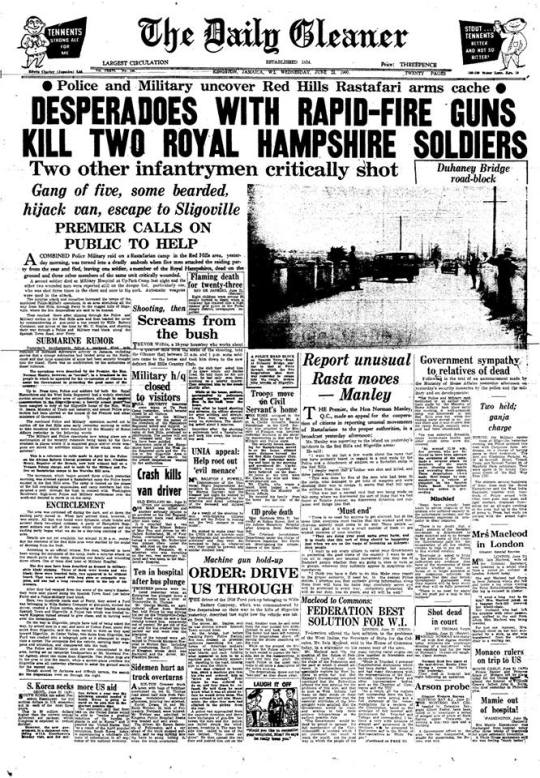
June 23 King has a private meeting with Democratic presidential candidate John F Kennedy.
July 26 Tuesday The Daily Gleaner.
Reynold Henry, Al Thomas, William Jeter and Howard Rollins found by military and police unit after 7 day manhunt whilst having fallen asleep in shop at Orange Grove in Sligoville, St. Catherine, Rollins is shot reaching for machine gun and later taken to Kingston Public Hospital by ambulance, Henry was as he tries to reach for a weapon is struck by a soldier with the butt of his rifle. taken to Central Police Station.
JAMAICA’S biggest manhunt came to an end just before dawn yesterday morning as four men Reynold Henry, Al Thomas, William Jeters and Howard Rollins, all American citizens were taken into custody by police and military units at Orange Grove, two miles out of Sligoville.
One man was shot. He is Howard Rollins, who the police say reached for a sub machine gun when the search party came upon them in a small dwelling house shop at Orange Grove. As he reached for the weapon, a soldier opened fire. Rollins is now under heavy guard in the Kingston Public Hospital.
The other three men three of the five whom military and police units have been searching for since last Tuesday are in the Kingston Police Station.
Hunger and sleep were the twin factors which led directly to the capture of the wanted men. The men woke up a lone shop keeper at Orange Grove, on Sunday night, demanded food and drinks and having had them fell asleep on the floor of his house. They were awakened just before 5 o’clock yesterday morning by police demands that they “come out with your hands up.” Rollins stirred and reached for the sub machine gun and was promptly shot by military and police guns trained in at a window and covering them as they lay sleeping on the floor.
The shooting was the signal for entry into the room. As the policemen and soldiers entered, Reynold Henry (son of the Rev. Claudius Henry, head of the African Reform Church, now held without bail on a charge of Treason Felony) reached for a gun. A soldier clubbed him to the floor with the butt end of his rifle.
Thus ended a chase and search which had occupied six days and which had begun at a Rastafarian Camp in Red Hills, where four Hampshire soldiers were shot two fatally and which had soread to the rugged hills and broken country of Sligoville. The police took into custody a sub machine gun and several small arms and a large quantity of ammunition.
IDENTIFICATION PARADE
The hunt ended just a few hours before the police had established that the three Rastafarians killed at the Red Hills camp, included among them the long wanted Claudius Beckford, otherwise called “Thunder.” They had all been shot in the head, allegedly on the orders of American nationals who had joined the camp at Red Hills. Before their deaths, Beckford and the two others Gerald Scott and R. McDonald whose bodies were discovered at Red Hills on Sunday were the leaders of the camp.
All four captured men are to be charged with murder in connection with the deaths of the two soldiers at Red Hills on Tuesday and evidence is being accumulated in connected with the death of the three men whose bodies were discovered on Sunday.
Three of them Henry, Jeters and Thomas will appear in the Half Way Tree Court tomorrow. An identification parade was held at the Central Police Station yesterday.
A police communiqué on the capture of the wanted men yesterday said:
At about 1.30 a.m. on the 27th June, a resident of Orange Grove reported to the Police that the four (4) wanted men had gone to his house and demanded food and drink, which he was forced to supply. They then went to sleep and this man contacted the police and military road block at Tredegar Park. As a result a small detachment was taken to watch the house and reinforcements were immediately called for from Sligoville. The reinforcements under Major D. F. Robinson 1 W. L. R. and Asst Supt. Of Police W. S. Howard left Sligoville and proceeded to the area.
A cordon was thrown around the house and at 5.00 a.m. a combined military and police unit moved in on the house. A window was broken by a W. I. B. Sergeant and a police man, who saw the four men lying on the floor. They were ordered out and one man subsequently identified as Howard Rollins attempted to reach the arms that were on the floor of the house. He was shot. Thereupon all the men surrendered to the police and army.
“The injured man was conveyed to the Kingston Hospital by a military doctor and ambulance unit.
“The other three men who are identified as Reynold T Henry, Al Thomas and William Jeters were send under escort to Police Headquarters, where they are detained.
“All four men are U.S. citizens. A quantity of arms and ammunition has been recovered.
“The Police are stil very anzious to interview the following persons:
Lawrence Thornwell RICHBURGH o/c Larry RECHBURGH, Mitchell Dunbar SWABY, Patrick Alnswirth GRANT, Qasim ABDULLAH, Phillip STEVENSON, David AMBRISTER, o/c David KENYATTA, Eldrid Zinton Emanuel MORGAN o/c ‘REX’, Donald Masou Harper, Titus DAMONS, George Junoir DAMONS, All WATUSIE o/c WATTUSEY, Jospeh Lee WILLIAMS o/c William JOSEPH, Sethi AMENEN HAT.”
MILITARY WITHDRAW
At a Press Conference yesterday morning, the Commissioner of Police, Mr. L. P. R. Browning, Lieut. Col. David Smith, Commanding Officer of W.I.R., Major Dunstan Robinson, of WIR, Mr. A. G. Langdon, Assistant Commissioner of Police and Captain D. Prothero, of the Royal Hampshires attended.
Mr. Browning paid tribute to the military, whose action in the operation was absolutely first class, he said.
A skeleton force of police had been left in the area but all military personnel have been withdrawn.
Mr. Browning stressed the fact that public support is still required even though the fugitives have been arrested,
Asked about the arrival of the fugitive s into the island Mr. Browning said that the time of arrival was doubtful.
Lt. Col. Smith said in reply to a question that the ammunition found on the men was not from the local military.
Taking part in the seven day man hunt were 400 military personnel and 100 police.
United States Consul Mr. Robert McGregor was kept informed of the situation up the the arrest yesterday morning, Mr. Browning told the Press Conference.
A reward of £1,200 will be paid today to the shopkeeper at Bamboo whose information to the police led to the arrest of the four fugitives.
Premier commends Police, Military
THE police and the military have been commended by the Premier, the HON. Norman Manley, Q.C., for their work in the manhunt which ended yesterday.
In letters sent to Brigadier Derek Lister, Commander Caribbean Area, and Mr. L. P. R. Browning, Commissioner of PolIce, yesterday, Mr. Manley said:
“Brigadier Lister, Please accept and convey to the commanding officers and all other ranks of the Hampshire Regiment and the West India Regiment the thanks of the Government of Jamaica for their devoted services in the recent troubles which have been brought to a successful conclusion today.
The Government of Jamaica repeats its sincere regrets and (Continued On PAGE 14)
‘Thunder’ one of the dead Rastafarians
CALVERT Claude Beckford, otherwise called “ Thunder” and wanted by the police on a Treason Felony charge since April, when the Rev. Claudius Henry was taken into custody on a similar charge, was one of the three men whose bodies were recovered from a grave at Red Hills on Sunday.
The two other dead men found in the grave were Gerald Scott and R. McDonald, also members of the Rastafarian Cult and members of the Ethiopian Coptic or Reform Church, headed by the Rev. Claudius Henry.
Postmortem examination yesterday morning settled the cause of their deaths. They were all shot in the head.
The police believe that the manner of their deaths was in the nature of execution and on the instructions of American nationals who had taken over command of the camp at Red Hills, where Beckford had been in hiding and where all three were up to recently the leaders of the cultists who occupied the camp.
Soldiers of the Royal Hampshire Regiment digging for weapons at the abandoned Rastafarian Camp at Red Hills on Saturday discovered a recent grave. Expecting to unearth one body a police and military search party visited the on Saturday morning and dug up not one body but three.
First indications were that the man had been strangled or hanged. Marks conforming with such a theory were found around their necks. A postmortem examination yesterday revealed the true cause. They had been shot at close quarters through the head.
Rastas identified
All Jamaicans, the dead Rastafarians were identified yesterday by other Rastafarians who were rounded up by the police yesterday and Sunday.
A police release on this matter said yesterday:
“It is now believed that the three men buried near the abandoned Rastafarian Camp in Red Hills woods are (1) Gerald Scott, (2) C. C. Beckford, and (3) R. McDonald. All these men were members of the Ethiopian Coptic Church and followers of the Rev. C. V. Henry. It is understood that these men were murdered on instructions from foreign members of the camp.” (Continued On PAGE 14)
HE CALLED FORCES WHILE MEN SLEPT
MR. SEPTIMUS HIGGINS, 46, the shopkeeper in whose house the four wanted men were held, yesterday told how he was forced to give them food and drink from his shop and was finally able to summon the security forces when the men went to sleep on the floor of his house.
The wanted men were held at Orange Grove yesterday morning between Tredegar Park and Sligoville by a detachment of policemen and members of “B” company of the West India Regiment.
Mr. Higgins said that at about 7.30 Sunday night four men came in his yard and called to him.
Reynold Henry said to him: “We are in trouble, we are out from Tuesday gone and we got nothing to eat. What do you have in the shop?”
Pot on fire
He said he told them that he had nothing save for “little flour, fish and oil” The four men went in the one room building used as a kitchen and sleeping quarters, made a fire and put a pot of the fire.
They went in the shop, took four bottles of aerated water from a shelf and drank one each.
Mr. Higgins said he gave them flour, codfish and oil, and the men helped prepare it.
The men made dumplings from the flour, cooked and ate them. Then they took off their clothing which were wet wrung them and placed them over cross sticks by the fire to dry.
Mr Higgins said they showed him their guns, saying, “These are for all those who set hands against us.” They put them on the floor.
They next asked for a cro (Continued On PAGE 14)

June 30 Thursday The Daily Gleaner.
ARRESTED AMERICANS EXCEPT ONE IN HOSPITAL TAKEN BEFORE HALFWAY TREE COURT FOUR CHARGED WITH MURDER OF SOLDIERS three also accused of slaying of Rastafarians.
As the round the clock search continues for five men wanted for questioning by the police two Jamaicans and three Americans three of the four men held in the Orange Grove section of the Sligoville area on Monday morning were taken before the Half Way Tree Court yesterday and charged with murder of two soldiers at the Red Hills Rastafarian camp and also with the murder of three Rastafarian members of the camp on June 15.
The men Reynold Henry, son of the Rev. Claidius Henry, head of the African Reform Church who has been held without bail since April, with 15 of his followers, on a charge of Treason Felony Al Thomas and William Jeters were taken to the Court under heavy military and police guards.
They were taken to the Court in a truck in which sat members of the West India Regiment with fixed bayonets and armed members of the police force. Leroy Malachai, an American, held earlier was also taken before the Court.
They were formally charged before His Honour Mr. Donald Eccleston, with the murder of 5 persons, two soldiers Brian Mettherell and David Philpott, privates of the Royal Hampshite Regiment, and three Rastafarians Calvert Beckford, otherwise called "Thunder," R. McDonald and Geral Scott.
Mettherell and Philpott were killed following a combined military-police operation on the Rastafarian camp at Red Hills on Tuesday last week, a development which led to the island's largest manhunt and the bodies of Beckford, McDonald and Scott were discovered by the police in a single grave at the Red Hills camp on Sunday. They had been shot in the head, eight to twelve days previously according to medical evidence. Other charges against the wanted men, as also against Leroy Malachai, who was held last week in premises at Duff Street (and who was charged last week with the murder of the two soldiers) and against Howard Rollins, otherwise called Quasim Abdullah (now recovering in the Kingston Public Hospital from a bullet wound on Monday morning) are being prepared by Mr. Huntley Monroe, Crown Counsel, who was been assigned to the police in connection with the preparation of the cases.
SOLDIERS ON EITHER SIDE The five men wanted by the police Gabidon, Eldrid Morgan, Jamaicans, Larry Heckburg or Lawrence Richburg, David Ambrister or David Kenyatta and Titus Damon, Americans, were apprehended up to late last night. Rewards of 300 each have been offered for information leading to their detention.
The four men (including Leroy Malachai) were brought to the Half Way Tree police station yesterday in a truck which was escorted by a police car. The accused sat in the middle of seat boards placed in the truck with soldiers on, either side of them. An English officer attached to the West India Regiment faced Henry and held a revolver trained on him. All the soldiers and policemen in the vehicle carried rifles.
The procedure was repeated on the return trip to the Central Polce Station. Handcuffed and barefooted and wearing dirty shirts and pants two with shirts unbuttoned and one wearing his shirt capelike across his shoulders, the three men taken to court were marched into court by soldiers of the West India Regiment carrying rifles with fixed bayonets. Members of the police force with batons also guarded the men.
Before the Court were Reynold Henry, 26-year old mechanic, a United States citizen of Jamaican birth; Al Thomas, 26 year old American labourer and William Jeters, 23-year old American electronics engineer. They are charged with being concerned together with Howard Rollins, otherwise called Quasim Abdullah, captured on Monday and now in the hospital suffering from a gunshot wound, Gabidon and Eldrid Morgan, still at large, that on June 15, in the Red Hills woods of St. Andrew they murdered Gerald Scott, Calvert Beckford and R. McDonald.
The second count against Henry, Jeters and Thomas charged them with being concerned with Abdullah on June 21 at the Red Hills woods with the murder of Brain Mettherell and David Philpott two privates of the Royal Hampshire Regiment.
The men were remanded in custody until July 6, Leroy Malachai, 26-year-old carpenter of Brooklyn, New York, who is also charged in connected with the murder of the two soldiers and with unlawful possession of unlicensed firearms and several rounds of ammunition was also brought into Court and remanded in custody until July 6.
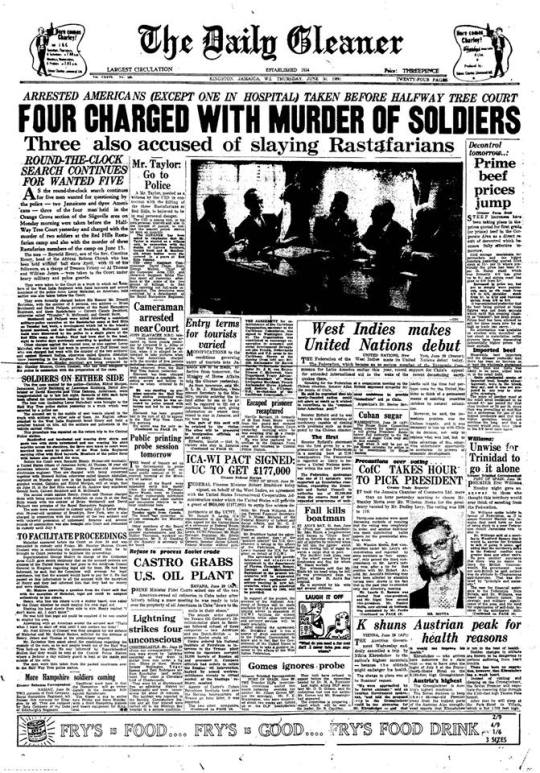
Rollins charged, convicted and sentenced to death for robbery and murder of Champion House club and bar Lyndhurst Road and Maxfield Avenue, St. Andrew.
Charged with seven counts of murder, tried, convicted and sentenced to death hanged on the gallows at St. Catherine District Prison.
September X attends the United Nations General Assembly where he meets Gamal Abdel Nasser of Egypt, Ahmed Sekou Toure of Guinea, Kenneth Kaunda of Zambian African National Congress and Fidel Castro of Cuba all of who invite him to their nations. as travels to Egypt, Sudan, Nigeria and Ghana.
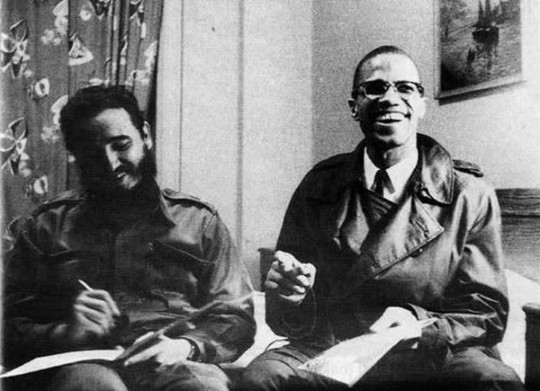
October 1 The Daily Gleaner.
JURY TAKES FOUR HOURS RETIRES THREE TIME BEFORE RETURNING VERDICT
REYNOLD HENRY, GABBIDON, MORGAN, JETER TO HANG
Damons, Rollins, Thomas acquitted
COURTROOM CROWDED, THOUSANDS OUTSIDE
THE death sentence was passed last night on four of the seven persons charged with the murder of Gerald Scott after a jury sitting until 7.45 o’clock and retiring three time had found them guilty of murder.
Sentenced by the Chief Justice to be hanged were Reynold Henry, 26, Eldred Morgan, 22, William Jeter 23, and Albert Gabbidon, 23, at the conclusion of a ten day trail.
George Domons, Howard Rollins and Al Thomas were acquitted of the charge.
When sentence of death was passed by Sir Colin MacGregor Henry, who during the trail was referred to as the “Commander” at the Camp in Red Hills woods where Scott was shot shrugged his shoulders, struck an unlighted cigarette in his mouth and leaning over to his Counsel, Mr. W. B. Frankson said “you tried your best. You did a dam dine job”.
William Jeter turned to his Counsel, Miss Gladys Morrison and smiled broadly from the oversized prisoners dick which had been built specially to accommodate the accused.
Morgan and Gabbidon stared straight at the Chief Justice.
A packed No.1 Home Circuit Courtroom, many of the occupants having arrived at the Court from 8 o’clock that morning, and eat lunch in the building listened in dead stillness to the verdict.
Outside, thousands of people waited in the dark to hear the outcome and to see the accused when they were being taken from the Courtroom.
The charge against the men followed the discovery in the Red Hills woods if three men buried in a single grave. The three men were identified as Gerald Scott, Calvert Beckford, otherwise called “Thunder”, and R. McDonald, all Rastafarian cultists.
Jury retires first time
Evidence led by the Crown during the trail was that the three men were among five found guilty of “treason” by the accused, ordered to lie down on their faces and shot by the accused Albert Gabbidon. Two of the men were granted a last minute reprieve by the accused and one of these, Alvin Irving, was the chief witness for the Crown.
Ten witnesses gave evidence for the Crown during the hearing and all of the accused with the exception of Henry and Rollins entered the witness box and gave evidence on theor own behalf.
Yesterday the Chief Justice finished his address to the jury which he began on Thursday afternoon and at 2.50 p.m. the jury returned for the first time.
While they were out Henry sat reading a STAR, and Gabbidon sat wiping his face with a handkerchief. At the time Mr, United States Vice Consul who has been watching the trail on behalf of the United States Government, chatted with Henry.
AT 6.40 p.m. two hours after they had been out, the jury returned and asked further directions from the Chief Justice on the question of common design. After retiring once more the twelve men returned to the Courtroom and the foreman, Mr. Stanley Prendergast, informed the Court that they were unable to agree on a decision with respect to all the prisoners.
They were offered ten minutes more time by the Chief Justice, left and returned to the Courtroom at 7.35 four hours after they had first retired: In a packed courtroom that was momentarily stilled the foreman delivered the verdict making recommendation of mercy in respect of the condemned Morgan and Jeter.
Three removed from dock
The Chief Justice ordered the accused who had been acquitted to be taken from the dock and after the black cap was placed on his head, addressing the remaining four said: “After two weeks of very patient and careful hearing and after hours of consideration the jury have come to a verdict guilty of murder against all four of you.
“In regard to Morgan and Jeter, I have noted the recommendations for mercy, the recommendations I will forward to His Excellency the Governor with such recommendations as I see fir to add.
The sentence of the Court on each one of you is that you suffer death in the manner authorised by Law.
When the prisoners were taken from the dock the Judge told the jury of Stanley Prendergast, Eleuterious Kirkland, Peter Nelson, Charles Phillips, Eric Smith, Audley Renwick, Walter Tomlinson, Vincent Rose, Lorenzo Parkes, John Archer, George Roman and Winston Parris, that he was discharging them from jury service for the next five years.
Outside when they were being transported from the Court, Henry and Gabbidon waved to the crowd of thousands that gathered in the precincts of the Court to see them.
In the trail Mr W B Frankson appeared for Henry, Miss Gladys Morrison for Rollin and Jeter, Mr Dennis McFarlane for Albert Gabbidon Mr W B Wilkie for Al Thomas and Mr Basil Rowe for Eldred Morgan and Titus Damons.
Mr Huntley Monroe Crown Councel and Mr L L Robotham Crown Councel, led the evidence for the Crown.
Mr V O Malcome. Deputy Registar of the Supreme Court, was Registar to the Court.
Yesterday during part of the proceedings Mr Robert Mac Gregor United States Consul General was oresent in Court
(Continued on PAGE 13)
Trail of Claudius Henry begins on Monday
THE Rev. Claudius Henry, founder of the African Reform Church and 15 of his followers, charged jointly with reason felony, go on trail Monday in the No. 1 Home Circuit Court.
Mr. Justice Duffus will preside.
Mr. Huntley Monroe, Crown Councel and Mr L. L. Robotham, Crown Councel, will lead the evidence for the prosecution.
Mr. Peter Evens, who appeared for the accused at the preliminary inquiry, will represent them at the trail.
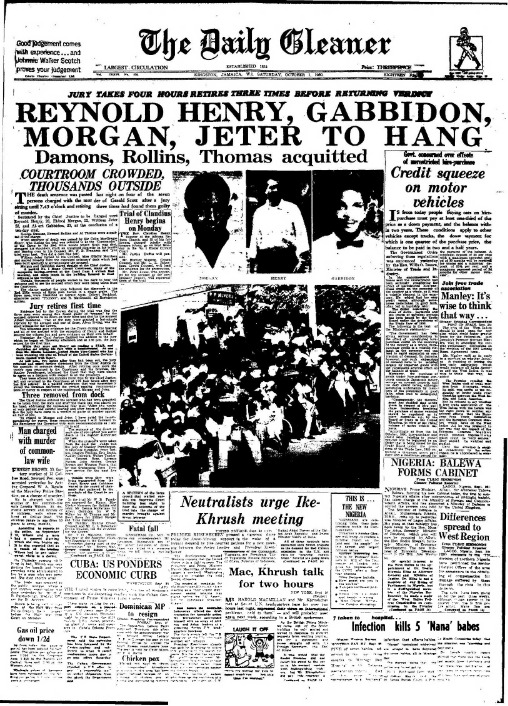
October King is arrested at sit in at Rich's department store in Atlanta and is sentenced to 4 months hard labor for violating a suspended sentence he received for a 1956 traffic violation.
October 27 King is released on a $2, 000 bond.
Howell is arrested for Ganja at Tredegar Park, Spanish Town and sent to Bellevue.
November Du Bois attends the inauguration of Nnamdi Azikiwe as the first African Governor of Nigeria.
King publishes his autobiography.
1961 January 17 Patrice Lumumba is murdered.
February 6 The edifice of Africa Hall is named by the Emperor who dedicates it to the service of the African people.
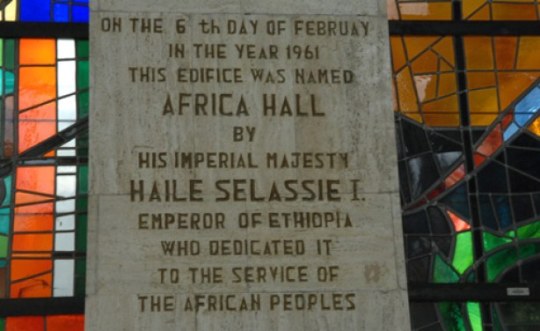
March 29 Wednesday The Daily Gleaner.
CONDEMNED MEN ACCEPT CHRISTIAN MINISTRATION IN DEATH CELL
HENRY, GABBIDON HANGED
Pastor says Reynold finally accepted ‘God was love, not hate’
GARVEY HIS LAST WORD
‘THE LORD IS MY LIGHT’ GABBIDON
AFTER SEVERAL penitent session with Christian Ministers, Reynold Henry and Albert Gabbidon walked to the gallows at 8.30 o’clock yesterday morning, paying the price for the murder of one of three Rastafarians 10 months ago near Red Hills.
“I die for Marcus Garvey,” were the last words of Henry, a naturalized American, aged 27, and son of the Rev. Claudius Henry, now serving a ten year term for treason felony.
“The Lord is my light,” said Gabbidon as he stood on the platform waiting for hangman Alan Whonder to pull the lever at St. Catherine Prison, Spanish Town.
Taking his forty second walk to the gallows beside condemned men, Rev. J. J. Carter Henry, Baptist Pastor, administered the last sacrament to the two.
Two Sister sof Mercy visited Henry last Monday afternoon and, as a result, Fr. T Curran, S.J. OF Spanish Town went to Death Row later in the day and gave Henry final Roman Catholic rites. The Sisters said they consoled and tried to strengthen Henry who was very penitent.
The sisters remembered Henry who attended a Roman Catholic school during his youth in Jamaica.
Henry also saw an Anglican Minister Rev. J. D. Gentle of Spanish Town.
Shorty before they started the seven yard trek to the gallows, Henry shouted; “Morgan, Jeter I will meet you at 8:30 in the morning.” (today).
Gabbidon said; “Morgan, Quasim (meaning Howard Rollins who is also in Death Row) remember tomorrow before you die to say Lord have mercy on my soul.”
Henry’s parting words to his comrades were: “Today I shall be in Paradise.”
A few minutes before he had sighed: “I feel like committing suicide.”
NEAR FINAL DAY
Policemen patrolled the area around the prison as a crowd of about 500 grew restless on the main road nearby. A stirring hush indicated the 8:30 date with death, and several women cried openly as a prison warden pinned the death notice on the public side of the concrete wall signifying that Mr. George E. Morris, Superintendent of Prison, witnessed the hanging and Dr. G. A. McKenzie certified the end.
Rev. Carter Henry held a Press conference at his home 10 minutes after the execution. He said Henry was an atheist at first. He believed that the white men went to stole the lands of his forefathers and gave the Bible in exchange.Rev. Carter Henry added that Henry maintained his chief aim in returning to Jamaica was to gather an army to liberate Africa. He meant no harm to any one in the island.The middle aged pastor said Henry accepted God as the final day approached, after he had been told that God was love, not hate.He said Henry recited John 3:16 , inserting his name: “For God so loved this world that He gave His only begotten Son that I Reynold Henry shall not perish but shall have everlasting life.”“He was loyal to himself.” Rev Carter Henry said, solemnly.The pastor produced a sheet of paper on which he said Henry wrote; “Through Him I shall not die, I am fortunate; I can be no more resolute. No more! Thank God for His love and thank you too Rev. Carter. I am sorry I never met you before.”Henry then recited the passage from John and everyone sang the Hymn: “ There is no dark valley where Jesus comes to gather His loved ones.Jeter, Morgan follow todayEldred Morgan, a Jamaican and William Jeter, an American will be hanged today at 8:30 a.m. at the St. Catherine District Prison also for the murder of Gerald Scott.They were found guilty at the same trail as Reynold Henry and Albert Gabbidon of taking part in a common design to kill Scott.Yesterday morning the two men each had one scalded egg, one poached egg, two slices of toast and a cup of tea. They then smoked mentholated cigarettes, maintaining calm composure as eight strong wardens ried their hands. Then, blindfold, they were led to the gallows.Henry weighed 188 lbs, Gabbidon 162. On a signal from Mr. G .A. McKenzie, the Director of Prisons, the hangman pulled the lever. The platform collapsed.(Continued on PAGE 20)
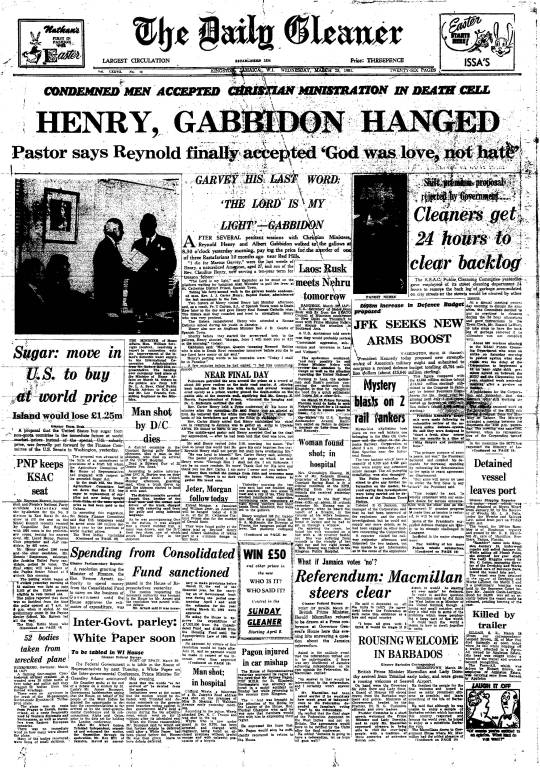
April 4 The Mission to Africa sent by the government of Jamaica leave. The Mission compromised of 9 men Mortimer Planno, representing the Ras Tafari movement, Bro Douglas Mac and Bro Filmore Alavarana, Rases from Eastern and Central Kingston, Mr. Westmore Blackwood of the UNIA, Dr. M. B. Douglas of the Afro Carribean League, Mr. Cecil George Gordon of the Ethiopian World Federation Inc. advisers Dr. L. C. Leslie, former Mayor of Spanish Town, medical practitioner and leader of the Mission and Mr. Victor Reid, journalist and author.
The Mission was sent to Africa to investigate the potential intake of emigrant's the Mission and include in its report the economy of each of the countries visited.
April 4 The Mission leaves Kingston for New York. The Mission spend 2 day at Hotel Theresa on 5th Avenue and are met at the Idlewilde Airport by members of the Ethiopian World Federation, UNIA and other Back to Africa Movements in New York.
They visit the Ethiopian Orthodox Church in New York, the HQ of the Ethiopian World Federation, New York and also visit the U.N.O. Buildings but are unsuccessful in obtaining sears in the balcony of its general assembly.
April 6 Thursday 21.30 The Mission leaves New York for London.
April 7 Friday 8.30 The Mission arrives in London. They stay at Hotel Londoner and visit the Ethiopian Embassy, the French Embassy and the Ghanaian Embassy to get visas for entry. They visit the Houses of Parliament and Westminster Abbey.
April 14 15.40 The Mission leave London for Khartoum via Rome
April 15 04.10 The Mission arrive in Khartoum and at 4.30 leave for Addis Ababa, Ethiopia.
The Mission arrive at Haile Selassie I airport via Asmara, Mack and Alvarange met 4 Ethiopian Orthodox Priests who fly with them to Addis Ababa.
April 16 Sunday 9.35 The Mission arrives at Addis Ababa on Ethiopian Airlines where they are met by Ato Getanen Haile Mariam, Chief of English and Commonwealth Department in the Ministry of Foereign Affairs, Waizaro Maize of the Ministry of Education.
The Mission visit His Holiness Abuna Basilios of the Ethiopia Orthodox Church.
April 17 visit Her Imperial Majesty Empress Menen handicraft and technical school for girls and boys where they see hand weaving of wool, cotton, working in gold and silver, carpentry, joinery, cabinet making and wood carving.
April 18 Tuesday The Missions meet with the Emperor is postponed until they meet more Government Ministers. They visit the Lions Den next to the Imperial Palace which contained 21 Lions.
April 19 The mission visit the Co operative Farm at Awasa and on the way stop at Shesshaminane, the land granted to the people of the, about 200 km from Addis.
April 20 The mission fly's by Ethiopia Airlines Special Charter Flight to Jimma in the province of Kaffa.
April 21 Planno, Doulas Mac and Alavarana meet the Emperor at the Imperial palace, Alvarana presents a carved wooden sculpture of a map of Africa and a painting of the Emperor, Brother Mac presents photographs taken of Ras Tafari brethren, and a painting of Navy island (Errol Flynn Island), Planno presents a ites gold and green scarf woven by he himself, a painting of the Emperor in his military uniform painting by Sporty Green.
April 22 The mission visits the Ministry of the Interior the Minister welcomes the delegation and says that.
In the afternoon to his residence where they have tea and honey.
April 23 Sunday 10.30 The Mission leaves Haile Selassie I Airport on Ethiopian Airlines for Lagos, Nigeria via Khartoum. The Mission stay at Ikeja Airport Hotel and go to the Federal Palace Hotel in Lagos.
22.30 The Mission arrives at Ikeja Airport by Ethiopia Airlines where they are met by Mr. Babatunde Harper of the Ministry of Internal Affairs and other officials and stay 2 days at Ikeja Airport Hotel.
April 24 Monday The Mission visit the Oba Adele, King of Lagos and in the afternoon visit the Yaba industrial estate.
April 26 Wednesday The Mission meet Nnamdi Azikiwe at State House in Lagos and also attend as ice show in Lagos as Azikiwe’s guests.
April 27 Thursday Sierra Leone gains its independence and the mission visits the furniture factory at Village also the Defacto Bread Factory Surelereat Yabba and drive around Ikoyi Village.
April 29 Saturday The Mission drives by car to Ibadan from Lagos and are accommodated at Green Sorings Hotel.
10.00 The Mission call on the Head of Service and Chief Secretary, and then the meet Acting Premier of Ibaddan Oba C. D. Akran in the Premier;s office.
13.00 A luncheon is held by the Government in honor of the Mission and in the afternoon they tour the University of Ibadan.
18:30 whilst in the city of Ibadan in Western Nigeria the Mission attend a cocktail party held in their honor by the West Indian residents at the home of Secretary General D. A. R. Alexander a Saint Lucian and Mrs. Alexander a Jamaican.
April 30 The mission drive to Illora farm settlement, 50 miles from Ibadan.
May 1 Monday 9:00 The Mission leave Ibadan by Nigerian Airlines for Kaduna in the north.
11:55 The mission arrive at Kaduna Airport and stay at Catering Rest House.
May 2 The Mission meets the deputy secretary to the Premier S.A.S. (S.D.S.) Premier office in the afternoon legislative and the Kaduna Textile Plant which employs 1, 600 workers.
May 3 The mission drives by car to the city of Zaria about 69 miles from Kaduna. Zaria is an ancient city with a wall of stone and mud all around it, the mission also visits.
May 4 Thursday 1.50 The Mission arrive in Enugu in the east by Nigerian Airlines, they stay at Catering Rest House and in the evening are invited to dinner by Dr Michael Okapard, Premier of Eastern Nigeria at the Premiers Lodge.
May 8 Monday 16.20 The Mission arrives in Accra, Ghana by Nigeria Airlines and stay at the Ambassador Hotel.
May 9 19.00 The Mission attend a reception held in their honor at the Ambassador Hotel where they meet the chiefs from various states in Ghana including 92 year old Nii Amoo Nakwa II Obtobolum Mensta the oldest chief in Ghana and also meet 2 Rastafarians brethren from Jamaica, Jackie Payne a compositor working at the Guenis press in Accra and another brother a machinist working at the Osageyfo Builders Brigade.
May 10 The Mission meets Nkrumah at Flagstaff House.
Nkrumah appoints a special committee to talk with the mission.
May 11 The Mission visits Tena Harbour, the home of the Black Star Line, 20 miles from Accra.
May 12 The mission visit a botanical garden and rest house and are given some seeds to suck which makes everything they eat taste sweet.
May 13 The mission visits the museum at Accra.
May 15 11:59 p.m. The mission leaves Ghana for Liberia.
May 16 1.00 am The Mission arrive in at Robertsfield airport in Liberia by PAA and drive through miles Firestone rubber plantations on the way to Ducor Palace Hotel in Monrovia where they stay.
May 18 The Mission meets President Tubman at his office, the majority report mentions the 1955 law which was enacted to "authorise the President to make arrangements for the care of immigrants to Liberia" enriched by a provision granting the issuing of free lands to immigrants, plus 3 months free housing to encourage immigration and for a bias to farmers, unmarried settlers recieve 10 acres of farm land and 1 town lot, married settlers receive 25 acres of farm land and 1 town lot.
Tubman speaks of Garvey and recalls his own state visit to Jamaica, says that Jamaica is overpopulated and needs easement, speaks of the founding of the republic and the immigration laws which have existed since then which permit people of African descent from the West Indies.
The foreign secretary, Mr. Grimes, who is of West Indian decent is also present at the meeting. The President also mentions Jamaicans Barnes, Corniffe, building contractor Clifford Brown and Miss Ethelda James, the country's first female Diamond miner as some of the West Indians who have contributed to Liberia.
1921 March 7 President C. D. B. King of Liberia arrives in New York as head of the United States Liberian Plenary Commissione to negotiate loan; 5 man UNIA welcoming delegation pays greeting call at Waldorf Astoria Hotel.
March 18 UNIA mission arrives in Monrovia.
March 22 UNIA delegates to Liberia hold official interview with Liberia’s acting president.
April UNIA delegates in Liberia stop "construction work" temporarily because of lack of funds.
Rev. F. Wilcom Ellegor, UNIA high commissioner meets with President C.D.B. King in Washington D.C., regarding UNIA Liberia construction loan.
1924 January
The delegation was led by Henrietta Vinton Davis and also included Princeton education Robert Piston and UNIA new attorney Milton Van Lowe.
1815 Cuffe arrives at Sherbrooke Island in present day Sierra Leone with 88 African Americans, the first.
1816 December The American Colonization Society is established.
1820 The ship Elizabeth sails from New York to Sierra Leone and Liberia with 88 emigrants.
and 22 emigrants die within 3 weeks from yellow fever and of the 4, 571 emigrants brought to Liberia between this year and 1843 only 1, 819 survive.
1821 Lt. Robert Stockton points a pistol to King Peter's head and King Peter sells Cape Mersurado.
1822 January 7 The emigrants brought to Sherbrooke Island by Cuffe are taken to Cape Mersurado by another ship and there they establish the city of Christopolis.
1824 The city of Christopolis is renamed Monrovia after President James Monroe.
1825 King Peter and other Kings sign a treaty with Ashmun granting land and are given 3 barrels of rum, 5 caskets
1829 March Jamaican John Brown Russworm co founder of the first African American owned newspaper, "Freedoms Journal" emigrates from the U. S. to Liberia.
1830 Russwurm found employment as the colonial secretary for the American Colonization Society serving from until 1834 and also worked as the editor of the Liberia Herald and served as the superintendent of education in Liberia's capital, Monrovia.
1836 Russwurm becomes the first black governor of the Maryland in Africa colony which was annexed Liberia in 1857.
1845 The ACS draft a constitution at a convention held in Monrovia.
1847 Liberia delcares its independence becoming an independent and sovereign Republic using the constitution.
1848 January 3 Joseph Jenkins Roberts is elected Liberia's first president.
1850 Edward Wilmot Blyden at age 18 emigrates to Liberia after unsuccessfully enrolling in Rutgers Theological College as well as 2 other theological colleges in the U.S.
Blyden had made the trip to the U.S. with the wife of John P. Knox, pastor of St. Thomas Protestant Dutch Reformed Church.
The state of Virginia begin to put aside $30, 000 every year until 1855 to support emigration.
Blyden edits the Liberia Herald and writes the column "A Voice From Bleeding Africa".
1859 May Martin Delany, whos own paternal descent was that of Goan sails from New York to Liberia where he and chiefs in the Abeokuta region make an agreement similarly to for to unused land.
Earlier that same year Delany had published parts of Blake: Or The Huts of America in response to Harriet Beecher Stowe’s "Uncle Tom’s Cabin", in which he criticized for inaccurately portraying the slaves as too passive although for cruelty of Southern slave owners, the first half of part one is serialised in The Anglo-African Magazine between January to July.
1860 Delany leaves Liberia for England and there he is honoured by the International Statistical Congress, and returns to America shortly.
1835 Delany attends the National Negro Convention in Philadelphia.
1843 Delany begins publishing The Mystery black newspaper, his articles and writings are reprinted in William Lloyd Garrisons "The Liberator" and also meets and marries Catherine A. Richards Pittsburgh.
1846 Delany is sued $650 for libel by an African American, Fiddler Johnson, who he accused in The Mystery newspaper of being a slave catcher.
1847 Delany meets Douglass and Garrison whilst they are in Pittsburgh on an anti-slavery tour and helps to put together Douglass’s first abolitionist newspaper "the North Star", printed from the basement of the Memorial African Methodist Episcopal Zion Church in Rochester, New York.
Delanys eulogy for Rev. Fayette Davis is widely redistributed.
Delany recruits for the Union Army. His son Touissant Louverture Delany serves with the 54th regiment.
1848 July Delany reports in the North Star that the jury in the Crosswait trial were instructed by U.S. District Court Justice John McLean to make it a punishable offence for a citizen to thwart those trying to “repossess” an alleged runaway slave, and as a result influences abolitionist Salmon P. Chase to remove McLean as a candidate of the Free Soil Party for the Presidency.
1850 Delany becomes one of the first of three black men to attend Harvard Medical School but is dismissed in after a few weeks on account of a race complaint from white students.
1852 Delany publishes his The Condition, Elevation, Emigration and Destiny of the Colored People of the United States, Politically Considered.
1854 Delany publishes The Origins and Objects of Ancient Freemasonry: Its Introduction into the United States and Legitimacy among Colored Men.
Delany, in the second Cholera outbreak stays behind in Pittsburgh to treat patients whilst many leave the city.
August Dealany leads the National Emigration Convention in Cleveland, Ohio.
and publishes his “Political Destiny of the Colored Race on the American Continent”.
1856 Delany moves his family to Chatham, Ontario, Canada.
1861 Delanys second part of part one series is published in Weekly Anglo African Magazine, he also prepares to embark Abeokuta but abandon plans abolition
Delany begins recruiting black men for the Union Army Rhode Island, Connecticut and Ohio raising thousands of enlistees many joining the new United States Coloured Troops, his son serving in the 54th regiment, writes to secretary of war Edwin Stanton
179, 000 black men enlisting in the U.S. Coloured Troops making up almost 10% of those serving in the Union army.
1865 February Delany meets Abraham Lincoln and proposes the creation of a Corps of black men led by black officers to attract blacks in the south.
Delany becomes the first black line field officer in the U.S. Army as well as the only black officer to receive commission of the highest rank of Major during the Civil War.
April 14 Delany invited to the War Department ceremony in Charleston, South Carolina, attending with Robert Vesey son of hanged black abolitionist, Denmark Vesey in ship named the Planter former slave Robert Smalls, Major Genral Robert Anderson Fort Sumter 1861, abolitionist William Lloyd Garrison Senator Warner speak, Massachusetts Senator Henry Wilson and abolitionist Henry Ward Beecher.
1861 Blyden becomes professor of Greek and Latin at Liberia College and becomes Liberian Secretary of State.
1877 Delany became chairman of the Liberian Exodus Joint Steamship Company finance committee they bought the 400 ton ship Azor.
1878 The following year the company made the voyage from Charleston to Monrovia with captain Harrison N. Bouey.
Blyden serves as President of Liberia College for 4 years.
1887 Blyden publishes his Christianity, Islam and the Negro Race.
1895 17 years later Bishop Henry Mc. Turner was responsible for two ships with 500 emigrants sailing to Liberia in 1895 and 1896.
The year after he also received James Mata Dwane of South Africa along with H. B. Parks and J. S. Flipper.
Dwane previously a South African Methodist Minister had left the Methodist Church to join the Ethiopian Church of Mangena Mokone in the same year and was also the founder of the Order of Ethiopia in the Anglican Church.
May 21 Sunday 14:05 The mission leaves Liberia by Air Liban for Freetown, Sierra Leone.
14:05 The mission arrive in Sierra Leone and are met at Queen Elizabeth II Quay in Freetown by representives of Government attended by the Parliamentary Secretary for External Affairs and his permanent Secretary.
The mission meets Prime Minister Dr. Sir Milton Margai at his office in Freetown.
The majority report mentions the Trelawny maroons from the parish of St. James in Jamaica who fought the British in 1795 in what is known as the second maroon war and were sent to Nova Scotia then to Sierra Leone some of the most well known of these maroons are John Jarret, Charles Samuel and his brother Captain Andrew Smith and Montague James.
August 3 A Council of War was held in Spanish Town at which martial law was declared.
"the members of which, considering the flying reports that Frenchmen and people of colour were conspiring with the Maroons, the danger of suffering the departure of troops ready to sail to St. Domingo, and the necessity of justifying Lord Balcarres in detaining them, concurred in opinion that it was requisite to establish martial law; which was accordingly proclaimed."
August 5 Balcarres on arriving at Landoverly orders the 6 Maroons captains into irons.
Correspondence send six Maroon Captains obtain passports from General Palmer Major James and son to go to Spanish Town and to the Governor. Balcarres Caskell to report to Spainish Town.
The six Maroons captains at Landoverly St. Ann half way between Trelawny and Spanish Town apprehended by the Commander of the militia and made to wait for Balcarres.
July the Maroons dismiss superintendent Caskell from his position.
July 17 39 Maroons go to Vaughans field a mile and a half from Trelawny Town to warn Caskell not to return to the town and to let know that they ready for the white people and that if the whites do not come to them they will come to the whites.
The war was caused after the Montego Bay magistrate had authorised the flogging of two Maroons by a slave the maroons had previously taken, these 2 maroons were flogged for killing two hogs belonging to a poor man the situation escalated when Alexander Lindsay, 6th Earl of Balcarres orders 6 maroon captains into irons.
July 18 The magistrates of the parish of St. James send a message to the Maroons requesting a meeting between 4 of their justices and 4 chosen maroons, Colonel Montague declines adding that they do not want to see Caskell back in Trelawny ever again wage war. ask for the reappointment of Major James.
July 28 At Green Vale penn where the Maroons had moved up to, three miles away from Trelawny, the Maroon Captain Smith delivers a letter to the Custos of Trelawny Mr. Tharp.
Trelawny John Jarret is chosen to jot down the Maroons greviances.
Governor Alexander Lindsay the 6th Earl of Balcarres imports 100 bloodhounds from Cuba.
December The Maroon surrender Walpole Balcarres deports 600 Maroons to Nova Scotia Sierrra Leone.
1795 April 22 the Brigands war in Saint Lucia, the British attack Fond Doux and Rabot in Soufriere ensuing in the Battle of Rabot.
April Balcarres is appointed to succeed Sir Adam Williamson as Lieutenant Governor of Jamaica.
February defeat a battalion of British trops.
June 19 the British leave the Island not returning until a year later.
1797 November The Battle of Rabot ends and recruited into the 1st West India regiment stationed in Sierra Leone.
1794 February 4 the National Convention, the first elected Assembly of the First Republic, under Maximilien Robespierre proclaim the abolition of slavery in all French colonies and giving civil and political rights to all Blacks.
February Charles No Flint Grey and Vice Admiral John Jervis arrive in the West Indies.
March 22 capture Fort Royal and Fort Saint Louis in Martinique.
March 24 The British capture Fort Bourbon.
March 30 The British reinstate the Old Regime, including the Monarchy's Supreme Council and the seneschal's courts of Trinité, Le Marin, and St Pierre. The Royalists regain possession of their properties and positions, slaves are returned to their masters, and emancipation was forbidden, whereas in the previous month the French had abolished slavery.
The government also promulgate an ordinance banning all gatherings of blacks or meetings by slaves, and banned Carnival. However, the British did require an oath of allegiance to the King of England.
April Jervis leads the invasion of St. Lucia, citadel More Fortune is captured and renamed Fort Charlotte.
L'Ouverture switches his allegiance and now fights on the side of the French, he raises the republican flag over the port of Gonaïves, he has all supporters of the Spanish to leave Cordon de l'Ouest and 4, 000 of his troops with those of General Étienne Maynaud de Bizefranc de Lavaux's with Jean-Jacques Dessalines and Henri Christophe as.
May 6 L'Ouverture ambushes the Spanish after mass at church at San Raphael.
May 19 Troops from Greys force under commander John Whyte arrive in Saint Domingue and march to Port Au Prince where 45 ships of sugar are docked in the harbour they take and allow Sonthonax and the French leave providing that they do not burn the ships.
May L'Ouverture and Sonthonax commanding in the North whilst André Rigaud in the South.
Rigaud takes the town of Léogâne by storm and drives the British back to Port-au-Prince.
December 25 Rigaud takes Tiburon in surprise attack.
Soldiers of the 104th, 105th, 111th and 112th regiments in Dublin and Cork, Ireland riot.
1795 July Treaty of Baseline.
Jean-François and Biassou fight with L'Ouverture until November when Francois leave's for Spain and Biassou for Florida.
November 16 The Great Push 30, 000 men on 200 ships under General Ralph Abercromby departs from Portsmouth but wrecked by a storm.
December 9 sets out again for Saint Domingue.
1796 March 17 General Ralph Abercromby arrives in Barbados and despatches a force under Major General Gordon Forbes to Port-au-Prince.
fails to take French held city of Leogane, French Commander Alexandre Peton uses guns of his fort to sink three ships in-line under Admiral Hyde Parker and then turns his guns to the British, Forbes retreats back to Port au Prince.
March 20 Commander Jean-Louis Villatte captures and overthrows French General Étienne Lavaux as part of his plan to form an allegiance with Governor Rigaud, L'Ouverture's troops arrive at Le Cap-Français to free him and drive Villatte out.
May Lavaux promotes L'Ouverture to commander of the West province.
Sonthonax arrives with the French third commission, promotes L'Ouverture to General and arranges for L'Ouverture's sons Placide and Issac to a school for children of colonials in France. highest ranking officer.
June 1 Only 198 of 1, 000 from the Sixty-sixth regiment and 515 of 1, 000 men of the Sixth-ninth regiment, have not been infected with yellow fever. September elections for colonial representatives of the French National Assembly take place.
Louveture Lavaux, Sonthonax is also elected.
October Lavaux leaves and Sonthonax stays.
1797 L'Ouverture appointed Lieutenant General second only to Lavaux himself.
5, 000 of Greys 7, 000 die from yellow fever and the Royal Navy 11, 000.
1787 Prior to all of this London's Black Poor, some of which were African American Loyalist’s were brought to Sierra Leone by the Committee for the Relief of the Black Poor and had founded Cline’s Town named after Emmanuel Kline a liberated Hausa, the town was later renamed Gransville Town after Granville Sharp.
Black Loyalist were former slaves who served for British military forces in the American War of Independence and were resettled in Nova Scotia by the British after they lost the war.
1 of the Black Regiments of the British Army were Lord Dunsmore's 800 man strong Ethiopian Regiment who fought in the Battle of Kemp's Landing and the Battle of Great Bridge
1775 November 7 Lord Dunmore, the Royal governor of Virginia makes his proclaimation calling for slaves to enlist in the British Army threatening them with liability of penalties.
November By the end of the month several hundred slaves have fled to Norfolk, Virginia to enlist, almost 2/3rds of those who were resettled in Sierra Leone were from Virginia.
1789 Granville Town is burned down by King Tom's successor, King Jimmy, another King of the local Temne people. The land on which the town was founded was purchased from Koya Temne sub schief King Tom and regent Naimbana.
1792 February 29-March 9 15 ships arrive at St. George Bay.
March 11 The site of Cline's Town is designated by the Sierra Leone Company as the site of the new settlement for African American Loyalists.
Nathaniel Gilbert.
1810 The African Institution ask the British Government for a land grant in Sierra Leone for Paul Cuffe.
1811 March 1 Cuffee arrives in Freetown, Sierra Leone.
April 7 Cuffe meets with black merchants including John Kizele, they write a petition to the African Institution and found the Friendly Society of Sierra Leone.
1815 Cuffe arrives at Sherbrooke Island in present day Sierra Leone with 88 African Americans, the first.
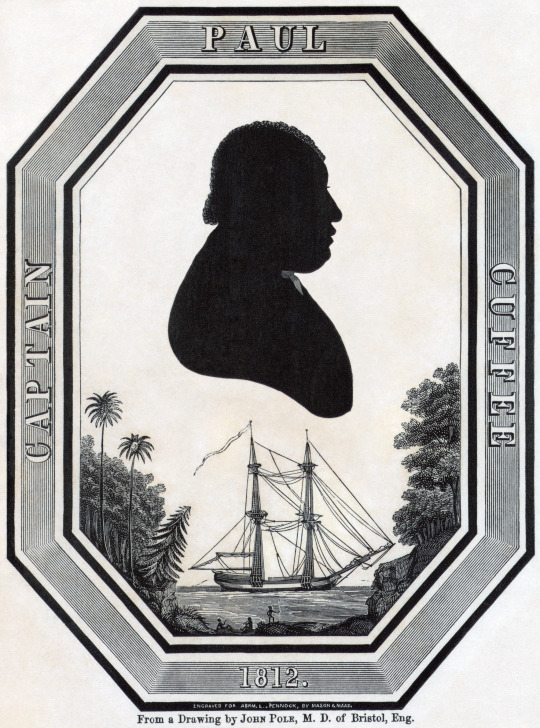

1775 Cuffe, at age 16 learns navigation.
In the late 1780s Cuffe's flagship was the 25-ton schooner Sun Fish and after that he bought the 40-ton schooner Mary.
1795 Cuffe sells the Mary and Sun Fish to finance construction of the Ranger, a 69-ton schooner launched.
1796 Cuffe launches the Ranger from his shipyard in Westport. Wanting a larger homestead
1799 February Cuffe pays $3,500 for 140 acres (0.57 km2) of waterfront property in Westport.
1800 Cuffe purchase a half-interest in the 162-ton barque Hero.
1806 Cuffe's largest ship, the 268-ton Alpha and his favorite ship, the 109-ton brig Traveller are built.
1811 Cuffe takes his favorite ship, the Traveller into Liverpool, The Times of London reports that it is likely the first vessel to reach Europe "entirely owned and navigated by Negroes".
May 23 Tueday The mission visit Njala Agricultural Centre and Training College.
May 24 The mission visits Marampa Iron ore mines and meet with a mission from the U.A.R. also touring the mines.

September The Emperor attends the Conference of Heads of State of Government of Non-Aligned Countries in Belgrade, FPR Yugoslavia, considered to be the founding conference of the Non-Aligned Movement.
Nkrumah.
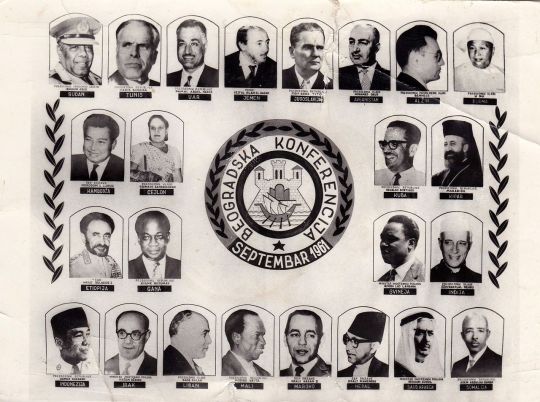
October Du Bois joins the Communist Party and travels to Ghana with his wife to take up residence there and to begin work on his African encyclopedia.
December 15 King works with the desegregation movement in Albany, Georgia.
December 16 King and Abernathy are among those arrested in demonstration in Albany, King declines bail until the city.
Prince Buster’s Oh Carolina by the Folkes Brothers is licensed to Blue Beat Records for release in the UK by Melodisc owned Emil Shalet.
Julius Winston Garvey receives M.D. degree and moves to the United States where he practices medicine in New York.
1962 April 27 LAPD officers beat members of Temple number 27 in South Central, Los Angeles.
A group of Muslims come outside, the disarm one of the officers, another officer is shot on the elbow by one of his colleagues.
Reinforcements of 70 officers arrive and raid the Mosque beating members and even shoot several members including William X Rogers, who is hit in the back and paralyzed for life and Ronald Stokes who is shot from behind whilst raising his hands over his head to surrender and is killed.
The coroner rules Stokes’s killing as being justified.
July 27 King after returning to Albany, Georgia is arrested at prayer vigil 45 days imprisonment or fine of $178, Kings chooses but has his fine paid by Billy Graham three days later with the help of Police Chief Laurie Pritchett.
August 10 King is released.
King works with the Gandi Society to give President Kennedy an executive order for civil rights.
October Brigadier P E Crooks of the Jamaica Defense Force submits a paper to the Governor General Kenneth Blackburne for consideration by the Defence Board in which Ras Tafari is identified as an international threat to Jamaica's national security by reasoning that ‘…the internal threat is well known to readers of this paper and does not require much elaboration. Briefly, Communism will try to infiltrate by all possible means and may make active use of the following: (i) Extreme racial organisations, eg, The Rastafarians approx strength 3,000-5,000, not organised but a potential danger’.
4 notes
·
View notes
Text
the signs as lawsuits with amusing names
ARIES: Robin Hood, et al. v. US Gov. Banking Industry, et al. (2012) Wikipedia: Robin Hood v. United States CV 12-01542 was a 2012 United States District Court for the Northern District of California civil court case. The case was brought by Robin Hood against the United States government for allegedly violating the Racketeer Influenced and Corrupt Organizations Act (RICO). Hood filed the case on behalf of himself and others, alleging that the United States government had violated the RICO act, stating that he and others had been "robbed by banks, attorneys and the government they tried to support". TAURUS: United States v. Ninety-Five Barrels Alleged Apple Cider Vinegar (1924)
Wikipedia: United States v. Ninety-Five Barrels Alleged Apple Cider Vinegar, 265 U.S. 438 (1924), was an in rem case in which the Supreme Court of the United States held that apple cider vinegar is mislabeled when that vinegar is made from dried apples. The label at issue indicated that the vinegar was made from "selected" apples. Douglas Packing Company, the manufacturer, admitted to dehydrating fresh apples and then re-hydrating the apples with pure water to produce vinegar. GEMINI: Memoirs v. Massachusetts (1966) Wikipedia: To be declared obscene a work of literature had to be proven by censors to: 1) appeal to prurient interest, 2) be patently offensive, and 3) have no redeeming social value. The book in question in this case was Fanny Hill (or Memoirs of a Woman of Pleasure, 1749) by John Cleland and the Court held in Memoirs v. Massachusetts that, while it might fit the first two criteria (it appealed to prurient interest and was patently offensive), it could not be proven that Fanny Hill had no redeeming social value. CANCER: United States ex rel. Gerald Mayo v. Satan and His Staff (1971)
Wikipedia: Gerald Mayo, a 22 year old inmate at Western Penitentiary in Pittsburgh, filed a claim before the United States District Court for the Western District of Pennsylvania in which Mayo alleged that "Satan has on numerous occasions caused plaintiff misery and unwarranted threats, against the will of plaintiff, that Satan has placed deliberate obstacles in his path and has caused plaintiff's downfall" and had therefore "deprived him of his constitutional rights."
In his decision, U.S. District Court Judge Gerald J. Weber first noted that the jurisdictional situation was unclear. While no previous cases had been brought by or against Satan and so no official precedent existed, there was an "unofficial account of a trial in New Hampshire where this defendant filed an action of mortgage foreclosure as plaintiff", a reference to the short story "The Devil and Daniel Webster". Judge Weber suggested that the Devil (who had claimed in that story to be an American), should he appear, might have been therefore estopped from arguing a lack of personal jurisdiction. In this context, the Court noted that Satan was a foreign prince, but did not have occasion to address whether, if sued as a defendant, he would be able to claim sovereign immunity from suit. Ultimately, the Court refused the request to proceed in forma pauperis because the plaintiff had not included written instructions for how the U.S. Marshal could serve process on Satan. LEO: United States v. One Solid Gold Object In Form of A Rooster (1967)
Quartz: On a blazing hot afternoon in July 1960, three armed US marshals raided a casino lobby in Sparks, Nevada, and proceeded to seize a golden statue of a rooster. Invited onlookers jeered and hissed as the agents confiscated the statue, whose attorney decried a “colossal miscarriage of justice.”
The renegade fowl in question was a nine-and-a-half-inch-tall, 14-pound bird made of solid 18-karat gold. Prior to his arrest, his preferred roost had been in a lighted glass display case at the Nugget Casino in Sparks, Nevada, where he had taken up residence in 1958, helping to promote The Golden Rooster Room, a newly opened restaurant at the fast-growing Nugget, which served fried chicken as its signature dish. The metal bird was now a defendant in a Federal complaint brought by Treasury Department, entitled United States of America v. One Solid Gold Object in Form of a Rooster. Unbeknownst to the bird, he had become the latest–and most severe–action taken by a federal government that was terrified of running out of gold. VIRGO: United States v. Article Consisting of 50,000 Cardboard Boxes More or Less, Each Containing One Pair of Clacker Balls (1976)
Wikipedia: United States v. Article Consisting of 50,000 Cardboard Boxes More or Less, Each Containing One Pair of Clacker Balls, 413 F. Supp. 1281 (D. Wisc. 1976), is a 1976 United States District Court for the Eastern District of Wisconsin decision regarding a requested order from the United States government to seize and destroy a shipment of approximately 50,000 clacker balls under the Federal Hazardous Substances Act because children could hit themselves with the balls.
LIBRA: United States v. 11 1/4 Dozen Packages of Articles Labeled in Part Mrs. Moffat’s Shoo-Fly Powders for Drunkenness (1941) Wikipedia: United States v. 11 1/4 Dozen Packages of Articles Labeled in Part Mrs. Moffat’s Shoo-Fly Powders for Drunkenness, 40 F. Supp. 208, was a 1941 US federal court case heard in the United States District Court for the Western District of New York, alleging the misbranding of a putative cure for alcohol intoxication. The action's unusual name results, in part, from the customs of cases with in rem jurisdiction, and refers to 135 packages of the containers used to hold the powder. This case was one of the first actions taken by the United States Food and Drug Administration.
Mrs. Moffat’s Shoo-Fly Powders for Drunkenness, manufactured by M. F. Groves' Son & Co., was a product popular in the 19th century, alleged to be an effective antidote for drunkenness. The powder was tartar emetic, antimony potassium tartrate, which induces vomiting. By 1939, the product was considered a Mickey Finn, and criminal convictions had been obtained for some sellers for selling unlabelled poisons. SCORPIO: I Am The Beast Six Six Six of the Lord of Hosts in Edmond Frank MacGillivray Jr. Now. I Am The Beast Six Six Six of the Lord of Hosts IEFMJN. I Am The Beast Six Six Six of the Lord of Hosts. I Am The Beast Six Six Six of the Lord of Hosts OTLOHIEFMJN. I Am The Beast SSSOTLOHIEFMJN. I Am The Beast Six Six Six. Beast Six Six Six Lord v. Michigan State Police, et al. (1990) SAGITTARIUS: Marcus v. Search Warrant of Property at 104 East Tenth Street, Kansas City, Missouri (1961)
Wikipedia: An unusual in rem case heard by the Supreme Court where the named object was not the seized property (11,000 magazines, books, and still photos seized from a wholesaler by the Kansas City Police Department for allegedly being obscene) but the warrant under which it was seized. Since all the government agents involved were indisputably acting within the law as it stood, the only way for the petitioner to challenge the constitutionality of the seizure was to name the search warrant itself as defendant.
CAPRICORN: United States v. International Brotherhood of Teamsters, Chauffeurs, Warehousemen and Helpers of America, AFL-CIO; Commission of La Cosa Nostra; Anthony Salerno, also known as Fat Tony; Matthew Ianniello, also known as Matty the Horse; Anthony Provenzano, also known as Tony Pro; Nunzio Provenzano, also known as Nunzi Pro; Anthony Corallo, also known as Tony Ducks; Salvatore Santoro; Christopher Furnari, Sr., also known as Christie Tick; Frank Manzo; Carmine Persico, also known as The Snake, also known as Junior; Gennaro Langella, also known as Gerry Lang; Philip Rastelli, also known as Rusty; Nicholas Marangello, also known as Nicky Glasses; Joseph Massino, also known as Joey Messino; Anthony Ficarotta, also known as Figgy; Eugene Boffa, Sr.; Francis Sheeran; Milton Rockman, also known as Maishe; John Tronolone, also known as Peanuts; Joseph John Aiuppa, also known as Joey Aiuppa, also known as Joe Doves, also known as Joey O’Brien; John Phillip Cerone, also known as Jackie Cerone, also known as Jackie the Lackie; Joseph Lombardo, also known as Joey the Clown; Angelo LaPietra, also known as The Nutcracker; Frank Balistrieri, also known as Carl Angelo Deluna, also known as Toughy; Carl Civella, also known as Corky; Anthony Thomas Civella, also known as Tony Ripe; General Executive Board, International Brotherhood of Teamsters; Jackie Presser, General President [and other officers including sixteen Vice Presidents]; In re Application LXXXVI of the Independent Administrator, Leroy Ellis, Appellee v. Roadway Express, Inc., 3 F.3d 634 (2d Cir. 1993). AQUARIUS: United States v. One Lucite Ball Containing Lunar Material (One Moon Rock) and One Ten Inch by Fourteen Inch Wooden Plaque (2001) Wikipedia: The Honduras Apollo 17 "goodwill moon rocks" plaque display, which was presented to the people of the Republic of Honduras in 1973 by President Nixon, came into the possession of retired colonel Roberto Agurcia Ugarte some time after 1993 and before 1995 in an illegal manner. It is unclear how Ugarte obtained it. Some speculate that he was inspired to steal the Honduras Apollo 17 "goodwill moon rocks" plaque display with the 1 gram moon rock because of the $442,500 selling price at a Sotheby's auction in December 1993 for a Russian sample of three tiny lunar pebbles weighing 0.2 grams that could only be seen under a microscope. Ugarte put the plaque up for sale, covering the stars of the Honduras flag to give the impression that the NASA wooden plaque display could have come from one of several Central American countries (as many have the same colors on their flags). He eventually found a buyer for it, a fruit distributor named Alan Rosen, who bought it for what he claims was $50,000 at the time. A lawsuit filed against Rosen in 2001, United States v. One Lucite Ball Containing Lunar Material (One Moon Rock) and One Ten Inch by Fourteen Inch Wooden Plaque, went on trial and was settled in 2003. As a result of the trial, Rosen forfeited the Honduras Apollo 17 lunar sample plaque display, which was ultimately presented to Honduran President Ricardo Maduro on February 28, 2004. PISCES: South Dakota v. Fifteen Impounded Cats (2010)
Lowering the Bar: The Supreme Court of South Dakota grappled with legal issues arising from an officer's decision to impound fifteen cats he found roaming around a woman's car. In a split decision, the justices rejected the woman's arguments that the evidence was insufficient to support the cat seizure and that said seizure violated her constitutional rights.
#lawsuits#case names#in rem juridiction#court cases#law#the signs#the signs as#zodiac#astrology#aries#taurus#gemini#cancer#leo#virgo#libra#scorpio#sagittarius#capricorn#aquarius#pisces
80 notes
·
View notes
Text
Here is a list of the names and ages of the victims which can be found at https://trianglefire.ilr.cornell.edu/victimsWitnesses/victimsList.html
Adler, Lizzie, 24
Altman, Anna, 16
Ardito, Annina, 25
Bassino, Rose, 31
Benanti, Vincenza, 22
Berger, Yetta, 18
Bernstein, Essie, 19
Bernstein, Jacob, 38
Bernstein, Morris, 19
Billota, Vincenza, 16
Binowitz, Abraham, 30
Birman, Gussie, 22
Brenman, Rosie, 23
Brenman, Sarah, 17
Brodsky, Ida, 15
Brodsky, Sarah, 21
Brucks, Ada, 18
Brunetti, Laura, 17
Cammarata, Josephine, 17
Caputo, Francesca, 17
Carlisi, Josephine, 31
Caruso, Albina, 20
Ciminello, Annie, 36
Cirrito, Rosina, 18
Cohen, Anna, 25
Colletti, Annie, 30
Cooper, Sarah, 16
Cordiano , Michelina, 25
Dashefsky, Bessie, 25
Del Castillo, Josie, 21
Dockman, Clara, 19
Donick, Kalman, 24
Driansky, Nettie, 21
Eisenberg, Celia, 17
Evans, Dora, 18
Feibisch, Rebecca, 20
Fichtenholtz, Yetta, 18
Fitze, Daisy Lopez, 26
Floresta, Mary, 26
Florin, Max, 23
Franco, Jenne, 16
Friedman, Rose, 18
Gerjuoy, Diana, 18
Gerstein, Molly, 17
Giannattasio, Catherine, 22
Gitlin, Celia, 17
Goldstein, Esther, 20
Goldstein, Lena, 22
Goldstein, Mary, 18
Goldstein, Yetta, 20
Grasso, Rosie, 16
Greb, Bertha, 25
Grossman, Rachel, 18
Herman, Mary, 40
Hochfeld, Esther, 21
Hollander, Fannie, 18
Horowitz, Pauline, 19
Jukofsky, Ida, 19
Kanowitz, Ida, 18
Kaplan, Tessie, 18
Kessler, Beckie, 19
Klein, Jacob, 23
Koppelman, Beckie, 16
Kula, Bertha, 19
Kupferschmidt, Tillie, 16
Kurtz, Benjamin, 19
L'Abbate, Annie, 16
Lansner, Fannie, 21
Lauletta, Maria Giuseppa, 33
Lederman, Jennie, 21
Lehrer, Max, 18
Lehrer, Sam, 19
Leone, Kate, 14
Leventhal, Mary, 22
Levin, Jennie, 19
Levine, Pauline, 19
Liebowitz, Nettie, 23
Liermark, Rose, 19
Maiale, Bettina, 18
Maiale, Frances, 21
Maltese, Catherine, 39
Maltese, Lucia, 20
Maltese, Rosaria, 14
Manaria, Maria, 27
Mankofsky, Rose, 22
Mehl, Rose, 15
Meyers, Yetta, 19
Midolo, Gaetana, 16
Miller, Annie, 16
Neubauer, Beckie, 19
Nicholas, Annie, 18
Nicolosi, Michelina, 21
Nussbaum, Sadie, 18
Oberstein, Julia, 19
Oringer, Rose, 19
Ostrovsky , Beckie, 20
Pack, Annie, 18
Panno, Provindenza, 43
Pasqualicchio, Antonietta, 16
Pearl, Ida, 20
Pildescu, Jennie, 18
Pinelli, Vincenza, 30
Prato, Emilia, 21
Prestifilippo, Concetta, 22
Reines, Beckie, 18
Rosen (Loeb), Louis, 33
Rosen, Fannie, 21
Rosen, Israel, 17
Rosen, Julia, 35
Rosenbaum, Yetta, 22
Rosenberg, Jennie, 21
Rosenfeld, Gussie, 22
Rothstein, Emma, 22
Rotner, Theodore, 22
Sabasowitz, Sarah, 17
Salemi, Santina, 24
Saracino, Sarafina, 25
Saracino, Teresina, 20
Schiffman, Gussie, 18
Schmidt, Theresa, 32
Schneider, Ethel, 20
Schochet, Violet, 21
Schpunt, Golda, 19
Schwartz, Margaret, 24
Seltzer, Jacob, 33
Shapiro, Rosie, 17
Sklover, Ben, 25
Sorkin, Rose, 18
Starr, Annie, 30
Stein, Jennie, 18
Stellino, Jennie, 16
Stiglitz, Jennie, 22
Taback, Sam, 20
Terranova, Clotilde, 22
Tortorelli, Isabella, 17
Utal, Meyer, 23
Uzzo, Catherine, 22
Velakofsky, Frieda, 20
Viviano, Bessie, 15
Weiner, Rosie, 20
Weintraub, Sarah, 17
Weisner, Tessie, 21
Welfowitz, Dora, 21
Wendroff, Bertha, 18
Wilson, Joseph, 22
Wisotsky, Sonia, 17
On this day in 1911, 146 people lost their lives in the Triangle Shirtwaist Factory fire.
These people were mostly women and many were girls, who had been incredibly brave and faced public violence and police brutality when they had led strikes in order to unionize because they knew how dangerous the working conditions were, but were forced to return to work to support themselves and their families after an impressive strike that did lead to safer conditions to many others in the textile industry.
Minutes before their Saturday Shift would have ended, a fire started on the men's floor below them as a result of an incident with a cigar(ette) and the fiber-dense environment. These men contacted the owners two floors above them, so they and the bosses made it out, but in their worry they forgot to warn the floor in between.
These poor people had less of a chance of escape because in their greed the bosses feared that the women might steal thread, so they locked one of the doors and inspected purses every day. The tiny overcrowded elevators couldn't carry many people, and some either jumped or were pushed down the elevator shaft as the panic spread and the unsafe fire escape fell away from the building as people tried to climb down to safety. By the end of it, bodies were piled high beneath the widows and not all were recognizable.
This tragedy could have been avoided, but greed got in the way. Building codes have changed in America to prevent this from happening again, but even today people working in the fashion industry are exploited around the world. Please, remember those who died and consider why we still must change things for the better today.
#thought(s) from yours truly#dress history#history#anniversary#triangle shirtwaist factory#rest in peace#fashion industry
37 notes
·
View notes
Text
youtube
Fanny Mendelssohn Hensel (1805-1847) - Sechs Lieder, Op. 1: No. 3 Warum sind denn die Rosen so blass · ·
Benjamin Appl · James Baillieu
0 notes
Text
Ingmar Bergman, il vampiro del cinema mondiale. A 100 anni dalla nascita l’opera che racconta le perversioni di un genio
Nella stessa pagina. Walt Disney. Un pinguino. L’impossibile. Le baccanti. Forse soltanto lui sa tenere insieme l’inconciliabile, nel suo continuo conciliabolo con gli orrori, esteta nello scavare l’uomo con unghie di selce, con spietatezza che ride. Un tempo Ingmar Bergman si vedeva e si leggeva in tutte le salse. Con una specie di malmostosa venerazione. Poi l’epoca delle idee – più che delle ideologie – s’è volatilizzata, sostituita dall’era dello svacco. Al posto del Posto delle fragole s’è affacciato Drive In e Colpo grosso, a Fanny e Alexander e Persona preferiamo l’Isola dei famosi e l’epica post-erotica di YouPorn. Voglio dire. 100 anni dopo – Ingmar Bergman nasce nel luglio del 1918 – il grande regista svedese, tra i cinque-sei titani della cinematografia mondiale (gli altri sono: Fellini, Kurosawa, Tarkowskij, Hitchcock, Kubrick), che ha costruito il conturbante e castrante immaginario di un paio di generazioni, pare morto definitivamente. Lo consultano i cinefili, lo snobbano i deficienti, non si vede più in tivù, dove bisognerebbe inaugurare una campagna per il buon costume estetico (ma perché non proiettano più i grandi film in prima serata?). Eppure, in Lanterna magica – stampa Garzanti, autobiografia di Bergman, di scintillante bellezza – Bergman tiene insieme gli inconciliabili. “Vidi molti anni fa un cartone animato di Walt Disney che raccontava la storia di un pinguino che voleva andare nei mari del sud. Finalmente si mise in viaggio e arrivò su un’isola coperta di palme, nel mare caldo, azzurro. A una palma inchiodò fotografie dell’Antartide. Sentiva nostalgia di casa e si mise diligentemente all’opera per costruirsi una nuova barca e ritornare indietro. Io sono come quel pinguino… Voglio essere fastidioso, irritante e indefinibile. L’impossibile è troppo attraente, e io non ho niente da perdere. Non ho nemmeno niente da guadagnare, a parte il gentile plauso di qualche giornale… Le baccanti testimoniano il coraggio di spezzare le forme”. Genio nella volgarità e nel sublime, nel superbo e nel superiore.
*
Nel 2015 ho scritto un testo per il teatro che s’intitola Ingmar. Il testo partecipò al Premio Riccione per la drammaturgia, ottenendo parole di benedizione e di lode da Christian Raimo (!) e poco altro. Il testo si basa – in modo del tutto superficiale, come start all’immaginazione scenica – su Tre diari, la folgorante testimonianza pubblicata da Bergman nel 2004, tre anni prima della morte (edita in Italia da Iperborea). I ‘tre diari’ sono quelli scritti, dall’ottobre del 1994 al maggio del 1995, da Ingmar Bergman, dalla quinta moglie, quella definitiva, Ingrid von Rosen, e dalla loro figlia, Maria, intorno alla malattia – e alla morte, per tumore – di Ingrid. I diari commuoveranno il lettore. A me interessa l’operazione, cinica, di ‘montaggio’ operata da Bergman. Un uomo che senza pudore ha mostrato l’ano della propria biografia alla latrina pubblica. In mezzo, c’è un intricato roveto di tradimenti. “Ingrid e io ci incontrammo per caso nel tardo autunno del 1957”, racconta Ingmar. Entrambi sposati, entrambi con figli. Nel 1959 – lo stesso anno in cui Bergman si sposa con la pianista Käbi Laretei – nasce Maria, figlia dell’unione fedifraga tra Ingmar e Ingrid. La figlia viene cresciuta nella famiglia di Ingrid, dal marito di costei, ignaro, Jean-Carl von Rosen. Nel frattempo, la relazione va avanti clandestinamente, anche quando Bergman se la fa con Liv Ullmann – da cui ha una figlia, nel 1966. Infine, i due si sposano nel 1971. “Quando avevo ventidue anni tutt’a un tratto Ingmar mi rivelò di essere il mio vero padre. Fu a dir poco sconvolgente”, scrive Maria. Dentro questa trama di rapporti minati dalla falsità ma che tentano l’innocenza, si muove quel testo. Il testo, scritto per due attori di grandissimo valore come Silvio Castiglioni (incredibile voce&corpo di testi letterari, finissimi, da Manzoni a Zanzotto, da Silvio D’Arzo a Jack London, da Vasilij Grossman a Osip Mandel’stam) e Daniela Giovanetti (già donna-icona di un regista come Antonio Calenda, ha lavorato in grandi produzioni come il Re Lear con Roberto Herlizka, per lei Claudio Magris ha scritto Lei dunque capirà) sarà in scena, anche con la voce di Norina Angelini, al Teatro degli Atti di Rimini, mercoledì prossimo, 28 marzo, ore 21.
*
Prima del lavoro teatrale, ci fu un libro. Il libro s’intitola Ingmar Bergman. La vita sessuale di Franz Kafka. La base del libro (edito nel 2015, per un piccolo editore di Ravenna, in semiclandestinità) è il soggetto ritrovato di un film di Bergman sulla ‘Vita sessuale di Franz Kafka’. Bergman era ossessionato dall’opera di Kafka, da quel lucido esercizio di crudele purezza. Il soggetto fu scritto nel 1995, pubblicato dalla rivista svedese Fadren nel 2008. Il soggetto inizia così: “Kafka chiamava ‘Dio’ il proprio cazzo. ‘A Dio si sacrifica la cosa più importante – la castità è voluttuosa – la vergine coincide con la lussuria’, scrive Kafka in un pensiero del 1909. Alla prima erezione, di cui si accorse intorno ai sei anni, capì che l’uomo aveva dei limiti e che poteva essere descritto geometricamente. Pensò ai testicoli come a vertebre e al cazzo eretto come alla spina dorsale: ‘l’importante è invertebrato’, appuntò, anni dopo”. Insieme al testo, ritrovai i quaderni di Bergman, scritti intorno a quegli anni e pieni di spunti. “Quasi subito l’amore diventa razzia, una ricerca di certezze – ed è il corpo che vanifica le nostre buone intenzioni, i sorrisi, le fatidiche menzogne. Il corpo è un luogo di verità”; “Ho sempre amato ferocemente, come in punto di morte, come non avessi nulla. Così ho tramutato il tradimento in verità”; “Che Kafka si unisca alle proprie sorelle non è una oscenità. Per anni ho desiderato la mia sorellastra: è un dovere nei riguardi della propria stirpe. I re prolificavano solo nel claustrofobico recinto della propria famiglia. In questo modo si eredita il carisma. Per questo i padri dovrebbero avere la priorità nello sverginare le figlie”. Il libro, prevedibilmente, fu adornato dall’indifferenza. La scrittura, forse, è parola che tramortisce il vuoto.
*
Una tracotante ingordigia di vita, in una vita segnata fin da subito dal destino di indagare la morte, dopo averla svogliatamente scansata. “Quando nacqui, nel luglio 1918, la mamma aveva la spagnola, io ero in cattive condizioni e fui battezzato d’urgenza in ospedale… Fui inoltre colpito da una serie di malattie indefinibili e non riuscivo proprio a decidermi se volevo vivere”.
*
Di un artista come Bergman non mi interessa l’opera cinematografica, sviscerata dagli esperti. M’importa il peso dell’uomo. Si capisce dunque che l’artista è un voyeur, che ama per raffinare la propria opera, che usa le reazioni degli altri per dare verve alla propria ricerca. L’artista è un assatanato d’amore – ha bisogno di ‘sentire’, i sentimenti sono la sua eroina. In fondo, l’artista è un vampiro. Succhia la vita degli altri per nutrire la propria immaginazione. Che schifo. Certo. Per creare una forma bella occorre sacrificare l’uomo. Forse è questa l’innocenza. (d.b.)
*
Pubblichiamo un brano dal testo teatrale ‘Ingmar’.
Ingmar Bergman e la moglie, Ingrid von Rosen, sono seduti ciascuno su una sedia. Le loro sedie sono una contro l’altra, si fronteggiano di schiena. Può darsi che nel corso dell’azione Ingmar sia quello che si alza e si muove, esagitato, esagerato; mentre Ingrid resta sulla sedia, compiendo atti lenti e miracolosi, incide un legno, ad esempio, disegna.
Ingmar: Il matrimonio è una lotta pattuita. Prima si uccide silenziosamente, attraverso la tattica dei sorrisi e dei baci sulla fronte. Poi si ingurgita, si digerisce, si caga. Matrimonio, amore: tutto cagato via, un cibo delizioso dà come compimento la merda. L’altra volta, l’ho detto, a Ingrid, “sai qual è l’unico atto erotico che ci cinge? Tagliare l’insalata. Ti vedo fremere perché speri che mi mozzi il dito. Il sangue riuscirà a farmelo tornare duro. E tu, tu saprai elevare le tue voglie che ora come ora sembrano sponsorizzate dal catechismo della Chiesa cattolica”. L’unico godimento nello sposarsi è trasformare il sussiego in sottomissione, obbligare la sposa all’osceno, provocare il disgusto. E quando lei mi avrà finalmente odiato con tutta se stessa, riconquistarla. Lasciarsi alla lascivia della dolcezza. Lisciarla. Farsi domestico struzzo, seppellire i rancori nella sabbia, lasciarsi frollare. Concedergli di credere che sia lei ad avere dominio, ora. Leccarla. Come un cane. Viziare le sue voglie, camminando per la stanza a quattro zampe. E quando lei riconoscerà di non amare altra carne che la mia… Corromperla, distruggerla, sottometterla. Si ama soltanto nella lotta – soltanto torturati dalla colpa.
Ingrid: Una, cinque, dieci, cento donne Ingmar ha portato a Faro, pronunciando, come solo lui sa fare, dolcissime parole di eternità. A me ha detto le stesse parole che ha detto a Liv e a Gun, a Else e a Ingrid, a Liv e a Bibi, senza badare al contenuto di quelle parole, ma soltanto alla risposta, alla reazione che ho avuto, che abbiamo avuto. E valutando, giudicando queste diverse reazioni, come un dio vendicativo ma sorridente valuta le pene da distribuire a seconda della voracità con cui gli si obbedisce. Faro è bellissima, violenta. Ingmar ha bisogno di un’isola, della clausura, di rapporti esclusivi. Ingmar avvolge come una coperta sul viso. Soffoca, uccide. Ma alla fine è lui il primo a fuggire. Non ha bisogno degli uomini perché pensa, maliziosamente, di saper creare tutti i possibili sentimenti e pensieri dell’umanità. Ingmar pretende gli applausi anche quando sbaglia, anche quando è orribile. Come si può non compatire un uomo che per girare un film ha bisogno di dominare, psicologicamente e fisicamente, tutte le attrici? In modo che loro, in scena, come prostitute, come amanti perdute, debbano convincere il regista di essere le più belle, le più desiderabili, le più brave – anche a letto? “Il set di Ingmar è un harem”, ha detto Bibi Anderson. “Mi ha fatto sentire una donna immortale – e una troia”, ha aggiunto. La differenza tra me e loro, le troie, è che io so tutto, amo la mostruosità di Ingmar. Lui crede di usarmi – io lo accontento. Ingmar crede di spiarmi, ma sono io a compiere una spietata indagine del suo cuore.
Ingmar: …poi, scagliare la propria donna, la proprietà, nelle braccia altrui. Ho sempre fatto così, non serve ad altro sposarsi: intagliare la vergine, renderla puttana. Ho costretto mia moglie agli altri, la obbligavo a odiarmi, per cedere alle seduzioni di altri uomini. Pensava di compiere vendetta – allietando, al contrario, i miei desideri. Posso amare solo sconfiggendo. Se so che mia moglie se la fa con il mio attore, allora sono stimolato a riconquistarla, altrimenti, la tradisco. E faccio in modo che si accorga dei miei tradimenti. Mi interessano le reazioni degli uomini, questi esseri mortali che vivono di emozioni sterili, fugaci, inutili. Ho bisogno, mi nutro delle reazioni emotive degli uomini. Io non ho emozioni. “Legione di ghiacciai”, così mi chiamava Else, pessima poetessa, per altro. Mi toccava gli occhi, chiamandoli “Antartide”. Sicuramente, l’arte rende immortali. Ma anche inabili ad amare, incapaci alla pietà, incuneati nell’indifferenza. Per questo, ho fame di umani. Voglio capire cos’è un uomo – io sono disumano, lo so. D’altronde, Dio ha avuto bisogno di incarnarsi per osservare meglio la propria creatura, ha deciso di farsi uccidere dalla propria creatura per sperimentare l’ebbrezza dell’abisso. Tramite l’ostia pensiamo di mangiare Dio – ma è lui, da dentro, a divorarci.
Ingrid: Io lo so, lo so che Ingmar attira verso lo schifo. Insegna a mentire. Obbliga alla doppiezza. E questo rende la relazione più eccitante. Ogni donna desidera essere posseduta da Ingmar, si inchina a ogni sua voglia. Che avessi un ottimo marito e tre figli e una vita tutto sommato invidiabile non importava: Ingmar rende possibile ogni trasgressione, rende quotidiano l’illecito, è irresistibile. Sapevo che aveva già avuto quattro mogli, sapevo dei figli, riconosciuti o meno. Sapevo tutto, so tutto. E ho coscientemente deciso di perdermi. Decisi di corrispondere allo schema predisposto da Ingmar – mettermi incinta prima che mi fossi separata. E poi sposarmi. Ha sempre fatto così – sapevo anche questo. Ingravida la propria preda, come gli animali, come i lupi, Ingmar. Come il capobranco che deve ingravidare tutte le lupe per avere il pieno dominio del territorio. Così, soltanto messo alle strette, sotto la minaccia di un feto, Ingmar si sposa. Ingmar non sceglie, “la vita mi ha scelto – lascio a lei la scelta della mia vita”. dice lui. In fondo, è un pavido.
Ingmar: L’opera d’arte accade solo da un nucleo radioso di rabbia. Bibi e Liv sono state eccelse per un’unica ragione: le ho scopate entrambe. Stavo con una dopo essere stato con l’altra. La rivalità ha fatto emergere la loro arte: non recitavano, lottavano. Per avermi. Per possedere il mio compiacimento, il mio sorriso. “Voglio avervi entrambi”, dissi. Le avevo chiuse in una sala. Buia. Vuota. I nostri guaiti ingigantiti dalle pareti sembravano una corsa di lupi. Due donne nude, un uomo, una stanza cieca, buia: non è questa la Genesi, l’inizio, il principio del mondo? Loro si mordevano. Ricordo che Bibi azzannò Liv al collo; Liv mozzò un pezzo di labbro a Bibi. Le scopai insanguinate. Il giorno dopo le feci portare all’ospedale, con la scusa di un “incidente di lavorazione”. La luce le trasformò, tornarono angeliche. Di una bellezza diafana, violentata. Se non fosse per il loro antagonismo, per la mia cattiveria, non esisterebbe Persona, un capolavoro.
L'articolo Ingmar Bergman, il vampiro del cinema mondiale. A 100 anni dalla nascita l’opera che racconta le perversioni di un genio proviene da Pangea.
from pangea.news https://ift.tt/2ITmLBA
1 note
·
View note
Photo

National Moonshine Day
In honor of National Moonshine Day, which is observed the first Thursday of June, we bring you this story from the archives.
During the time of prohibition, moonshine was manufactured not just in the back woods of the Appalachian mountains, but in the city of Los Angeles. One of the problems with making moonshine in a big city is that you are stuck indoors in a house or an apartment. You need fire to heat your mash so the alcohol can turn into vapor, which in turn is a hazard. Sometimes a fire can start from other sources in the house not from making moonshine. This is what happened to Sam and Fannie Rosen. A fire broke out in their home and when the fire department showed up they found a still. The fire department called the police and they in turn called Federal Prohibition Agents who got a warrant. What W. J. Mosher Prohibition Agent found in the Rosen’s house at 1015 ½ Sunset Blvd. was 1 still, three 5 gallon kegs, one 10 gallon keg liquor, one 5 gallon glass jug jackass brandy, 1 ¾ gallon glass jug wine, 1 funnel, and 2 pieces of rubber tubing.


This is documented in United States District Court for the Southern District (now the Central District) of California criminal case number 3833, United States of America vs. Fannie Rosen and Samuel Rosen. During the trial, the Rosens claimed that all the items found in their house were not owned by them. However, the four pictures presented as evidence of the still were brought in by the police and staged by the photographer. In closing arguments the prosecutor stated that if the Rosens claimed the items found in their house were not theirs, then why did they petition the court to have the items returned to them? Fannie Rosen and Samuel Rosen were both convicted of violation of the National Prohibition Act of October 28, 1919, to-wit manufacturing and unlawful possession of property and apparatus designed for the manufacture of intoxicating liquor. They both got six months in jail and a $500 fine.

Series: Criminal Case Files 1907 – ca. 1998. Record Group 21: Records of District Courts of the United States 1685 - 2009. https://catalog.archives.gov/id/294957
138 notes
·
View notes
Text
JONAS KAUFMANN

MEIN WEIN (DVD/ BLU-RAY)
Jonas Kaufmann presenta su concierto homenaje a Viena y se sumerge en las famosas melodías de la ciudad donde nacieron el vals y la opereta. Disponible en DVD/Blu-ray y álbum visual el viernes 2 de octubre.
Reserva el DVD aquí
Resérvalo en formato Blu-ray aquí
Mira un adelanto aquí
‘My Vienna’ es el tributo personal de Jonas Kaufmann a las famosas melodías de la ciudad donde nacieron el vals y la operetta, y llega tras el lanzamiento del álbum de otoño de 2019.
El film de 100 minutos contiene el concierto de Jonas Kaufmann en el Wiener Konzerthaus con segmentos de estilo documental donde el artista explora el fascinante legado de música ligera de la ciudad.
Su concierto del Wiener Konzerthaus incluye canciones vienesas muy conocidas como “Wien, Wien nur du allein”, “Im Prater blühn wieder die Bäume” y “Sag beim Abschied leise Servus”. También canta escenas de las famosas operettas “The Merry Widow”, “Wiener Blut” y “Die Fledermaus”, entre otras, junto a la soprano Rachel Willis-SØrensen en los duetos.
La película se presentará en cines a nivel mundial en verano y otoño con el título de “My Vienna”. Toda la información aquí: https://www.jonaskaufmannmyvienna.com/
Las fechas de presentación en cines en España es el 15 de Septiembre:
El vídeo completo también estará disponible en formato álbum visual en Apple music
TRACKLISTING
OPENING 1:21
JOHANN STRAUSS II (1825–1899)
2 DRAUSSEN IN SIEVERING BLÜHT SCHON DER FLIEDER 3:41
from DIE TÄNZERIN FANNY ELSSLER
3 COMMENTARY
BY JONAS KAUFMANN 1:36
JOHANN STRAUSS II
4 DIESER ANSTAND, SO MANIERLICH (Uhrenduett)* 5:14
from DIE FLEDERMAUS
5 COMMENTARY 1:38
JOHANN STRAUSS II
6 OVERTURE 8:53
7 SEI MIR GEGRÜSST, DU HOLDES VENEZIA (Korngold version) 3:07
8 ACH, WIE SO HERRLICH ZU SCHAUN (Lagunenwalzer) 3:39
from EINE NACHT IN VENEDIG
9 COMMENTARY 2:14
JOHANN STRAUSS II
10 WIENER BLUT, WIENER BLUT* 6:33
from WIENER BLUT
11 COMMENTARY 0:48
JOHANN STRAUSS II
12 TIK-TAK. POLKA SCHNELL OP. 365 3:02
EMMERICH KÁLMÁN (1882–1953)
13 ZWEI MÄRCHENAUGEN 5:30
from DIE ZIRKUSPRINZESSIN
14 COMMENTARY 0:42
ROBERT STOLZ (1880–1975)
15 IM PRATER BLÜHN WIEDER DIE BÄUME 3:27
16 COMMENTARY 0:58
ROBERT STOLZ
17 GRUSS AUS WIEN. MARSCH OP. 898 3:26
ROBERT STOLZ
18 WIEN WIRD BEI NACHT ERST SCHÖN 4:03
19 COMMENTARY 0:43
HERMANN LEOPOLDI (1888–1959)
20 IN EINEM KLEINEN CAFÉ IN HERNALS 4:15
HANS MAY (1886–1958)
21 HEUT IST DER SCHÖNSTE TAG IN MEINEM LEBEN 2:13
22 COMMENTARY 0:56
RUDOLF SIECZYŃSKI (1879–1952)
23 WIEN, DU STADT MEINER TRÄUME (WIEN, WIEN, NUR DU ALLEIN) 6:51
FRANZ LEHÁR (1870–1948)
24 ES LEBT’ EINE VILJA, EIN WALDMÄGDELEIN (Vilja-Lied)* 6:48
25 LIPPEN SCHWEIGEN* 4:16
from DIE LUSTIGE WITWE
CARL ZELLER (1842–1898)
26 SCHENKT MAN SICH ROSEN IN TIROL* 2:21
from DER VOGELHÄNDLER
27 COMMENTARY 1:08
PETER KREUDER (1905–1981)
28 SAG BEIM ABSCHIED LEISE »SERVUS« 2:46
GEORG KREISLER (1922–2011)
29 DER TOD, DAS MUSS EIN WIENER SEIN** 3:55
30 APPLAUSE & CREDITS 1:13
JONAS KAUFMANN tenor
RACHEL WILLIS-SØRENSEN soprano*
JOCHEN RIEDER conductor & piano**
PKF – PRAGUE PHILHARMONIA
youtube
0 notes
Text
JUDY GARLAND
Judy Garland à l'instar d'un James Dean ou d'une Marilyn Monroe, est entrée trop tôt dans la légende du cinéma. Personnalité fragile et dépressive, elle n a pas pu surmonter les profondes crises qui entraînèrent sa fin prématurée. Par sa carrière exceptionnelle commencée dès sa plus tendre enfance aussi bien que par sa mort précoce, à quarante-sept ans à peine, Judy Garland est devenue un mythe du monde du spectacle. Perfectionniste et tourmentée, elle fut la victime de son propre succès, payant de sa santé et, pour finir, de sa vie l'adulation qu'elle suscita. Sans la moindre pitié. elle fut, toute sa vie durant, jetée en pâture au public avide de tout savoir sur elle. Un talent précoce Judy Garland, de son vrai nom Frances Gumm, naquit à Grand Rapids, dans le Minnesota, le 10 juin 1922. Ses parents, Frank et Ethel Gumm, avaient été acteurs de variétés avant de devenir exploitants d'une salle de cinéma. C'est peut-être pour réaliser, à travers ses enfants, ses ambitions déçues que la mère de Judy organisa avec ses deux filles aînées un spectacle qui servait d'attraction entre les deux films au programme. Comme le veut la légende, Baby Gumm (c'est ainsi qu'on avait baptisé Frances, la plus jeune et la plus choyée des enfants) débuta à l'âge de trois ans, soulevant l'enthousiasme du public par son interprétation de "Jingle Bells". A onze ans, Baby Gumm changea de nom. Les deux sœurs, en effet, engagées pour un spectacle à Chicago, se laissèrent convaincre par le présentateur George Jessel d'adopter le nom de Garland qui, selon lui, sonnait beaucoup mieux que Gumm. Un peu plus tard, Frances adopta le prénom de "Judy", emprunté à une chanson à succès de Hoagy Carmichael. Pour faire entrer ses filles dans le monde du cinéma, Mme Gumm n'avait pas ménagé sa peine. Pourtant, en 1929, tout ce qu'elle avait pu obtenir, c était de les voir apparaître dans un court métrage intitulé : The Old Lady and the Shoe. L'engagement à la MGM En 1934, cependant, Judy Garland avait été pourvue d'un agent, Al Rosen, et comptait un admirateur, au moins, au sein de la MGM, en la personne de Joseph Mankiewicz. L'un et l'autre réussirent à lui obtenir une audition. Judy fut paraît-il convoquée séance tenante et il n'est pas douteux que cette invitation impromptue stimula la vivacité et la spontanéité de la petite fille. Elle frappa d'ailleurs à tel point Ida Koverman, l'influente secrétaire de Louis B. Mayer, et Jack Robbins, le talent-scout de la firme, qu'ils rappelèrent immédiatement le pianiste du studio, Roger Edens et Mayer lui-même, qui lui offrit un contrat sans lui faire faire le moindre bout d'essai, ce qui constitue un fait sans précédent ! Les jours de Judy à la MGM commencèrent sous de tristes auspices avec la mort soudaine de son père. En dépit de ce deuil, Judy qualifiera plus tard cette période de "perpétuel éclat de rire". Les lois sur le travail des mineurs imposant aux firmes qui les employaient de pourvoir à leur instruction, Judy rejoignit sur les bancs de classe Lana Turner, Jackie Cooper, Deanna Durbin et Freddie Bartholomew. Ses premières apparitions à l'écran remontent à cette époque ; elle donna la réplique à Deanna Durbin dans le court métrage Every Sunday (1936) et la même année, dans Pigskin Parade, un musical ayant pour cadre un collège où trois chansons chantées par Judy Garland lui valurent quelques critiques favorables. La MGM n'avait pas de projets très précis pour elle. On doit à Roger Edens d'avoir mis sur pied le plan qui permit à la grande compagnie de réaliser enfin quelle mine d'or Judy pourrait représenter pour elle : pour la party que donna Clark Gable sur le plateau de Parnell (La Vie privée du tribun, 1937) à l'occasion de son trente-sixième anniversaire, Edens conçut une version spéciale de "You Made Me Love You" confiant à Judy Garland le rôle d'une fidèle admiratrice écrivant à son idole, prétexte au délicieux monologue "Dear Mister Gable", Clark Gable fut profondément touché et la MGM inséra immédiatement ce numéro dans Broadway Melody of 1938 (Règne de la joie, 1937) : Judy Garland était lancée ! Judy joua ensuite dans Thoroughbreds Don't Cry (1937) partageant la vedette avec Mickey Rooney (ils devinrent dès lors de très bons amis) puis dans Listen, Darling (1938) avec Freddie Bartholomew. Dans Everybody Sing (1937), elle apparut au côté de Fanny Brice, la grande vedette de Broadway. Dans tous ces films, Judy Garland chantait et le public se laissait prendre par le charme de sa voix dont l'étendue, la force et la maturité lui permettaient d'interpréter de grands morceaux du répertoire, comme "My Man" de Fanny Brice. Toutefois, les directeurs musicaux de la MGM, où déjà Arthur Freed était d'un grand poids, préférèrent exploiter son humour et sa vivacité dans des chansons du genre "Swing, Mr. Mendelssohn" et "Zing Went the Strings of My Heart". Elle retrouva ensuite Mickey Rooney avec lequel elle tourna trois films de la série Andy Hardy. La grande occasion C'est d'ailleurs au cours de ces années que l'occasion lui fut offerte de s'affirmer définitivement et de lier son nom à une chanson qui deviendra, tout au long de sa carrière, son grand cheval de bataille : "Over the Rainbow". En 1900, la collection de livres pour enfants "Oz", écrits par L. Frank, apparut sur le marché où elle fit rapidement partie des best-sellers. En 1925, le cinéma s'en empara, tournant une version muette de "The Wizard of Oz" avec Larry Semon et Oliver Hardy. La MGM était disposée à engager deux millions de dollars pour réaliser une nouvelle version en couleurs avec Shirley Temple pour vedette mais celle-ci, indisponible, fut alors remplacée par Judy Garland. Après quelques difficultés et hésitations sur le choix du metteur en scène, Victor Fleming se vit confier la réalisation du film : il fut tourné en 1939, la même- année que Gone With the Wind (Autant en emporte le vent). Grâce à son scénario intelligent, aux excellents effets techniques et à l'interprétation de premier ordre, The Wizard of Oz (Le Magicien d'Oz) fut une réussite totale et, surtout, le premier grand succès personnel pour Judy. Le public l'aimait énormément pour sa gaîté, son entrain, sa spontanéité et sa nature attachante. Toutefois, sa vie privée était troublée par l'extrême tension à laquelle la toute jeune actrice était soumise. Son irrésistible joie de vivre se manifestait également par un robuste appétit. Mais son métier exigeait un sévère contrôle de sa ligne et c'est à contrecœur qu'elle dut se soumettre aux prescriptions de Mayer qui veillait personnellement à son régime. Judy découvrit en outre que même sa vie privée était placée sous contrôle et que l'ami fidèle avec lequel elle était allée vivre dans un petit appartement était payé par la firme pour l'espionner et rendre compte de chacun de ses gestes ! Il en allait d'ailleurs de même avec sa mère. Pour combattre son irrésistible appétit, on lui administra un nouveau médicament alors en vogue, la benzédrine, dont les effets euphorisants étaient combattus à l'aide de somnifères. Cette lamentable "thérapie" engendra une "dépendance" qui fut le cauchemar de sa vie et entraîna sa mort tragique. Le public en avait fait son idole, et la MGM l'exploita à fond, sans le moindre ménagement. Dès lors Judy n'allait plus cesser de payer le tribut de son succès, toute vie privée devenant impossible. Mayer et la MGM ne cachèrent d'ailleurs même pas leur déception quand, en 1941, elle épousa le chef d'orchestre David Rose et de toute évidence ne firent rien pour sauver l'inévitable faillite de son mariage. . Au cours des trois années qui suivirent, Judy Garland tourna plusieurs comédies musicales à succès : Ziegfeld Girl (La Danseuse des Folies Ziegfeld, 1941), For me and my gal (Pour moi et ma mie, 1942), Presenting Lily Mars (Lily Mars, vedette) et Thousands Cheer (La Parade aux étoiles), l'un et l'autre de 1943. Meet Me in St. Louis (Le Chant du Missouri), réalisé en, 1944 demeure aujourd'hui encore, la plus séduisante comédie musicale de la MGM. Dans ce film, outre. ses inoubliables chansons, Judy Garland apporte la preuve d'un talent dramatique qui s'est alors affirmé avec force, et s'intègre parfaitement dans l'interprétation évoquant une famille américaine du début du siècle. Le réalisateur de Meet Me in St. Louis était Vincente Minnelli que Judy épousait au mois de juillet 1945 avec, cette fois, l'approbation unanime de la MGM (Liza, leur fille, naîtra l'année suivante mais l'accouchement ne fera qu'aggraver l'état de santé de Judy). Cette même année, Minnelli la dirigea dans The Clock (L'Horloge) ; c'était la première fois que l'actrice abandonnait la comédie musicale, puis dans un bref épisode de Ziegfeld Folies (1946) et dans The Pirate (1948) dont le premier rôle masculin revenait au jeune Gene Kelly. Vers la névrose Malgré la fatigue de plus en plus évidente de Judy, la MGM se montra peu compréhensive avec sa vedette, acceptant très mal son état de santé, son manque de ponctualité, ses absences répétées et ses constantes sautes d'humeur. Elle tomba malade pendant la tournage du Pirate et dut être hospitalisée dès la fin du tournage. La MGM mit à son programme une autre comédie musicale Easter Parade (Parade du printemps, 1948) conçue pour le couple Garland-Kelly mais ce dernier, indisponible à la suite d'un accident, fut remplacé par Fred Astaire. Tourné dans la bonne humeur, ce film fut un répit pour Judy ; elle devait d'ailleurs retrouver Fred Astaire pour The Barkleys of Broadway (Entrons dans la danse, 1949) mais sa santé à nouveau chancelante l'en empêcha. L'interruption fut de courte durée, cependant, puisqu'elle devait tourner encore Words and Music (Ma vie est une chanson, 1948), biographie musicale des compositeurs Rodgers et Hart ainsi que In the good old summertime (Amour poste restante, 1949), un remake de The Shop around the corner (Rendez-vous, 1940). Au comble de l'épuisement, elle réussit encore à enregistrer quelques chansons pour Annie Get Your Gun (Annie, reine du cirque), mais elle fut remplacée au moment de tourner le film parce qu'il n'était désormais plus possible de compter sur elle. Non sans peine, elle réussit à terminer Summer Stock (La Jolie Fermière, 1950). Elle y apparut épaissie mais au prix de terribles efforts parvint à retrouver sa ligne et son allant pour l'éblouissant numéro final : "Get Happy". On recourut ensuite à elle pour remplacer une autre vedette, June Allyson qui attendait un enfant et ne pouvait par conséquent tourner Royal Wedding (Mariage royal, 1951). Judy eut le temps d'enregistrer les chansons puis elle retomba malade et la MGM renonça à l'utiliser. Ses rapports avec la grande firme cinématographique qui, depuis sa quatorzième année, lui avait servi de famille, prenaient fin. Les quatre années qui suivirent la virent entreprendre une nouvelle carrière dans la chanson et le spectacle de variétés. Le 9 avril 1951, elle inaugurait la saison au Palladium de Londres et s'engageait au mois d'octobre suivant pour un programme de dix-neuf semaines au Palace de New York qui appartient maintenant à l'histoire de la comédie musicale. Une fois de plus, malheureusement, l'effort qu'elle dut soutenir eut raison de sa santé et l'obligea à renoncer à plusieurs représentations. Divorcée de Vincente Minnelli, Judy Garland épousa Sidney Luft (deux enfants, Lorna et Joey naquirent de cette nouvelle union) avec lequel elle fonda une maison de production : la Transcorna. Pour la Warner, la Transcorna réalisa A Star Is Born (Une étoile est née, 1951). Réalisé par George Cukor, metteur en scène de grande classe et de goût qui savait parfaitement tenir compte des qualités artistiques et des problèmes de Judy, le film fut hélas "trafiqué" par la compagnie qui pratiqua d'abondantes coupures pour les remplacer par des éléments nouveaux (dont, entre autres, le mémorable numéro intitulé "Born in a Trunk"). Le film était le remake de A Star Is Born dirigé en 1936 par William Wellman. Avec Hollywood pour toile de fond, il avait été interprété par Janet Gaynor dans le rôle d'une jeune inconnue qui devient vedette après avoir été découverte. par une ancienne idole de l'écran sur le déclin (Fredric March), rôle repris par James Mason dans la nouvelle version. Entre les mains de George Cukor, l'histoire acquit une nouvelle dimension dans la mesure où elle se prêtait à l'évocation des dures expériences de Judy Garland dans le milieu hollywoodien. Le film consacra d'ailleurs, officiellement, le talent dramatique de l'actrice. Il mit également un terme à sa carrière cinématographique. Judy Garland fit une nouvelle fois une mémorable apparition dans Judgement at Nuremberg (Procès à Nuremberg, 1961) de Stanley Kramer et elle participa également à A Child is waiting (Un enfant attend, 1963), un film passionnant traitant des problèmes des enfants arriérés. La même année elle avait tourné à Londres I Could Go on Singing (L'Ombre du passé) de Ronald Neame : un mélodrame sans prétentions avec quelques numéros musicaux, dont le thème principal était le combat que se livrent une étoile du chant et son mari (Dirk Bogarde) pour la garde des enfants (une histoire très proche, d'ailleurs, de la réalité !) Dès lors, Judy Garland se consacra exclusivement aux concerts, suscitant toujours le fol enthousiasme de ses fans. Le soutien que lui apporta son public, sa chaleur, l'aidèrent sans nul doute à surmonter ses épreuves personnelles. Après avoir gagné une fortune que l'on pourrait estimer aujourd'hui à l'équivalent de huit millions de dollars, une mauvaise administration ne lui avait laissé que d'énormes dettes. Son état de santé empirait. Des représentations annulées, des assignations pour rupture de contrat, un mariage avec Mark Herron dont l'échec fut immédiat, un combat impitoyable avec Luft pour obtenir la garde de ses enfants, d'autres problèmes encore alimentaient sans arrêt la chronique, laissant la jeune femme profondément meurtrie. Jusqu'à la fin, cependant, elle manifesta une extraordinaire volonté, arrivant même par moment à retrouver la forme éclatante de ses meilleures années. Remariée à l'acteur Mickey Deane, Judy sembla retrouver la sérénité... Mais elle était terriblement amaigrie et les épreuves aussi bien que les années avaient profondément marqué son visage. Le matin du 22 juin 1969, son mari la trouva morte dans leur appartement de Londres, victime, probablement, d'une trop forte dose de somnifère. A ses obsèques, James Mason qui avait tourné à ses côtés dans A Star Is Born, déclara avec émotion : « Aussi bien à son public qu'à ses amis, Judy est une femme qui a tant donné, et si généreusement, qu'il est impossible de la payer de retour. En effet, son besoin d'amour et d'affection était tel qu'il dépassait ce que chacun de nous aurait pu lui offrir. »
Judy Garland à l’instar d’un James Dean ou d’une Marilyn Monroe, est entrée trop tôt dans la légende du cinéma. Personnalité fragile et dépressive, elle n a pas pu surmonter les profondes crises qui entraînèrent sa fin prématurée. Par sa carrière exceptionnelle commencée dès sa plus tendre enfance aussi bien que par sa mort précoce, à quarante-sept ans à peine, Judy Garland est devenue un mythe…
View On WordPress
0 notes
Text
National Cheat Sheet: Fed holds interest rates steady, Compass halts expansion spree, Newseum sells for $373M … & more
Clockwise from top left: Federal Reserve keeps interest rates flat and vows to be ‘patient’ when it makes future rate decisions, resolution asks Google to address ‘diversity crisis’ and real estate-driven gentrification, Compass to slow down expansion after last year’s growth surge and Ginnie Mae asks some nonbank lenders to improve their metrics before it approves them.
Federal Reserve holds interest rates, vows to be ‘patient’ when it makes decisions Ending a string of increases, the Federal Reserve decided not to raise interest rates this week, which means the benchmark rate will for now remain between 2.25 and 2.5 percent. The Fed said in a statement that it would be “patient” when it comes to deciding on rate increases in the future, which could mean that the nation’s central bank will only raise rates once or twice this year and might not raise them at all in March, noted some analysts. Interest rates have gone up nine times since December 2015, and the recent increases have garnered criticism from President Donald Trump, who has blamed them for hurting the stock market. [TRD]
Compass CEO says brokerage to slow down its acquisition frenzy After expanding rapidly across the country, Compass is now taking a break. CEO Robert Reffkin said at an Inman conference this week in Manhattan that told the SoftBank Group-backed brokerage doesn’t plan to expand to any new markets in 2019, and will instead focus on its existing locales. Reffkin said he was happy with Compass’ recent launch in Dallas, but said openings in other cities didn’t go as smoothly, though he wouldn’t provide specifics. “For us, this year, we don’t want to spread ourselves thin,” Reffkin said. “Last year we did a bit.” He noted that Compass, which in recent months has sought to expand in the commercial space, also will not spend as much on acquisitions as it did in 2018. Compass expanded earlier this month in Colorado, a move that came on the heels of growth in California, Chicago and Seattle. [TRD]
Google resolution seeks to address ‘diversity crisis,’ real estate-driven gentrification Shareholders and employees at Google have asked the internet search giant to address its “diversity crisis” and change the way it buys real estate, BNN Bloomberg reported. In a resolution sent to the board of Alphabet Inc., Google’s parent company, the two groups said Google needs to implement reforms, some of which are tied to executive bonuses, as a result of real estate purchases that often end up displacing poorer residents. The resolution also maintained that Alphabet hasn’t “responded adequately to key demands” workers made when they staged a walkout this past fall. One employee told BNN Bloomberg that she was only staying with Google in an attempt to make a “positive difference” regarding the issues mentioned in the resolution. [TRD]
Ginnie Mae asks some nonbank lenders to improve metrics prior to approval The Government National Mortgage Association, better known as Ginnie Mae, is cracking down on nonbank lenders amid concerns that they may not be able to meet their financial obligations. The agency is asking a number of lenders to “improve certain financial metrics” before it lets them dole out mortgage bonds it has backed, new acting head Maren Kasper told the Wall Street Journal. Federal Reserve economists raised concerns about nonbank lenders in a paper last year, with one author, Karen Pence, asking “whether it is wise to concentrate so much risk in a sector of the economy that has little capacity to bear it and has a history, at least during the financial crisis, of going out of business.” Ginnie Mae’s move comes as shares in Fannie Mae and Freddie Mac are trading up as hedge funds speculate that the federal government’s decade-long conservatorship could finally end. [TRD]
MAJOR MARKET HIGHLIGHTS
Miami-Dade County developers set their sights on Opportunity Zones Opportunity Zones in Miami-Dade County saw $942 million in property sales between April and September of last year — a 25 percent jump from the same period in 2017, according to an analysis by The Real Deal. That statistic underscores an increased interest in the zones, which are part of a relatively new federal program that offers incentives to developers who invest in low-income areas. The U.S. government, emerging from a record-long shutdown, still hasn’t released all of its guidelines for the program, which may have led some investors and developers to hold off. “We are starting to run, but the gun hasn’t fired yet,” said Philip Rosen, chair of the real estate practice at the Becker law firm in Fort Lauderdale. [TRD]
Los Angeles property overlooking luxury hotel seeks $150M A 10.6-acre swath of land in Los Angeles has hit the market for $150 million — more than anyone has ever paid for a residential parcel in the city, Bloomberg reported. The property overlooks the Hotel Bel Air and includes three lots. A buyer could potentially build a home on each of them, according to the outlet. Domvs London and Junius Real Estate Partners bought the property back in 2014, spending “tens of millions” to improve it, Domvs president Barry Watts told the outlet, adding that the land is “shovel ready.” The property is being marketed by Douglas Elliman and London-based partner Knight Frank. [TRD]
NYC Council Speaker mulls mayoral run, won’t accept developers’ donations A little more than a year after New York City’s last mayoral election, the speaker of the New York City Council is considering a run for mayor — but he won’t accept contributions from real estate developers, lobbyists and their ilk if he does. Corey Johnson said this week that he was “thinking about” running in 2021, a race that could also include Bronx borough president Ruben Diaz Jr. — who has already officially declared he’ll run — and city comptroller Scott Stringer, who is expected to run. Johnson also said he won’t accept donations of more than $250 during his campaign. He recently expressed outrage over hedge fund billionaire Ken Griffin’s record-setting penthouse purchase. Johnson, of course, isn’t the first politician to swear off accepting real estate industry cash. [TRD]
Property taxes have millionaires fleeing New York, New Jersey The Empire State and the Garden State are hemorrhaging high net worth individuals due to a combination of volatile financial markets and capped deductions for state at local taxes, including property taxes, at $10,000, according to the Bergen Record. The newspaper, citing a new report from financial research firm Wealth-X, reported that New York City, Jersey City and Newark lost more than 5,700 individuals with liquid assets of $1 million to $30 million in the last year. Even middle-class New Jerseyans are mulling their options elsewhere, finding their money goes farther in places like Florida and Texas, according to the outlet. [TRD]
Newseum owner selling DC building to Johns Hopkins University The media industry might be struggling, and now a building erected to celebrate the First Amendment and freedom of speech is trading hands. Johns Hopkins University will buy the Newseum in Washington, D.C., for $372.5 million, according to the New York Post. The Freedom Forum, a nonprofit group based in the nation’s capital, reportedly decided to sell the museum to the school after a strategic review found that its operating costs were “unsustainable.” The Newseum, which has posted annual deficits for a decade, will continue to operate through the end of this year. After that, it remains unclear what will happen to the facility. Johns Hopkins plans to move its Washington-based programs into the 632,000-square-foot building. Freedom Forum chairwoman and CEO Jan Neuharth called the sale “a difficult decision, but… the responsible one.” [TRD]
In new ad, Tony Hawk makes dire prediction about traditional real estate agents A San Diego-based company that has a flat-free brokerage model has enlisted skateboarding star Tony Hawk to hawk its services, Inman reported. In the latest in a series of advertisements, Hawk and fellow skater Mike McGill talk about how Home Bay, which charges sellers a fee of between $2,000 to $7,500, saved McGill money when he was buying a house. After McGill claims Home Bay “makes the traditional real estate agent obsolete,” Hawk agrees. “Traditional real estate agents are going to go extinct when they hear about Home Bay,” the skater says. Home Bay CEO Ken Potashner has said the company plans to expand to 20 new states by the end of 2019. [TRD]
Chicago mayor says building inspectors can fix heating systems without landlord permission A deep freeze may have descended on Chicago, but the city’s outgoing mayor isn’t waiting for landlords to fix heating systems in rental buildings as bitterly cold temperatures move through the Midwest. Mayor Rahm Emanuel said this week that building inspectors would be allowed “to restore heat in buildings where landlords are failing to do their jobs,” without permission from the landlords themselves. Landlords are supposed to keep temperatures at 68 degrees or higher during the day and at least 66 degrees at night, but hundreds of tenant complaints indicate that hasn’t been the case during a frigid January. [TRD]
from The Real Deal Miami https://therealdeal.com/2019/02/01/national-cheat-sheet-fed-holds-interest-rates-steady-compass-halts-expansion-spree-newseum-sells-for-373m-more/#new_tab via IFTTT
0 notes
Photo

A Scorecard of those Responsible for the Economic Crash Gretchen Morgenson and Joshua Rosen have dug through all the mounds of conflicting information, "All's well" press releases, investigative reports that hit the problems of the time head on, and were subsequently buried, and research reports that were little more than home-grown "Atta boy" analysis, which were widely distributed, to find the dirt behind the economic mess we are in today. In going back to the beginnings, all the way to the '80's in some cases, they bring us the true foundation of the homeowner crisis. Important contributors are clearly identified in "Reckless Endangerment" including names, dates, times, and places. Go to Amazon
Slow read but well worth it ! Gretchen is a mainstream author from New York Times, but I really liked her book. If you take all the books on the financial crisis there is a lot of overlap; in other words, authors talking about the same thing. But her book has less overlap than any other book on the crisis like regarding the Basel capital requirements and how asset backed securities came with lower capital requirements which created a feeding frenzy of demand because these asset now freed up capital. It shows the insanity of banks. If sewage lowered capital requirements these guys would be in the porta john business tomorrow morning. These people are insane about their capital set asides. So, I learned a lot reading this book because it does have some depth. I read this thing about 2 mph; it's slow readin' -- took me about a week, but for me it was worth it. I had this book on my shelf for over 4 years from time I bought it til I actually read it. I dreaded reading it; it's not an easy read, but she sure did her homework. Very informative book. One thing I didn't like about it is no chapter titles. No table of contents. Never seen that before; maybe they are getting lazy over there at Henry Holt. Chapter titles ..... I thought that was the fun part. Also, she spends a lot of time talking about Fannie and Freddie. I think if F&F never bought one shoddy mortgage, you still would have had a financial crisis. But they certainly added fuel to feeding frenzy. I'm a financial crisis junkie - this is one of the better ones. Don't bother buying Too Big To Fail, it's a book that lost its editor; they're still lookin' for him. This book is just the right size; Well done, Misses Gretchen. Go to Amazon
Well-researched book. Honest analysis. Most accurate description of the Great Recession I have read. Go to Amazon
Find The Truth Five Stars Five Stars Five Stars Top-notch reporting Unfortunate by design Five Stars interesting read that will have you angry if you got stiffed in the housing market. Three Stars Reckless endangerment
0 notes